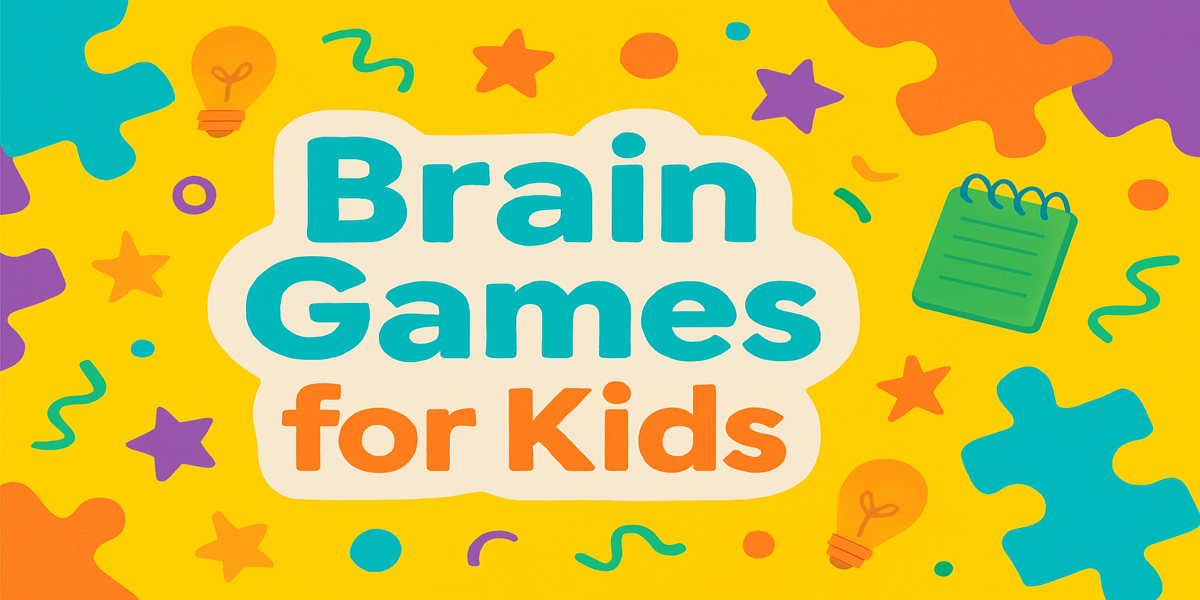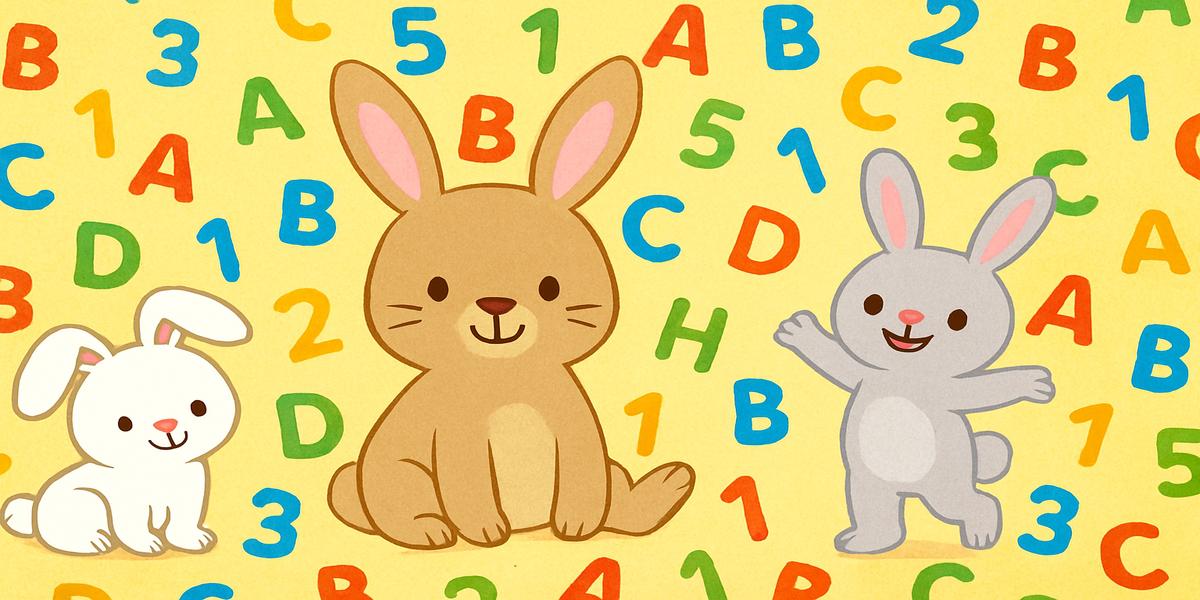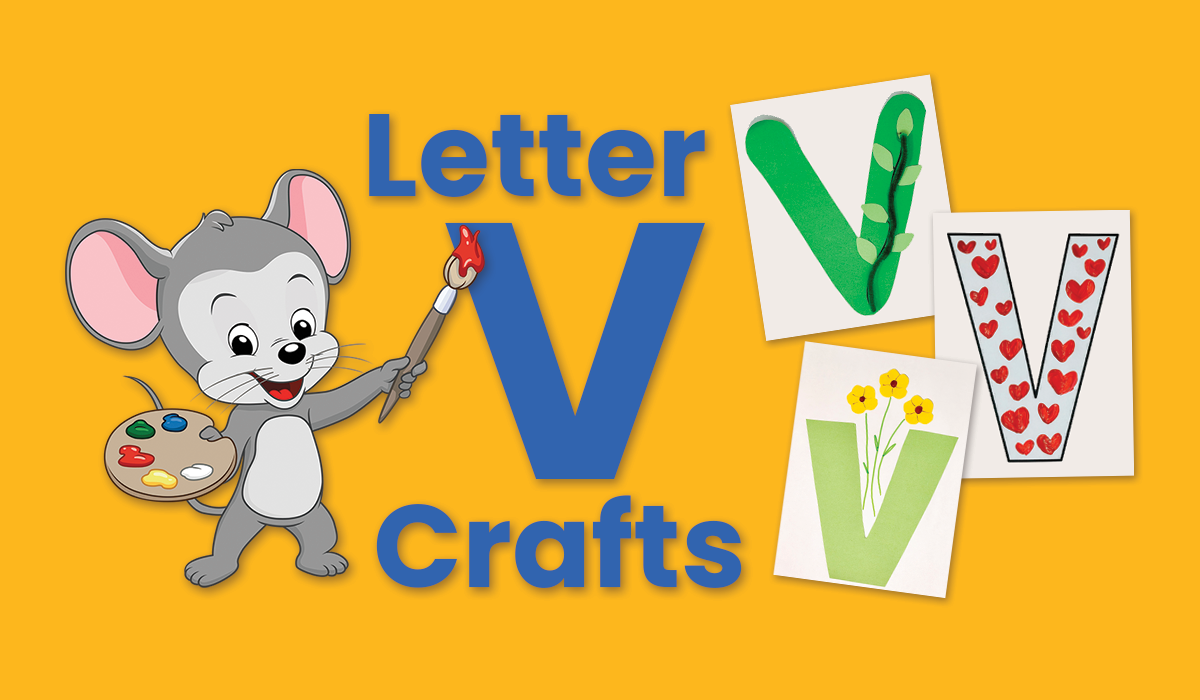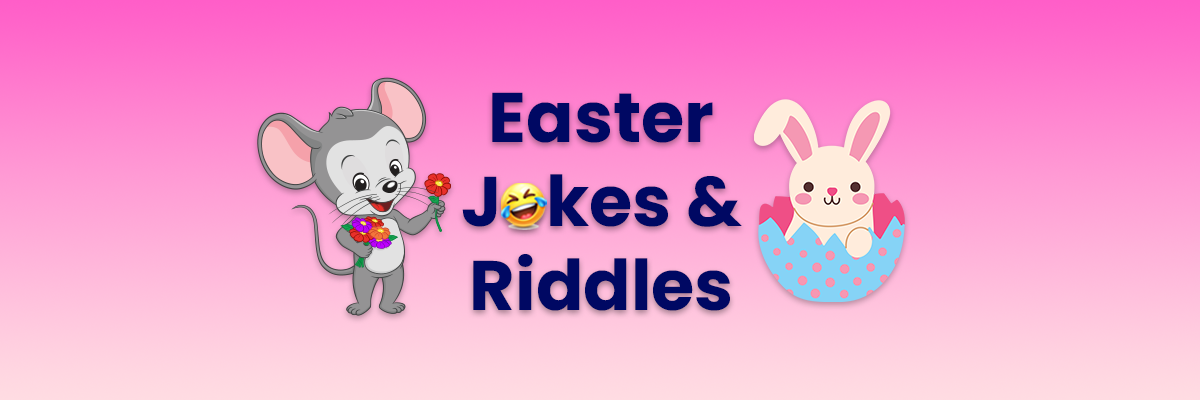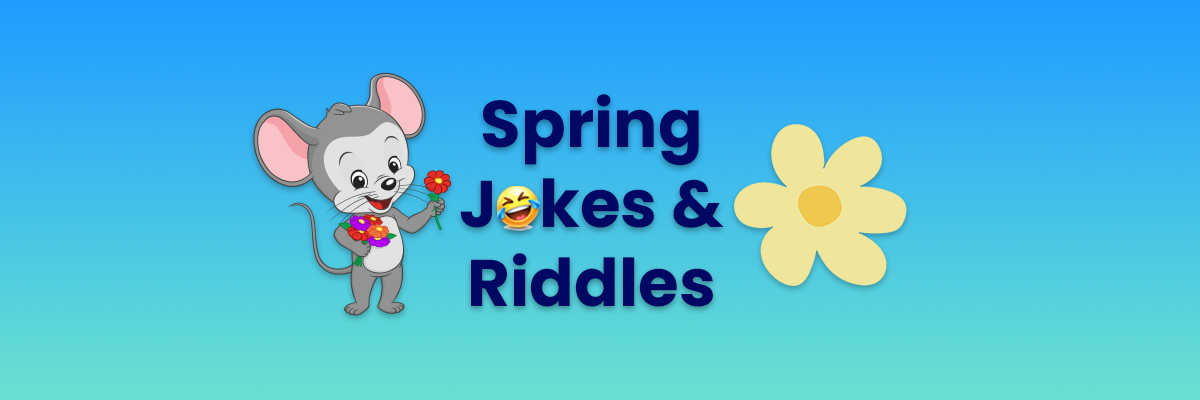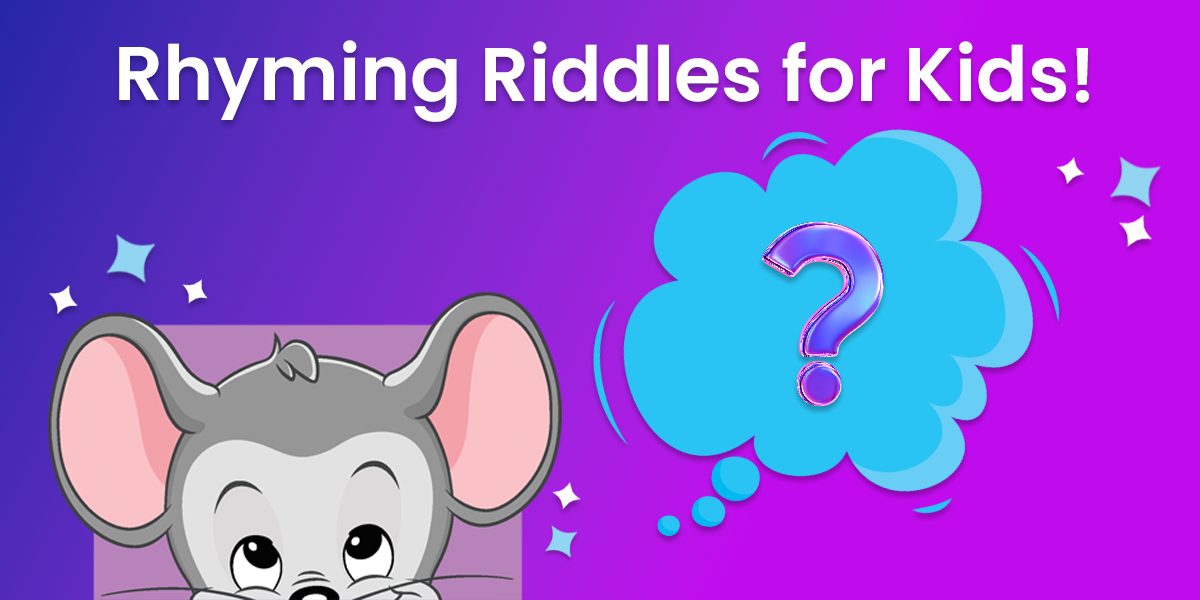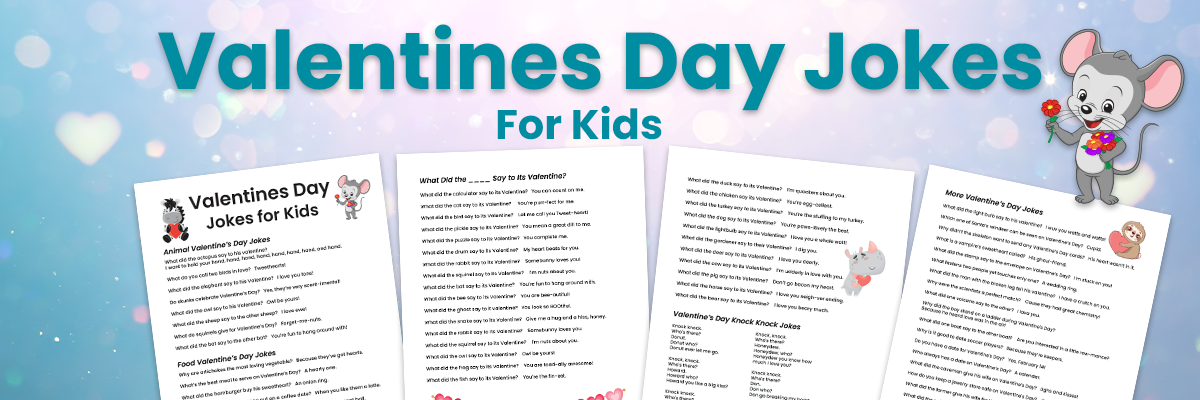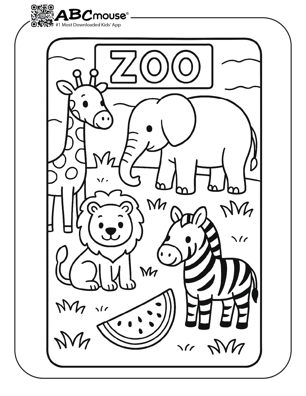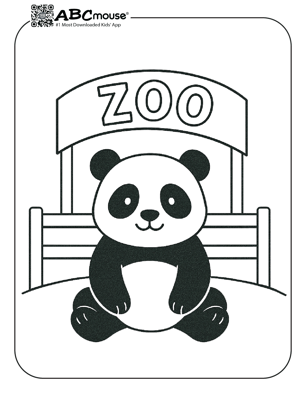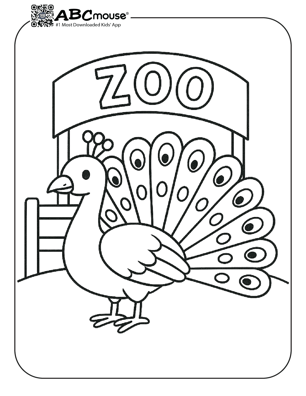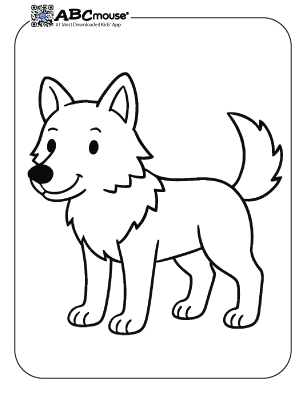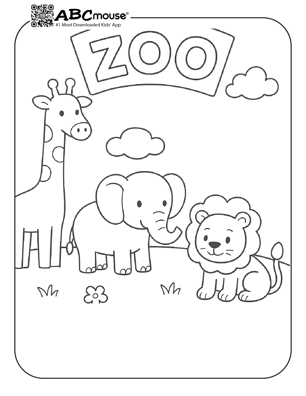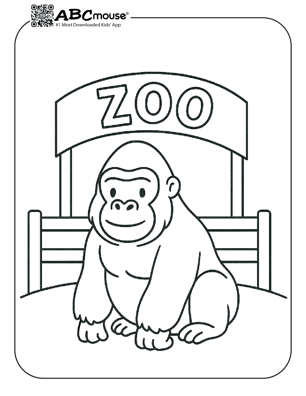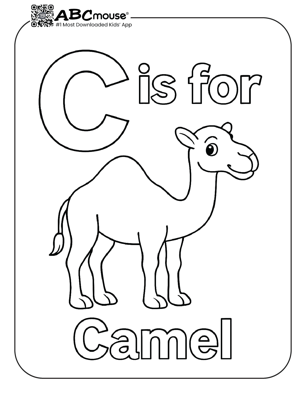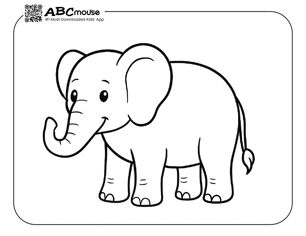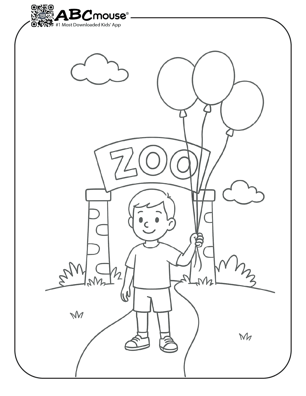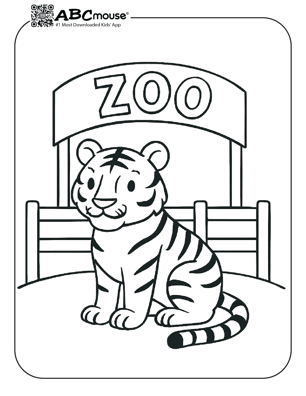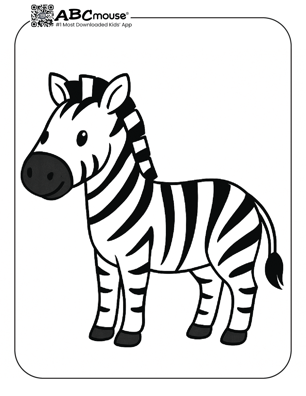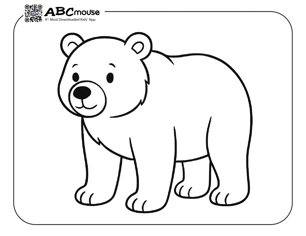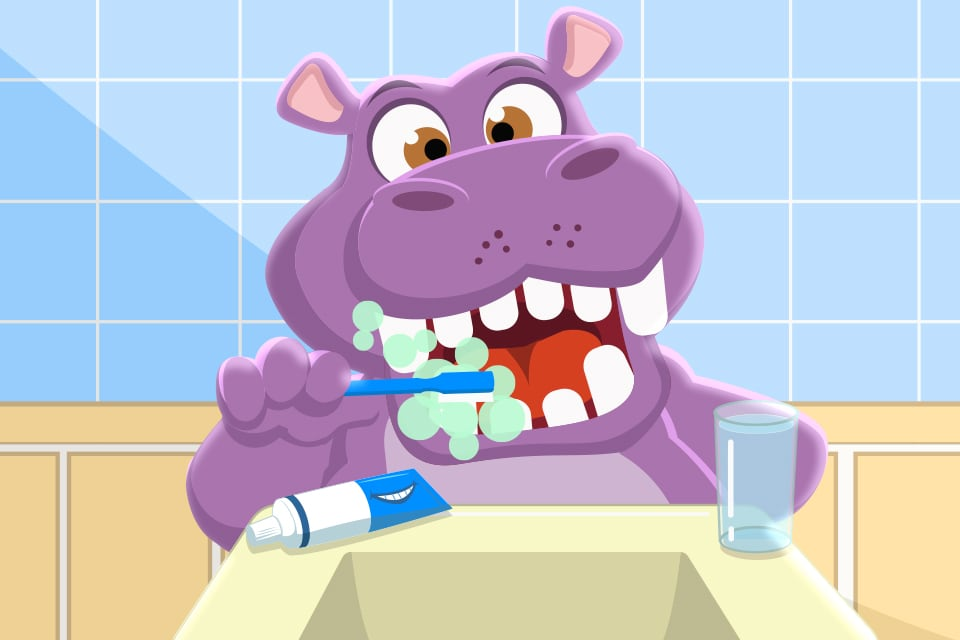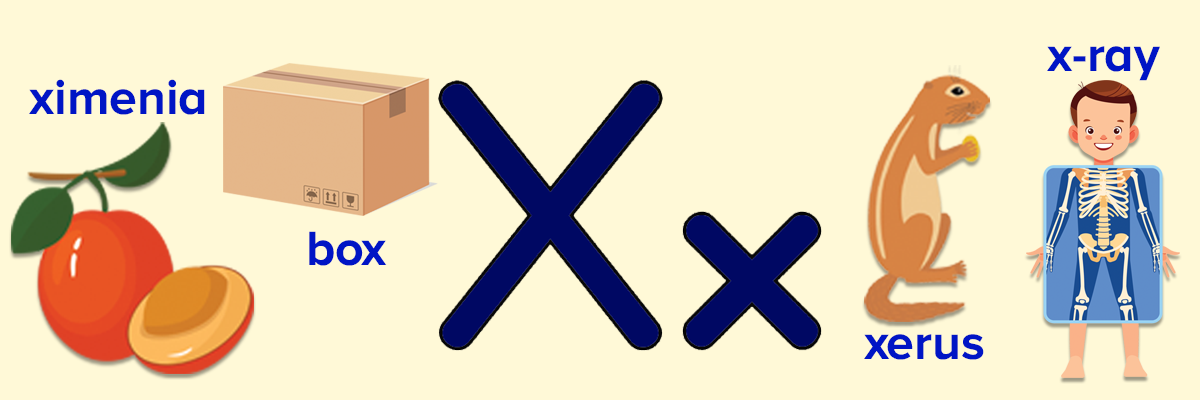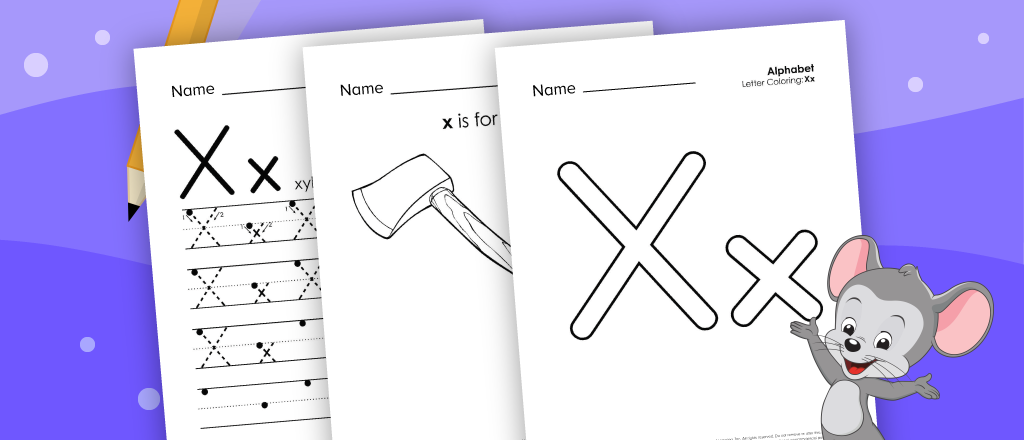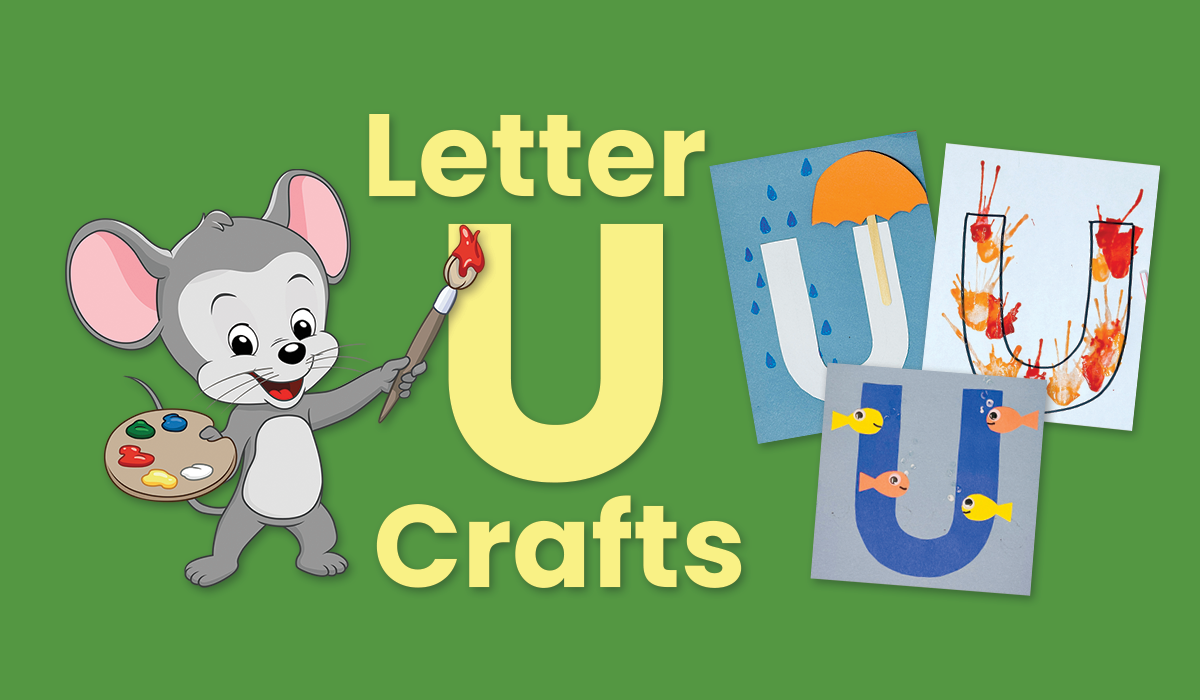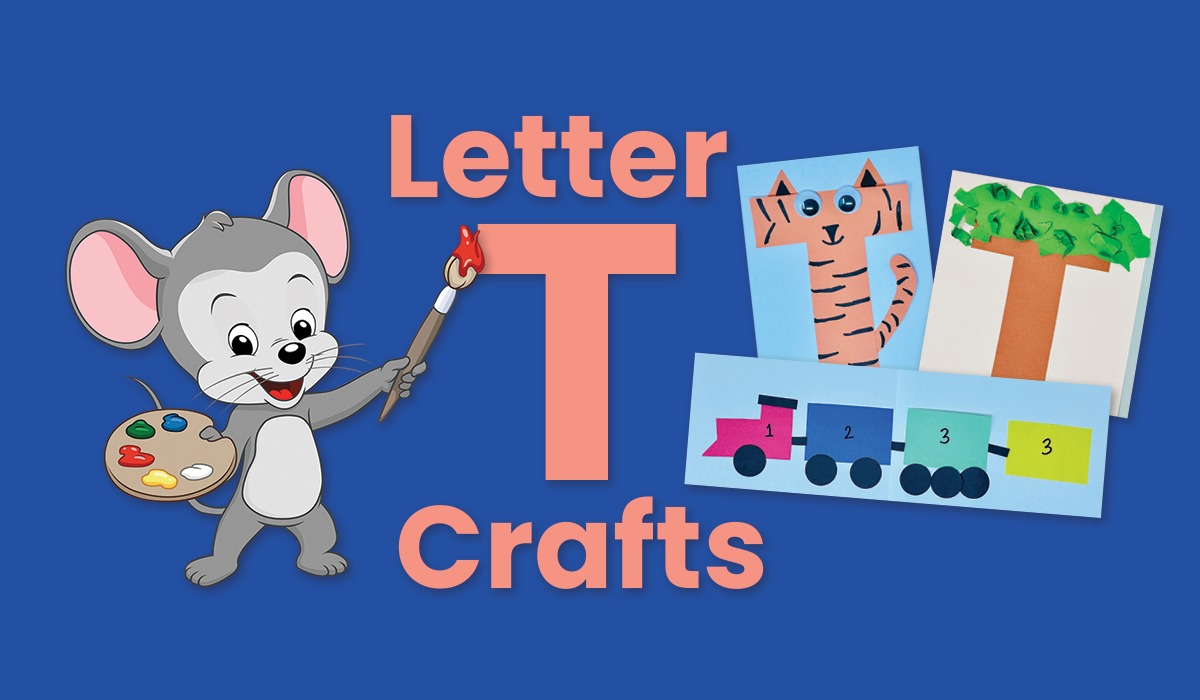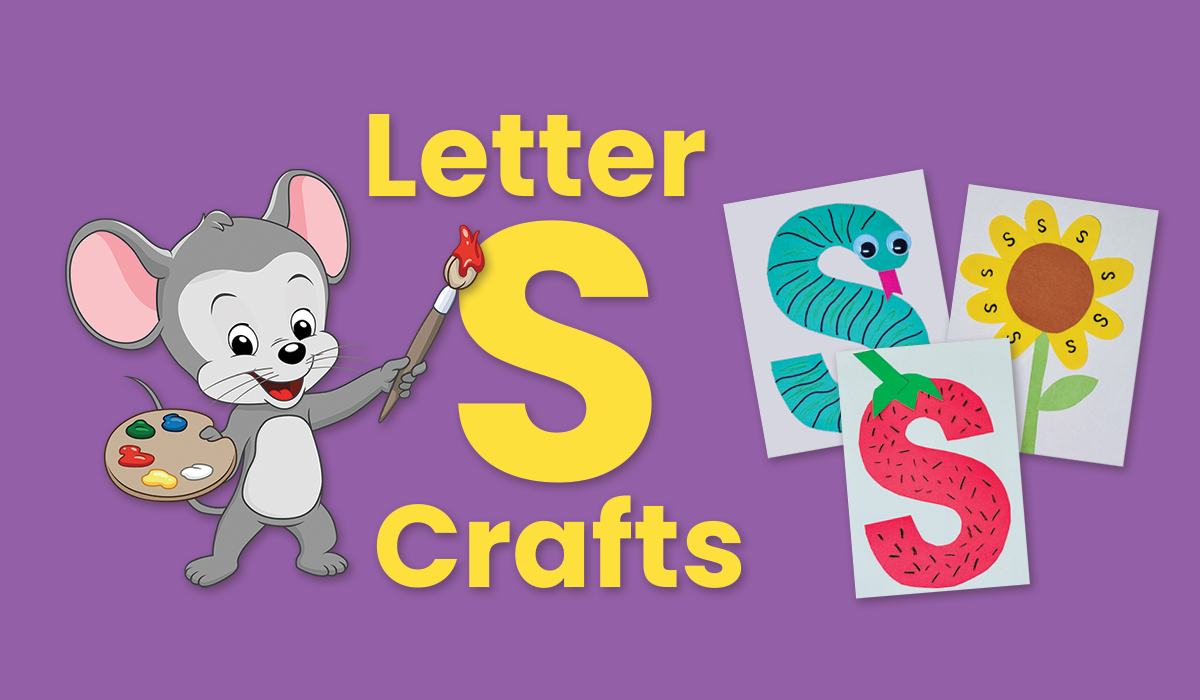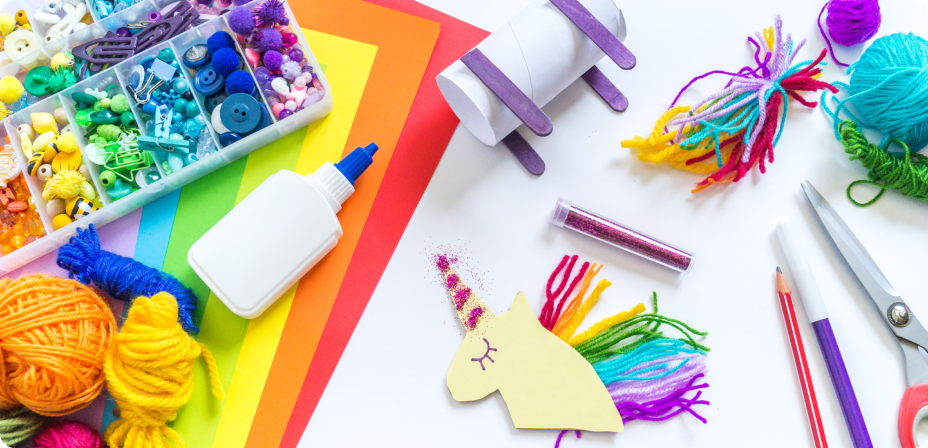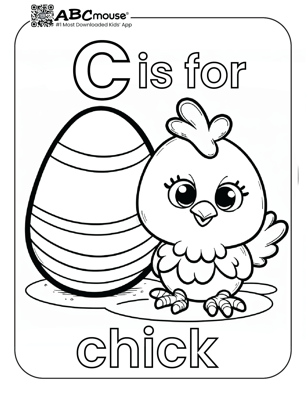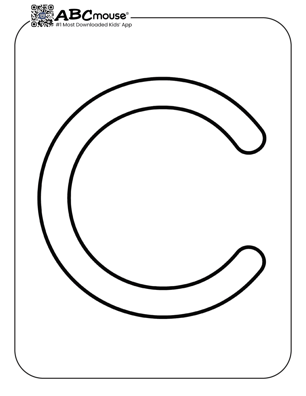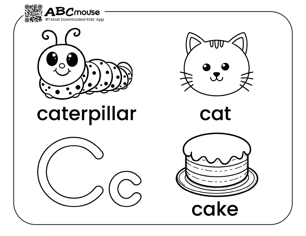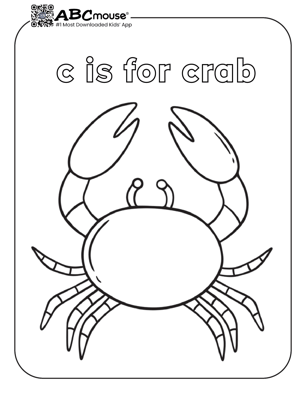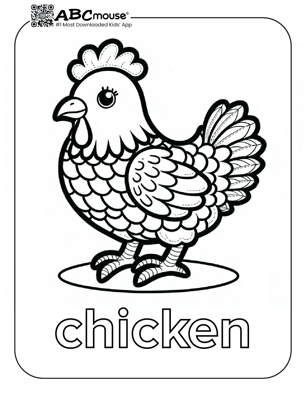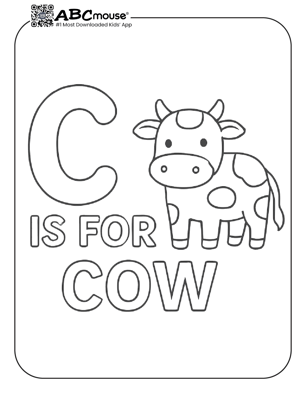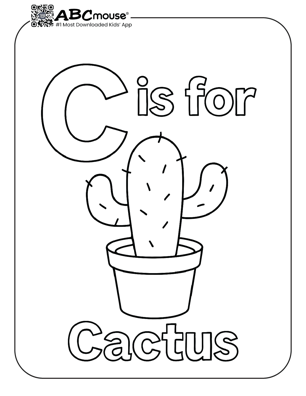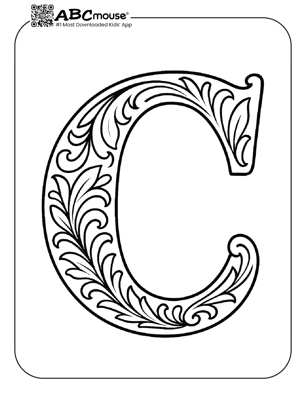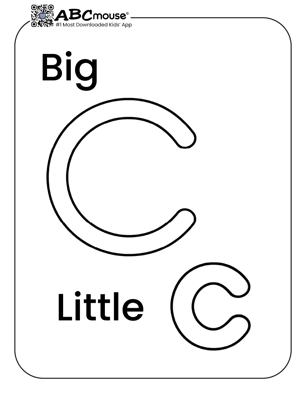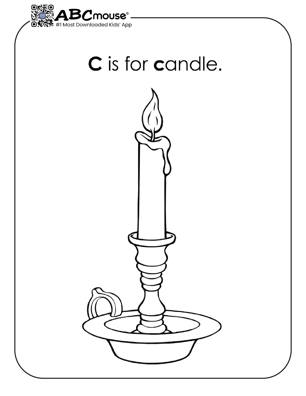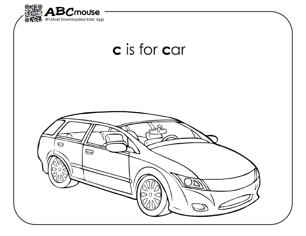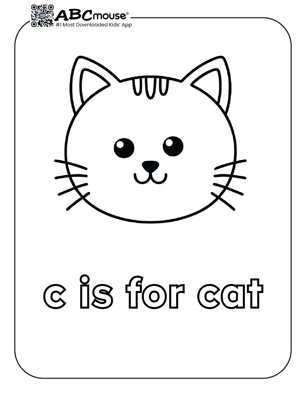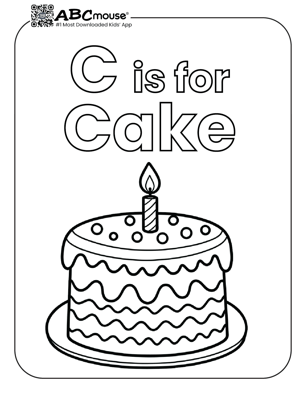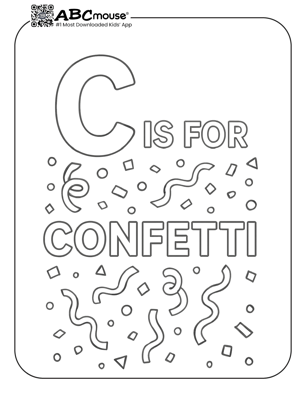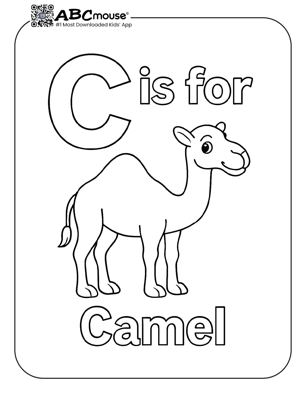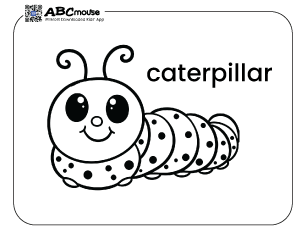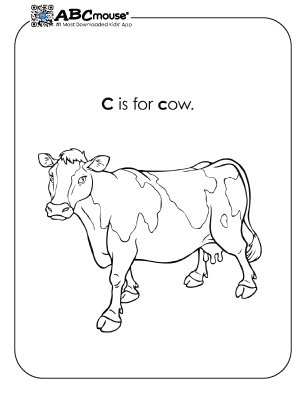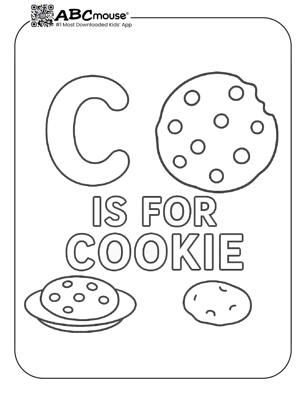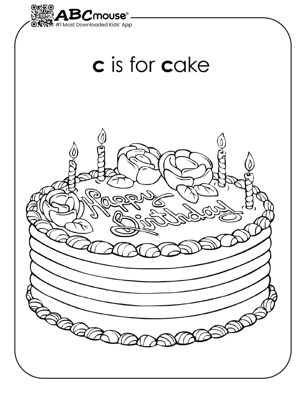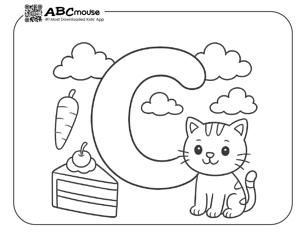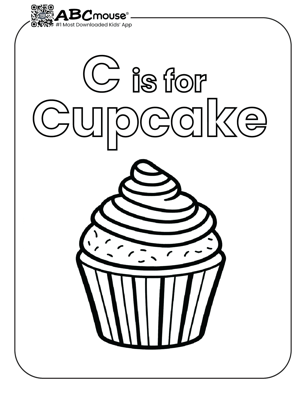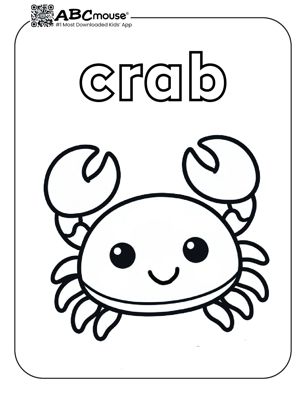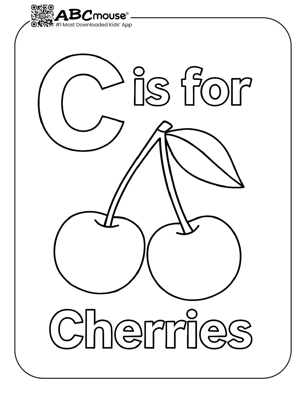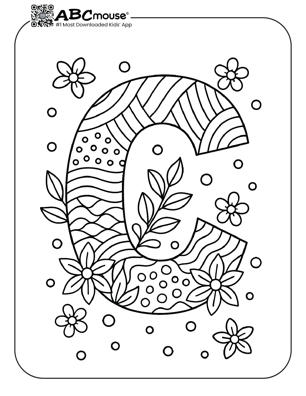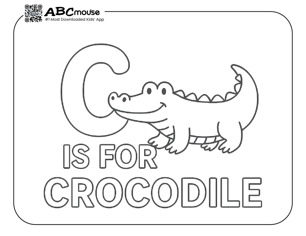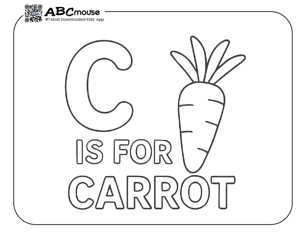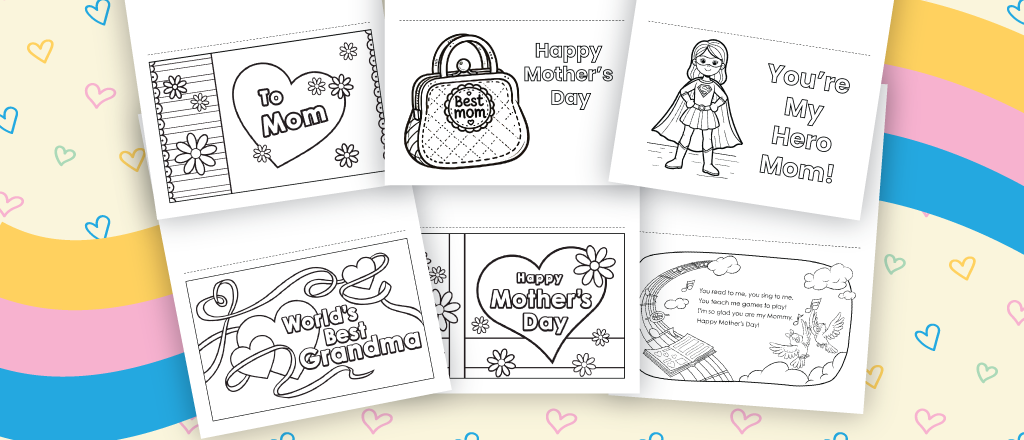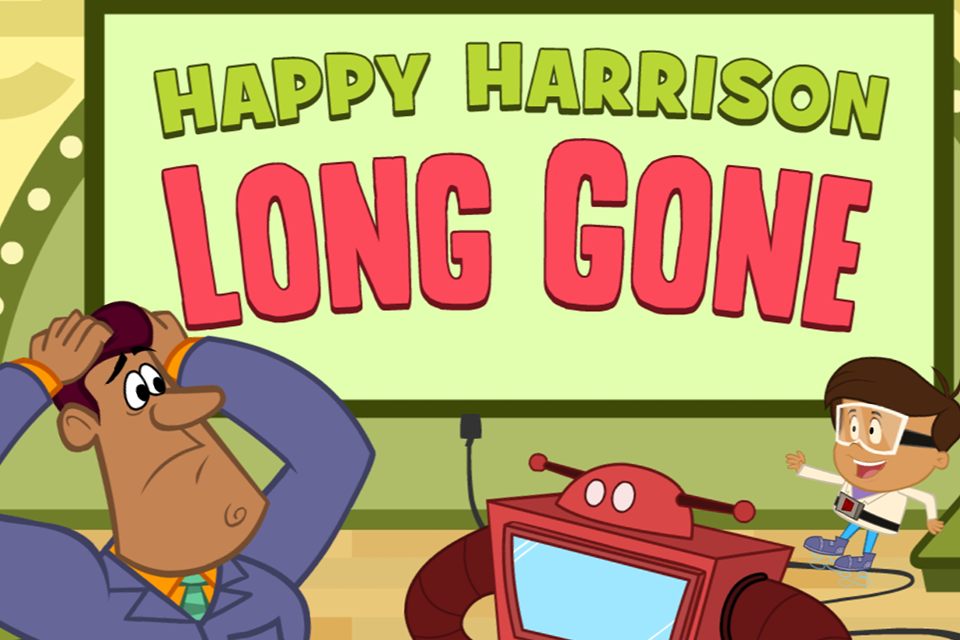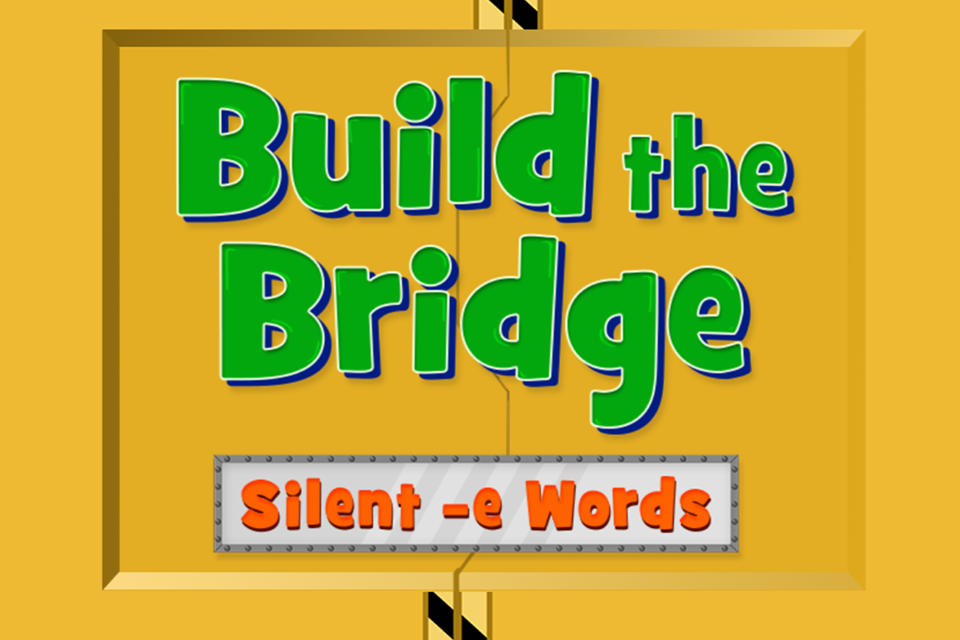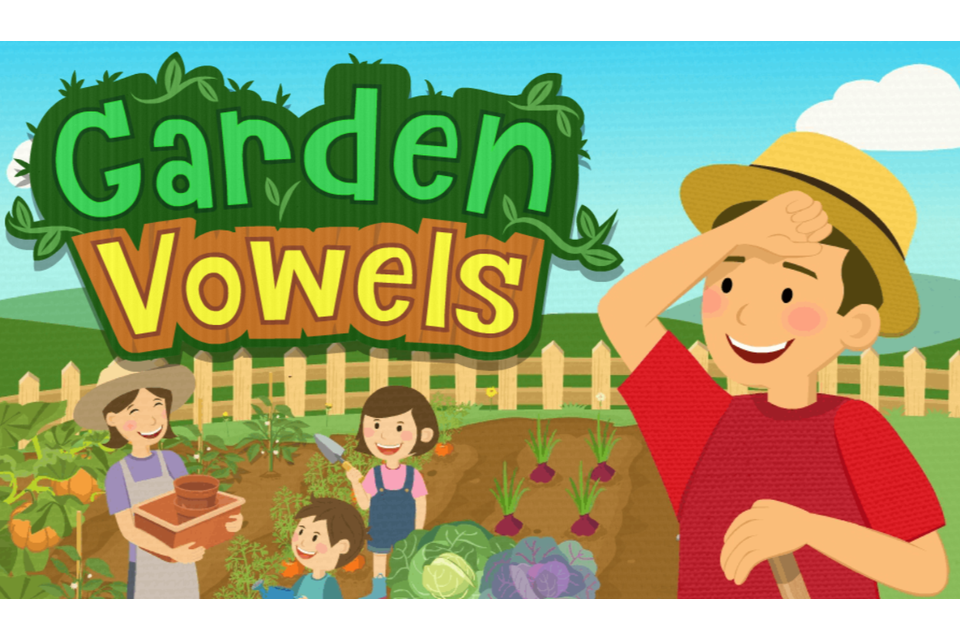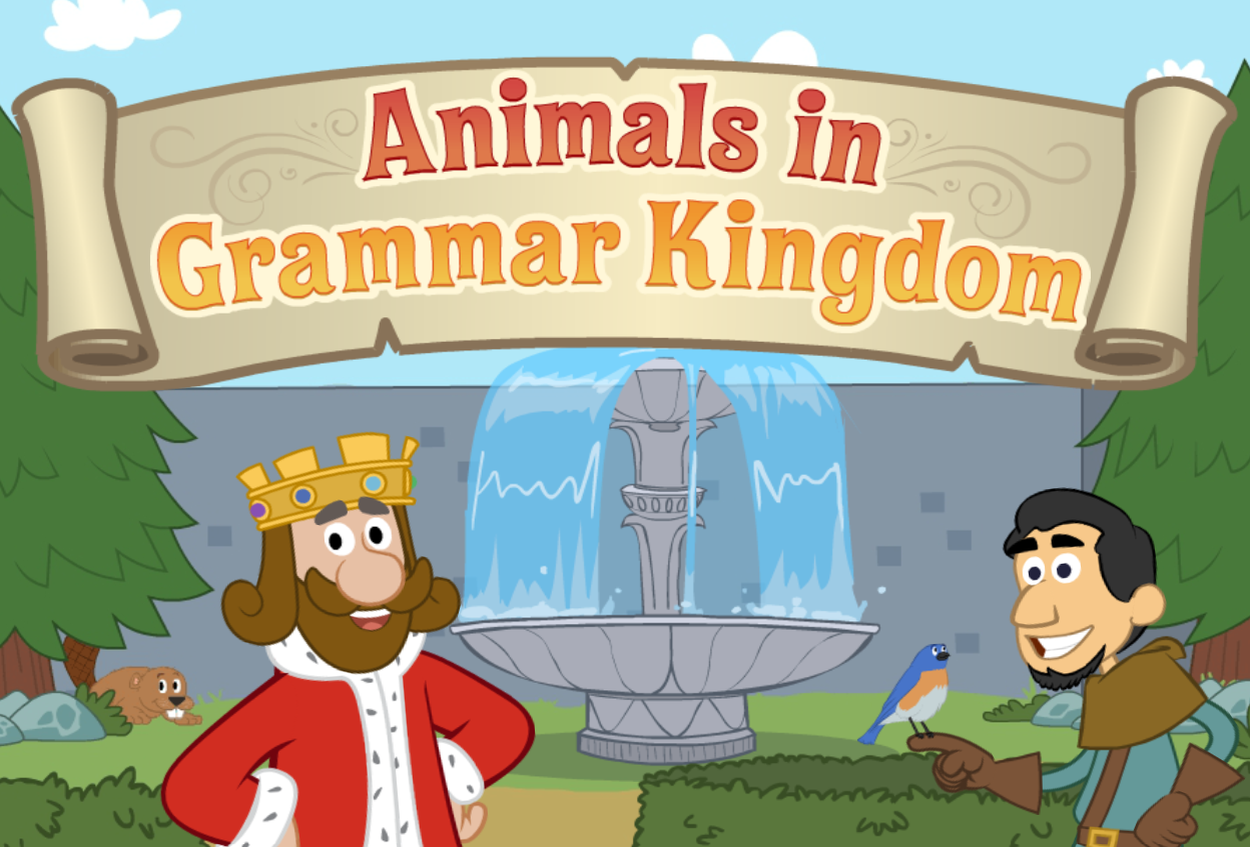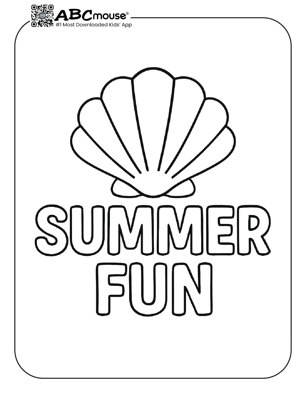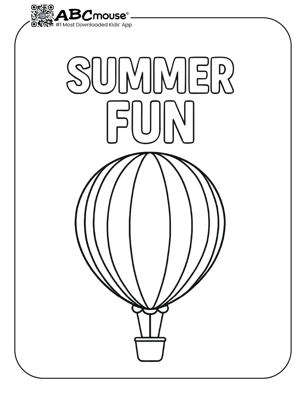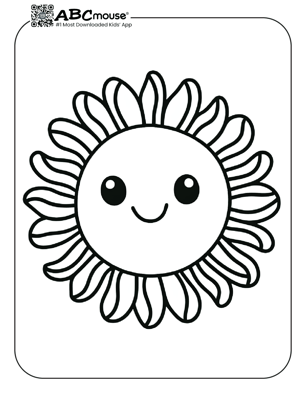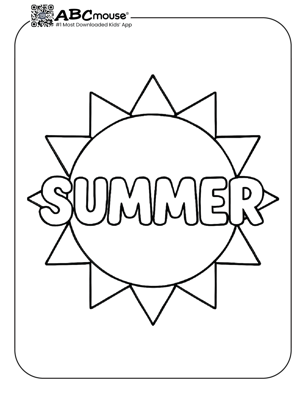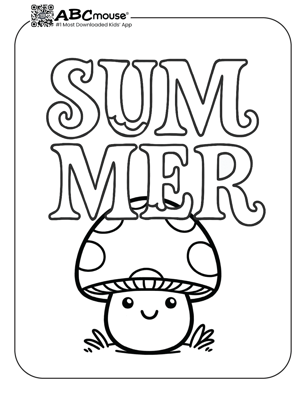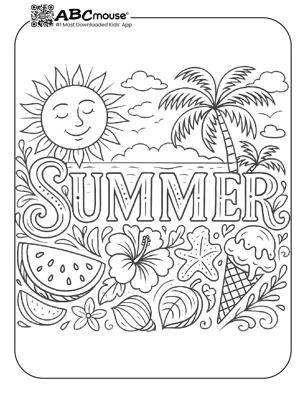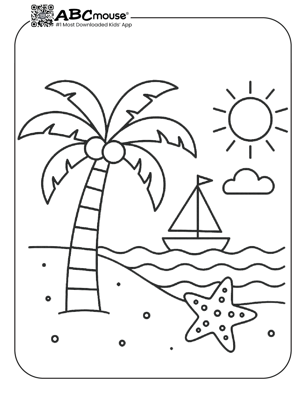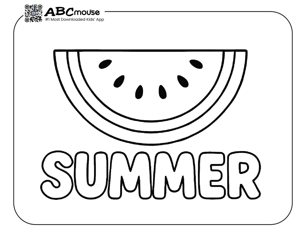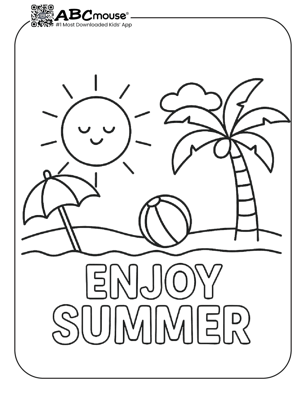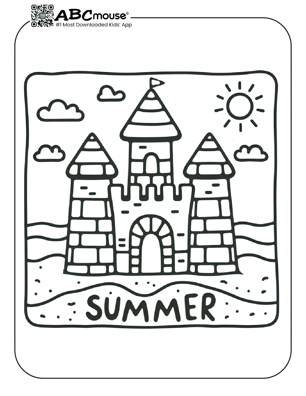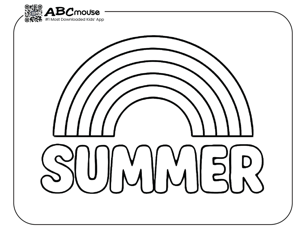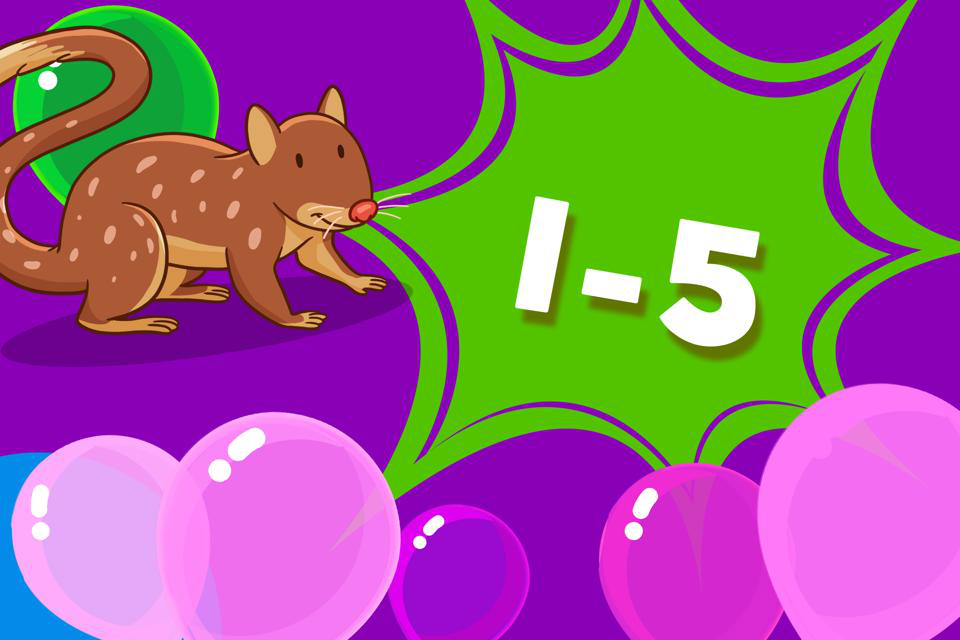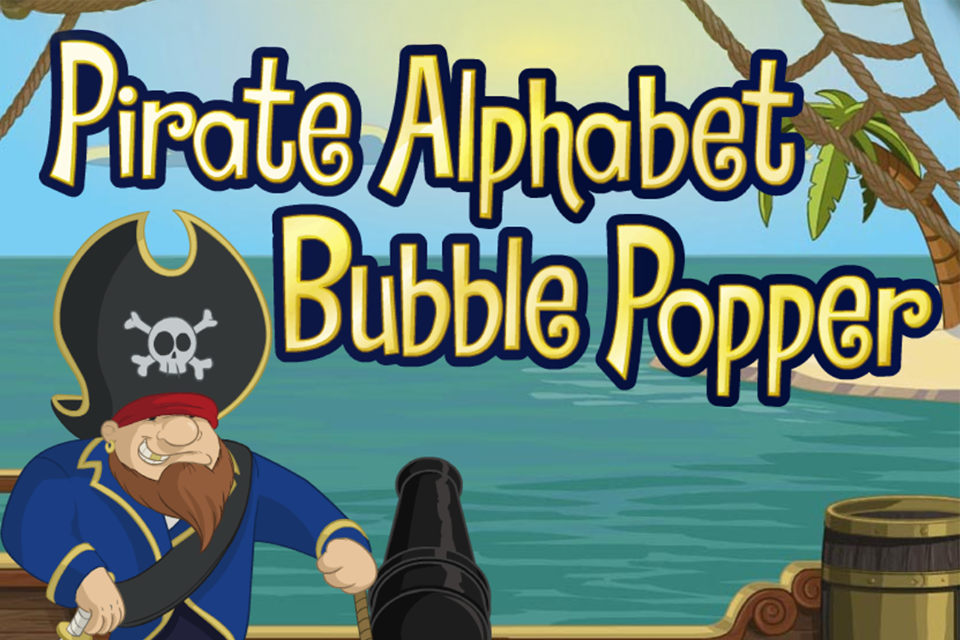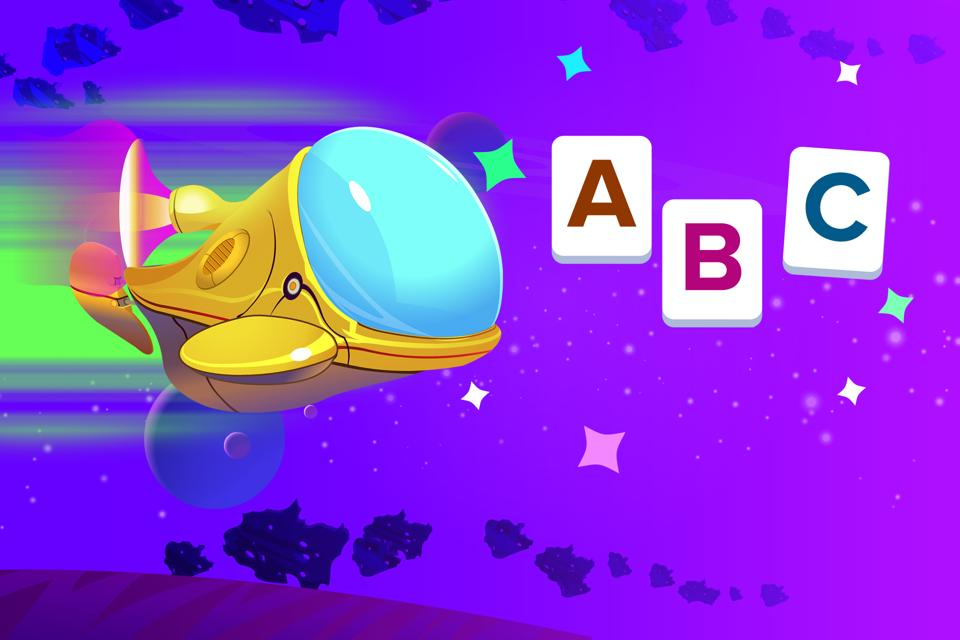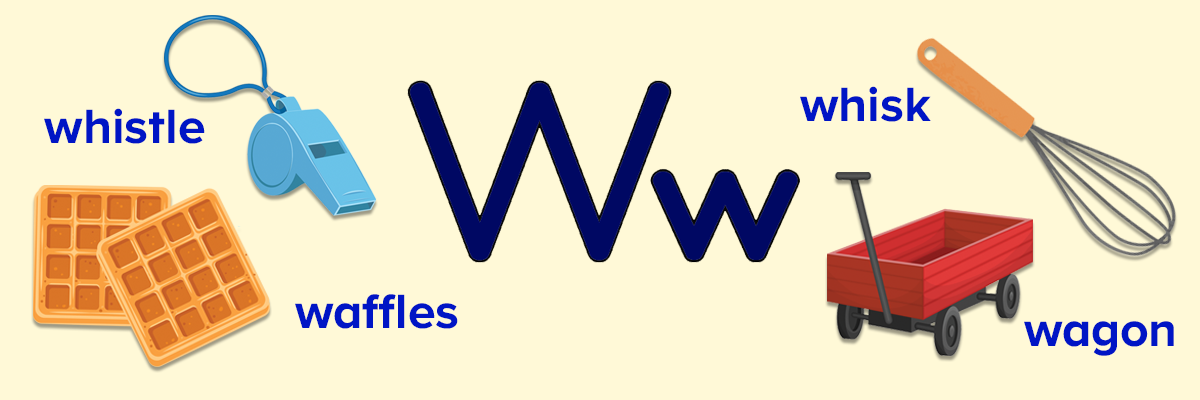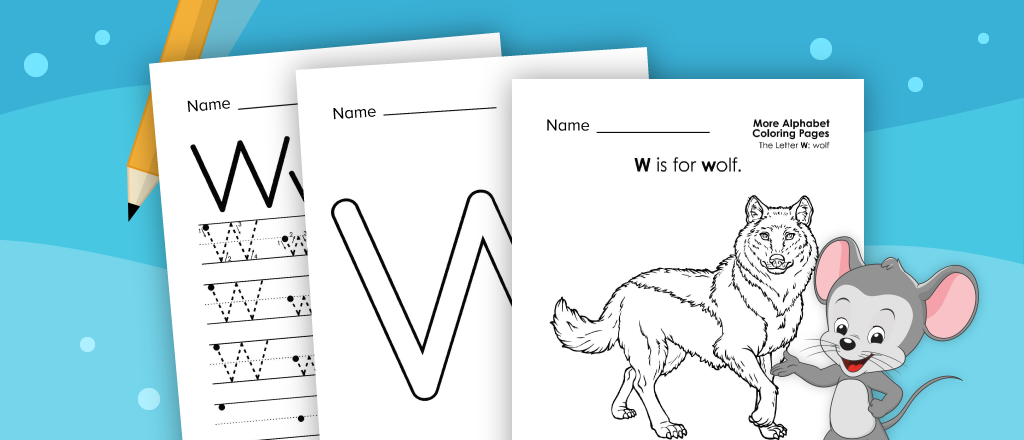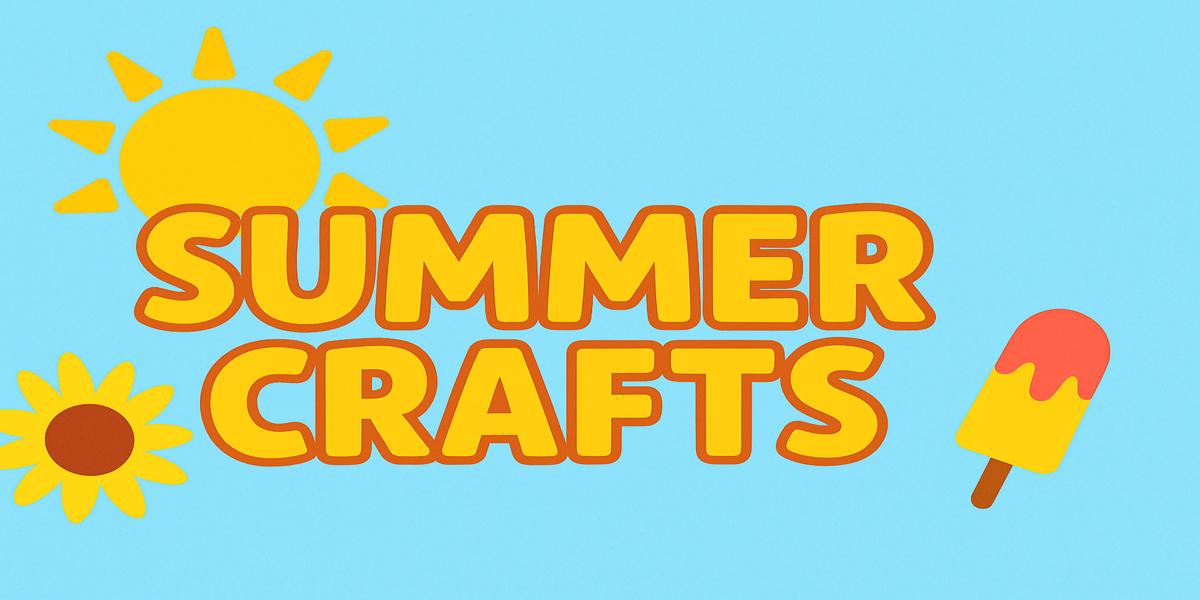
14 Simple and Creative Summer Crafts for Kids
Share
Celebrate summer with creative crafts that reinforce early learning. Each one uses simple supplies and lots of imagination!
Keep little hands busy this summer with crafts that help kids connect with the season while learning about letters, nature, and more. Whether creating sun catchers and alphabet-inspired crafts or growing silly plant hair, there’s something here for every interest. Try these ideas at home, in the classroom, or during summer camp as a way to blend play, learning, and hands-on fun.
These summer crafts are designed for toddlers and up and use everyday supplies you likely already have at home. Some ideas require minimal time while others require a bit more prep, but each activity is designed to be relatively quick and easy. While each craft is suitable for young children to enjoy, it’s best to provide adult supervision while they work.
More Summer Creativity!
Check out our 80+ free printable Summer Coloring Pages for more fun with seasonal art!
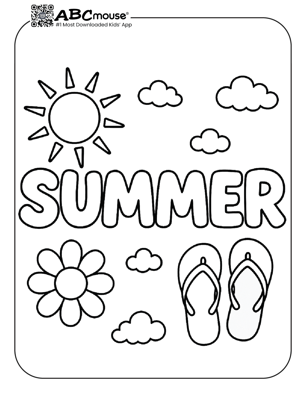
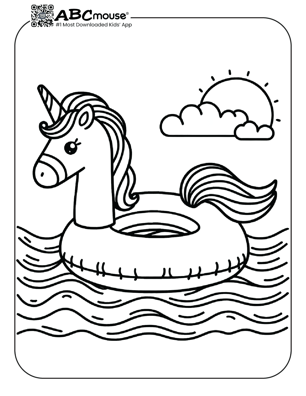
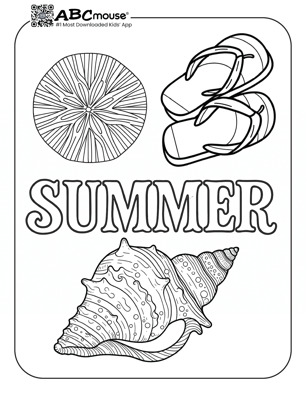
Summer Paper Crafts
1. Ice Cream Cone Counting Crafts
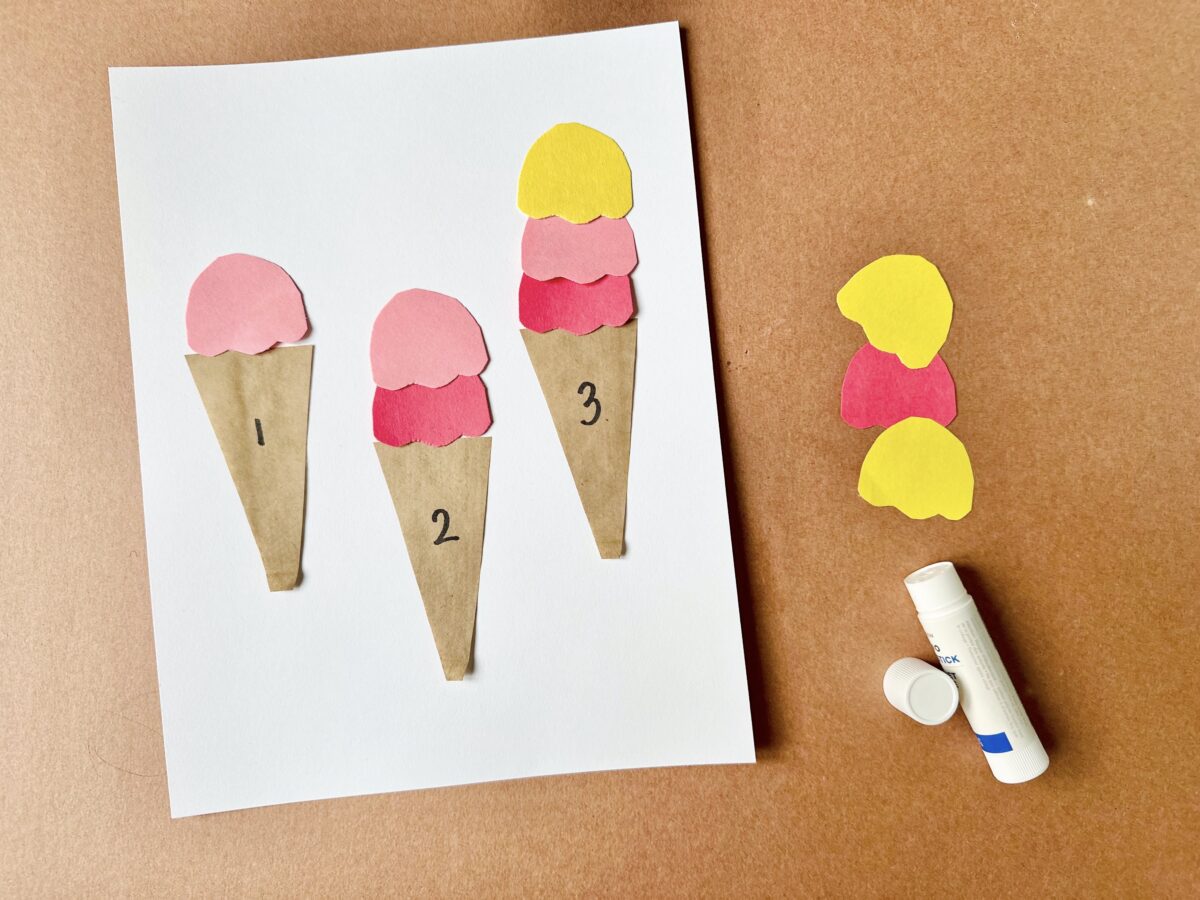
Supplies:
- brown paper bags
- colored construction paper
- scissors
- marker
- glue
Instructions:
1. Make the Cones
Cut several ice cream cone shapes out of brown paper. Write a number (1–5) on each cone using a marker or pen.
2. Create the Scoops
Cut out ice cream scoop-shaped pieces from colored paper (a semi-circle with a wavy bottom). Make enough scoops to match the numbers written on your cones. For instance, in the example pictures above, you’d need a total of six ice cream scoops.
3. Start Matching
Invite your child to place the correct number of scoops on each cone based on the number written on it. Use the cones for number recognition, counting practice, or even pretend play in a make-believe ice cream shop! To turn this into a reusable activity with more number options, write numbers on sticky notes or scraps of paper rather than directly onto the ice cream cones.
More Ice Cream Fun!
Print out our free ice cream and ice cream truck coloring pages to keep the fun going.
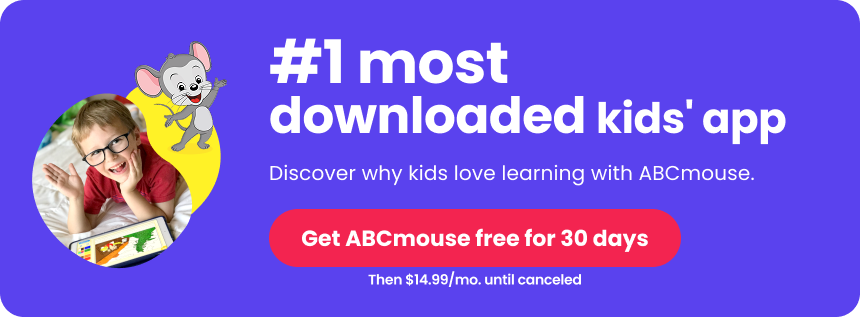
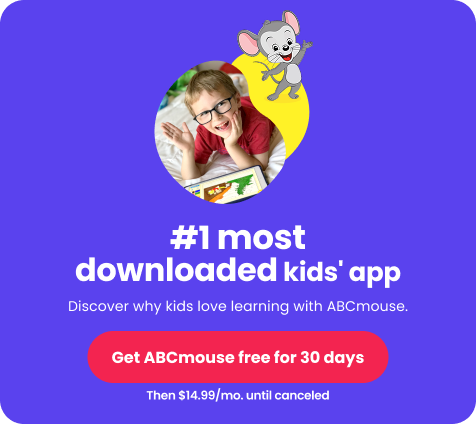
2. Letter S Strawberry Craft
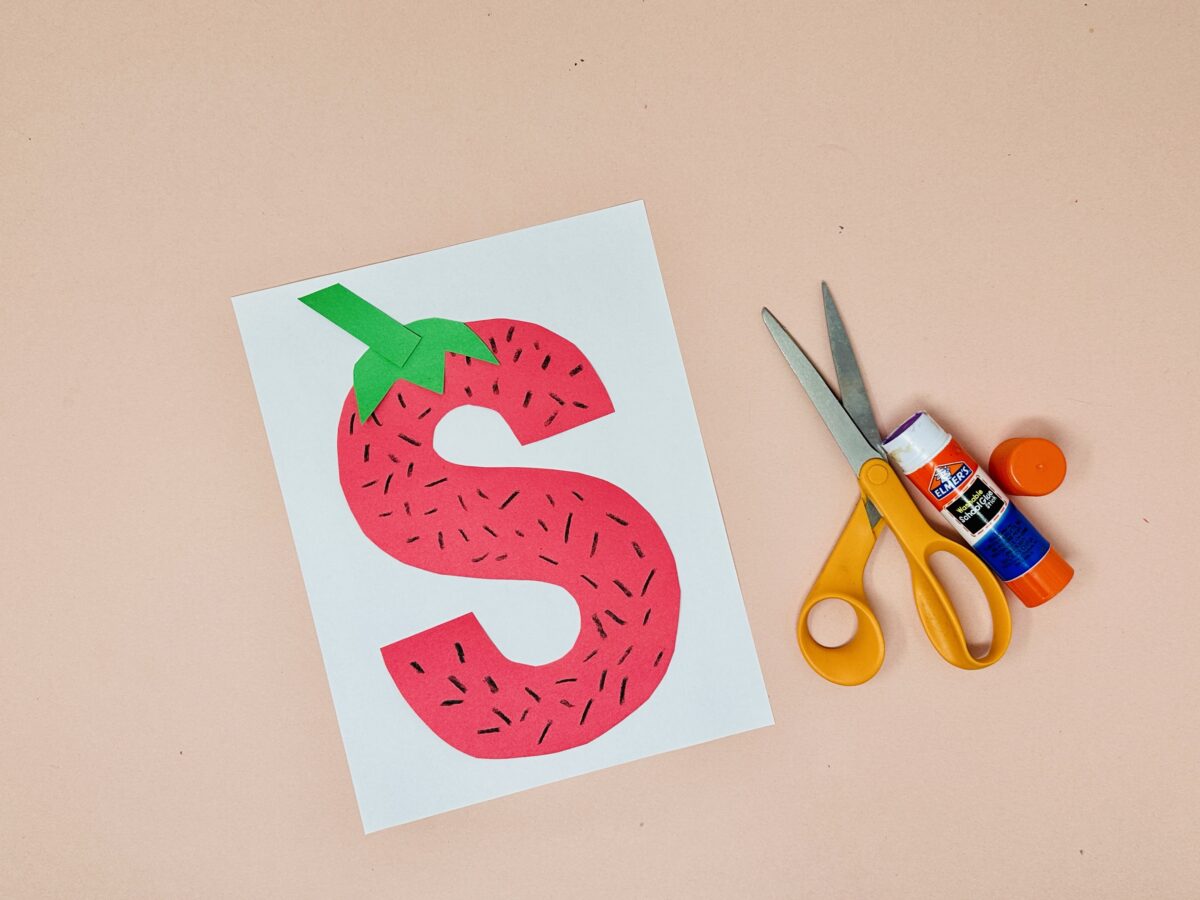
Supplies:
- red and green paper
- black crayon or colored pencil
- scissors
- glue
Instructions:
1. Trace and Cut the Letter S
On red paper, trace a large letter S (use the letter S template in our letter S worksheets if needed). Help your child carefully cut it out—this will be the strawberry.
2. Make the Stem and Leaves
Cut out a small stem and a leafy top (the calyx) from green paper to go on the strawberry. Glue the green stem and leaves to the top of the red letter S.
3. Add the Seeds
Using a black crayon or colored pencil, have your child draw small seeds all over the strawberry. Then count up all the seeds for a little math practice!
3. Paper Boat Craft
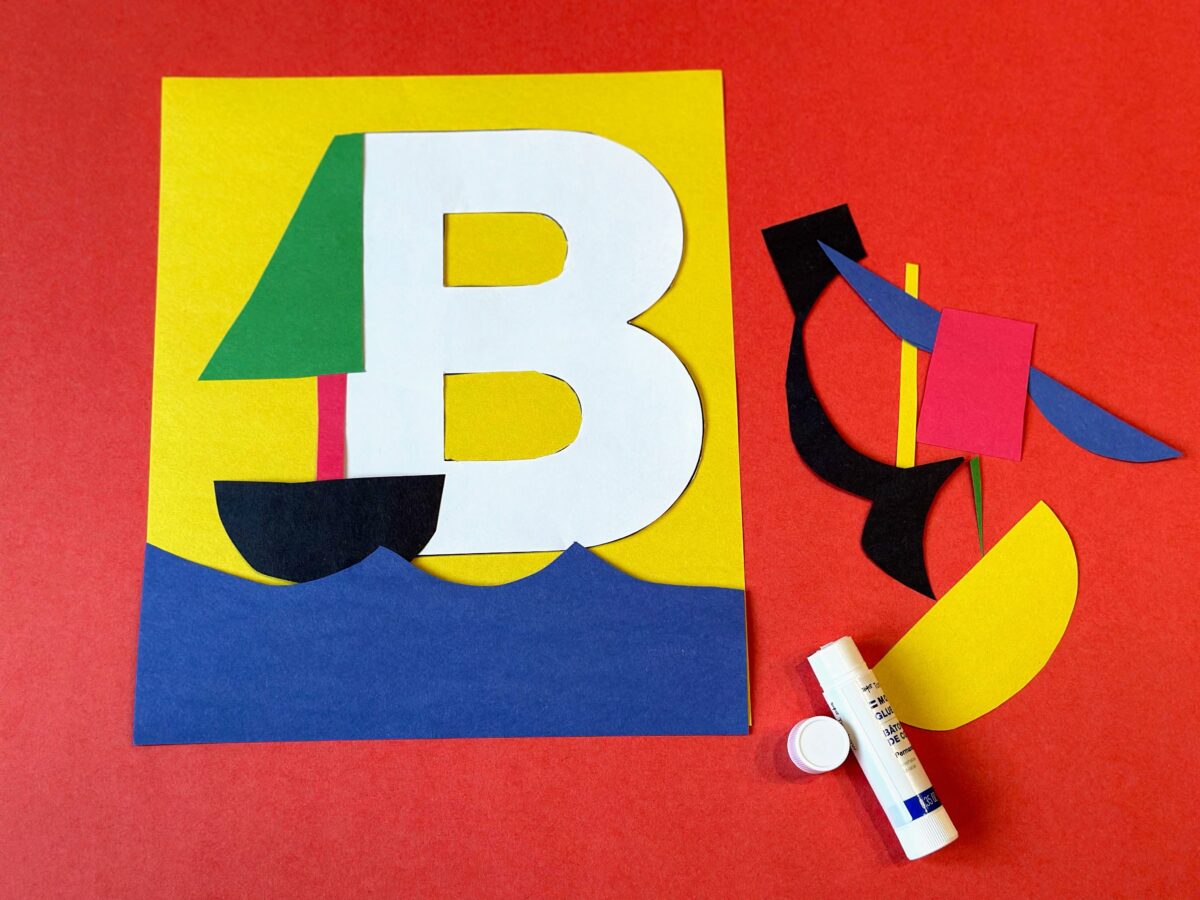
Supplies:
- construction paper
- scissors
- glue
Instructions:
1. Trace and Cut Out the Letter B and Waves
Trace a large letter B (use the letter B template from our letter B worksheets if needed) on to a piece of white paper. Then cut ocean waves from blue paper.
2. Create the Boat
Cut a simple boat shape from other colors, using a semi-circle shape for the boat, a tall, skinny rectangle for the boat’s mast, and a longer triangle shape to create the sail.
3. Glue the Pieces Down
Have your child arrange the paper pieces, placing the letter B and water down first, and then building their paper boat. Glue all the pieces down and set sail!
4. Sunflower Craft
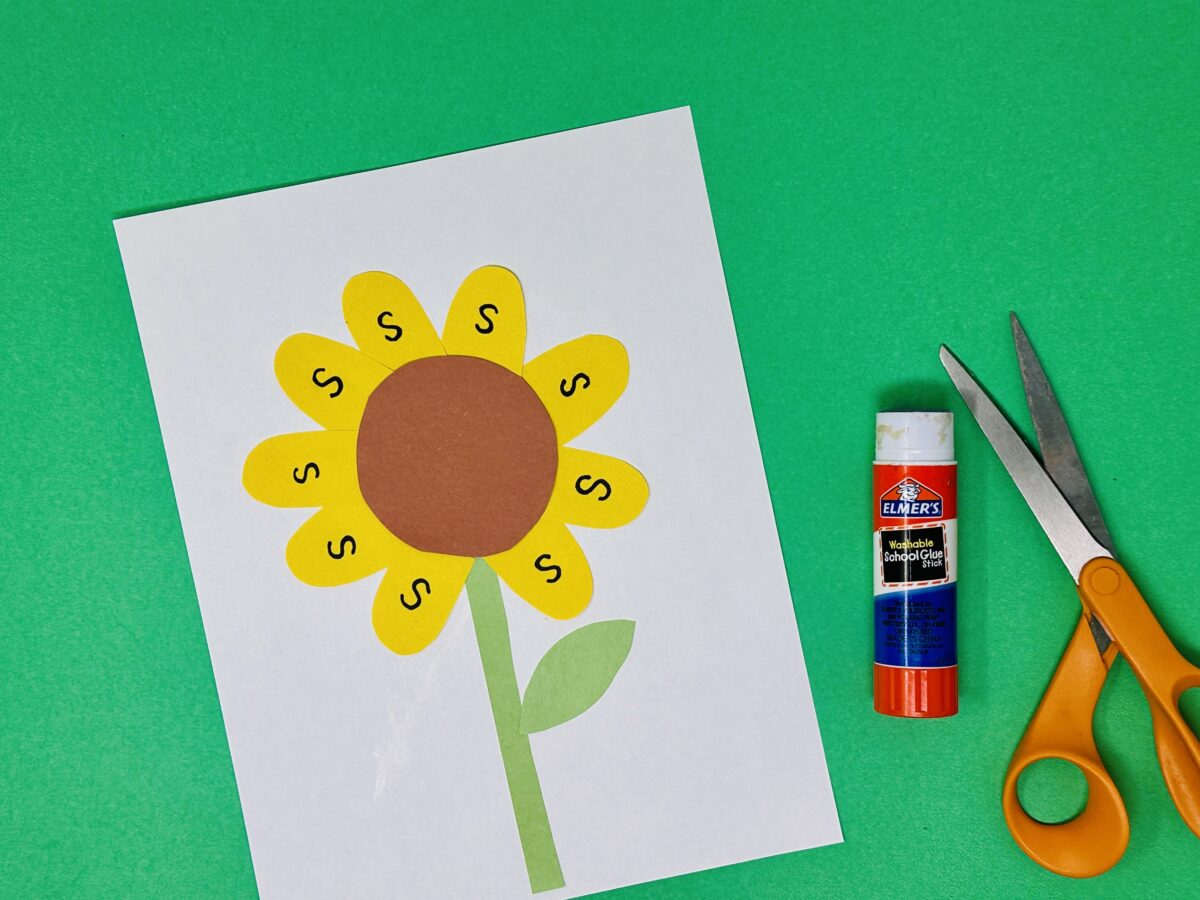
Supplies:
- yellow, brown, white, and green paper
- marker
- scissors
- glue
Instructions:
1. Cut the Pieces
Cut a circle from the brown paper for the center of the sunflower, oval-shaped semi-circle petals from the yellow paper, and a stem and leaf from the green paper.
2. Assemble the Sunflower
Help your child glue the petals around the brown circle, then attach the stem and leaf to complete the flower.
3. Practice Writing the Letter S
In each yellow petal, have your child write the letter S using a pencil, marker, or crayon, practicing with the letter S shape. They can rotate the paper as needed to write comfortably around the flower. Then, practice saying “S is for sunflower,” to help your child get familiar with the letter S sound.
Add in Math Practice
Work on math skills by counting the number of petals you used to create the sunflower.
5. Ladybug Craft
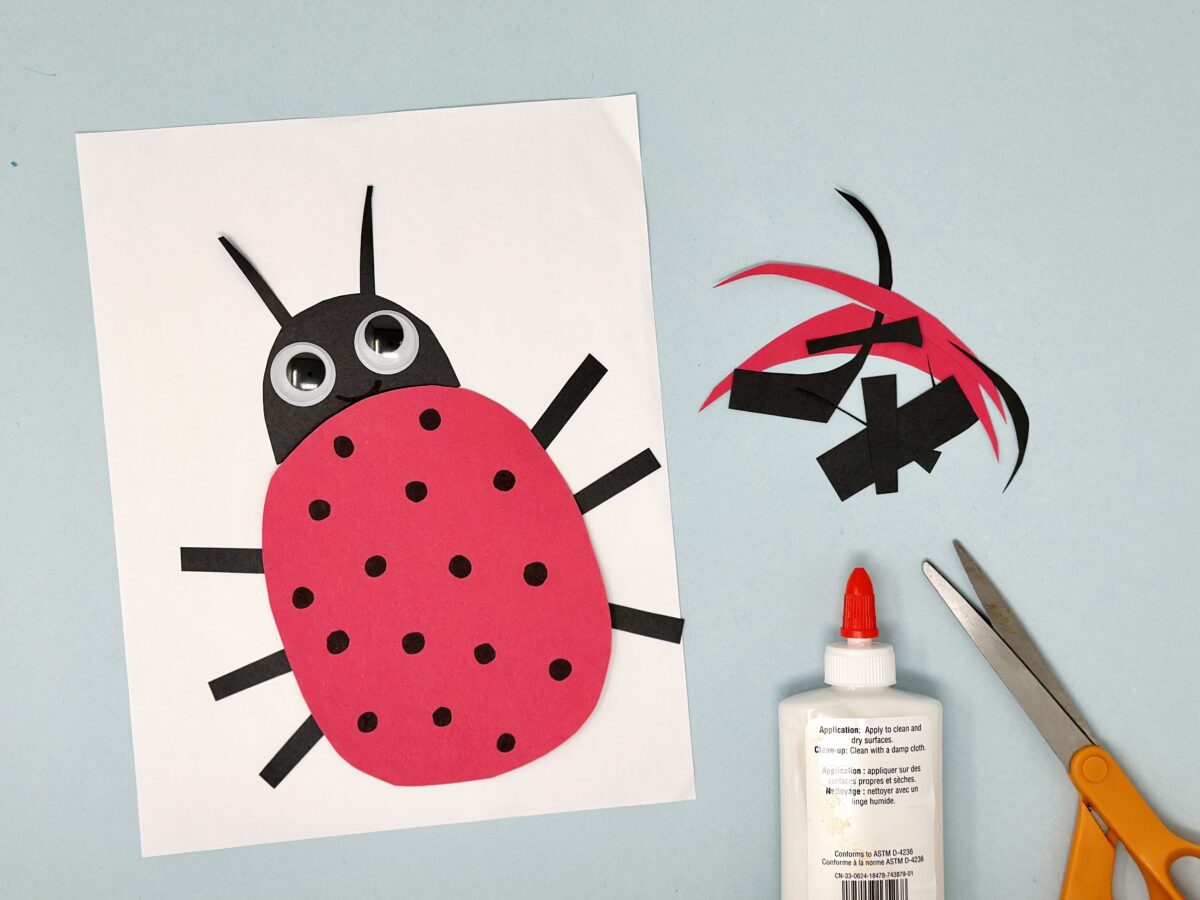
Supplies:
- red and black construction paper
- black marker
- scissors
- glue
- googly eyes
Instructions:
1. Create the Ladybug’s Body
Cut a large red oval for the ladybug’s body and use a marker to draw small black spots all over it.
2. Cut the Ladybug Parts
From black paper, cut out a semi-circle for the head, six skinny rectangles for legs, and two skinny strips that end in a point for antennae.
3. Assemble and Name Your Ladybug
Glue all the pieces onto a sheet of paper to form your ladybug—then give it a fun name and hang it up for all to see!
6. Tropical Island Craft
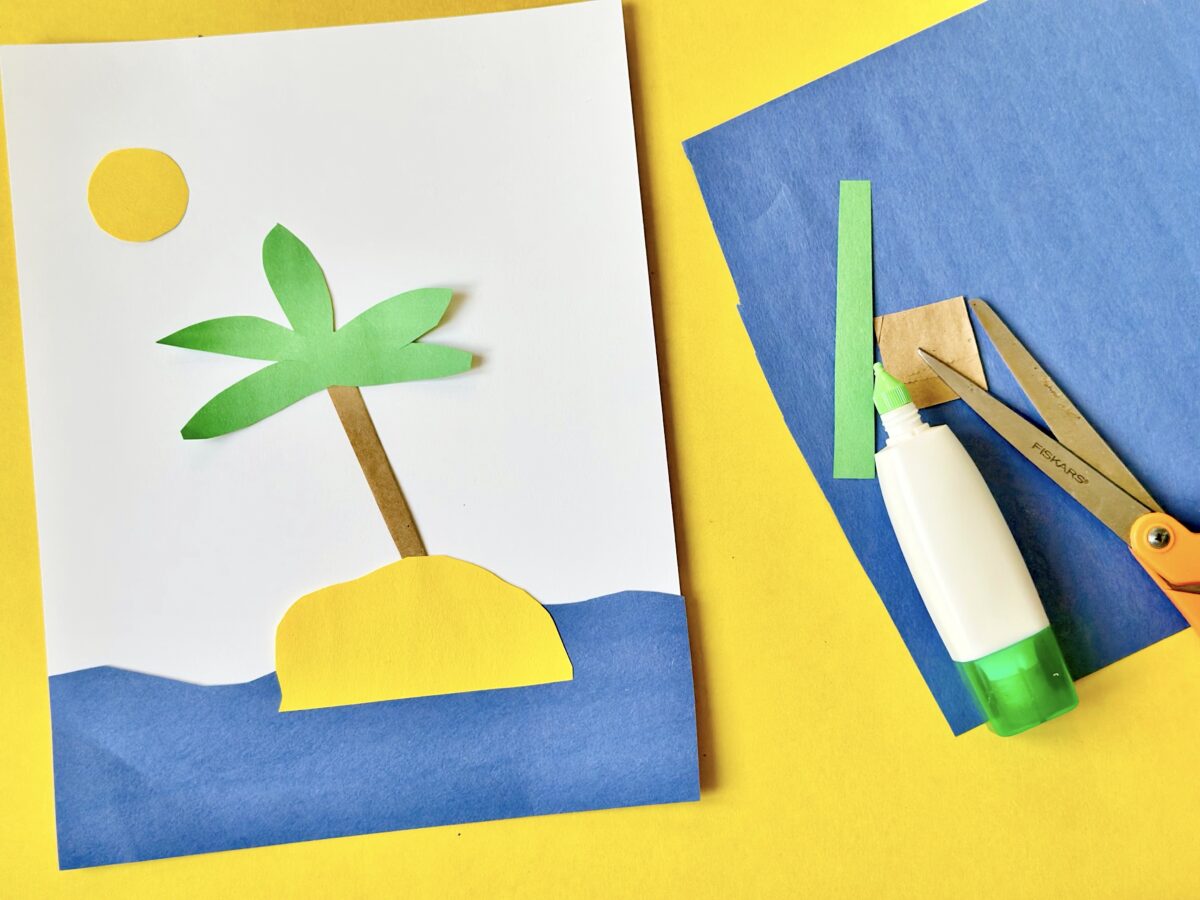
Supplies:
- various colors of construction paper
- scissors
- glue
Instructions:
1. Cut Out the Pieces
Help your child cut out shapes for the sun, water, island, and palm tree (green fronds and a trunk) from construction paper.
2. Build and Glue the Scene
Arrange the pieces to create a sunny island scene. Once everything is in place, glue the pieces down to complete your island adventure!
Create an Island Community
Make a larger scale island and fill the sea around it with cut outs from our ocean creatures coloring pages. Adorn the island’s sand with sea shells and even a mermaid.
7. Tree Craft
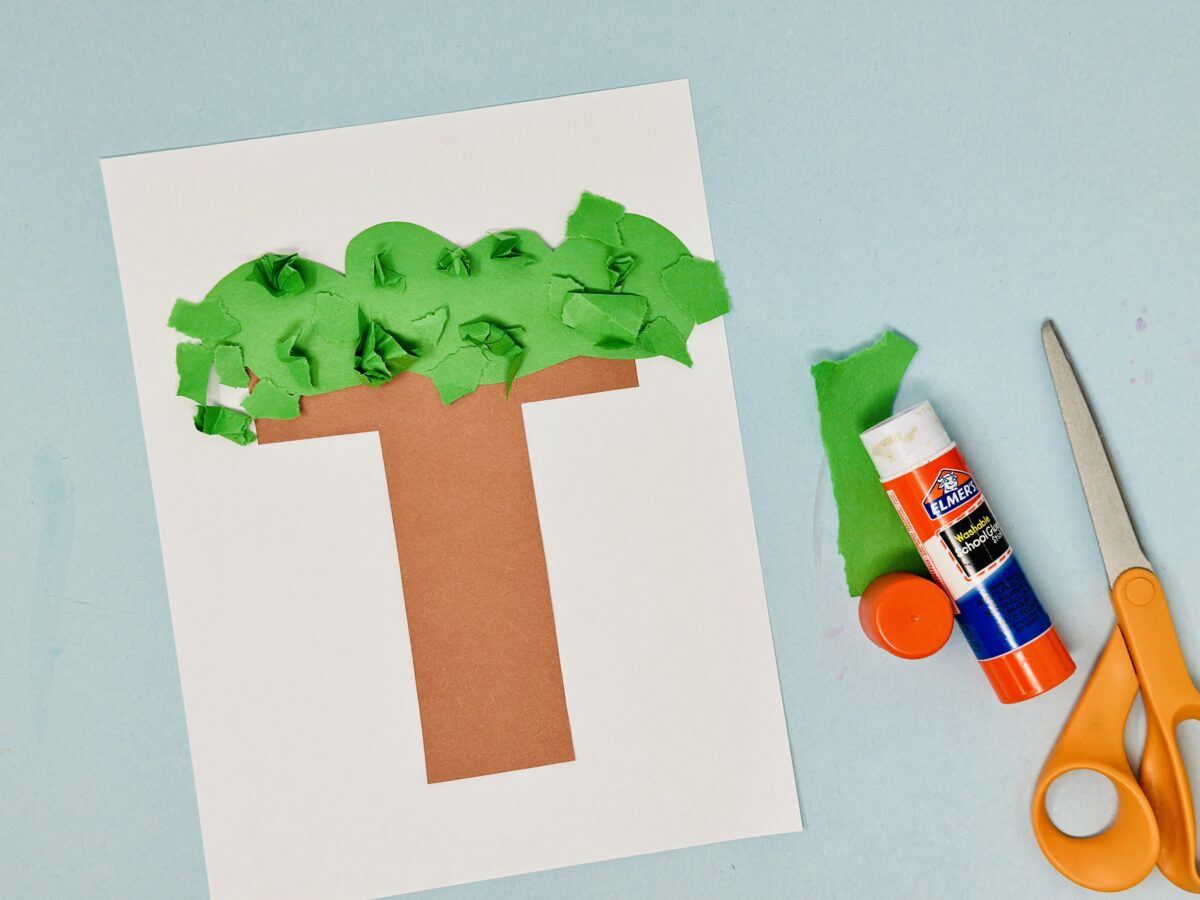
Supplies:
- brown and green paper
- scissors
- glue
Instructions:
1. Make the Trunk
Cut out a large letter T from brown construction paper to represent the tree’s trunk and branches.
2. Add the Canopy
Cut a cloud-like shape from green paper and glue it to the top of the T to form the tree’s canopy.
3. Create Leaf Texture
Crumple small pieces of green paper (or tissue paper) and glue them onto the canopy to add texture and leaf-like detail. If you’d like, draw in grass, flowers, and forest friends beneath your tree.
Check out these summer activity ideas from our Instagram page!
Summer Painting Crafts
8. Ocean Painting Craft
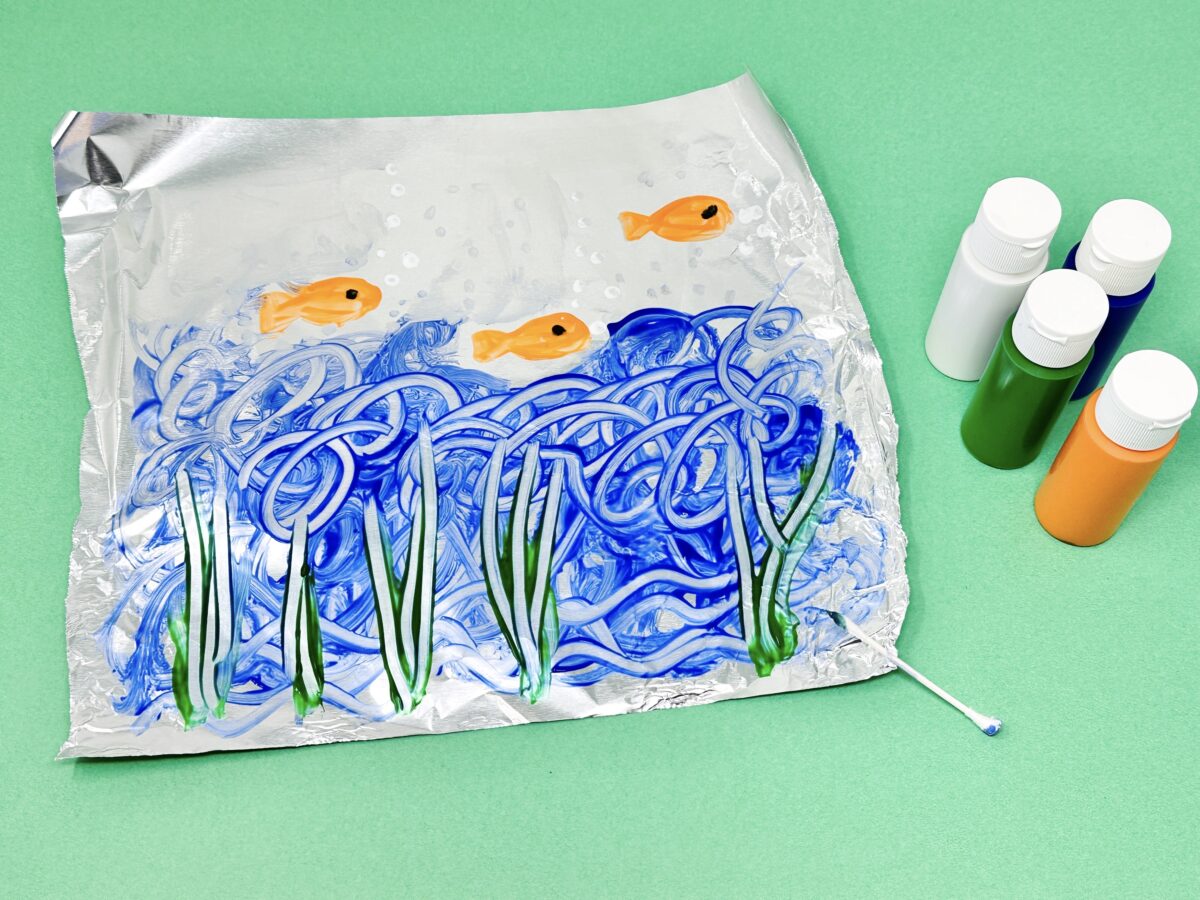
Supplies:
- tin foil
- paint
- cotton swabs
- marker
Instructions:
1. Set Up the Materials
Place a sheet of aluminum foil on a flat surface and squeeze small amounts of acrylic paint directly onto it.
2. Create the Ocean
Have your child use a cotton swab or paintbrush to swirl the paint around, mimicking ocean waves.
3. Add Details
Use more paint and cotton swabs to add sea plants and paint or glue on paper fish to complete the underwater scene.
Keep Deep Sea Exploring!
Continue exploring the ocean with our free printable Ocean Animal Coloring Pages.
9. Ice Painting Craft
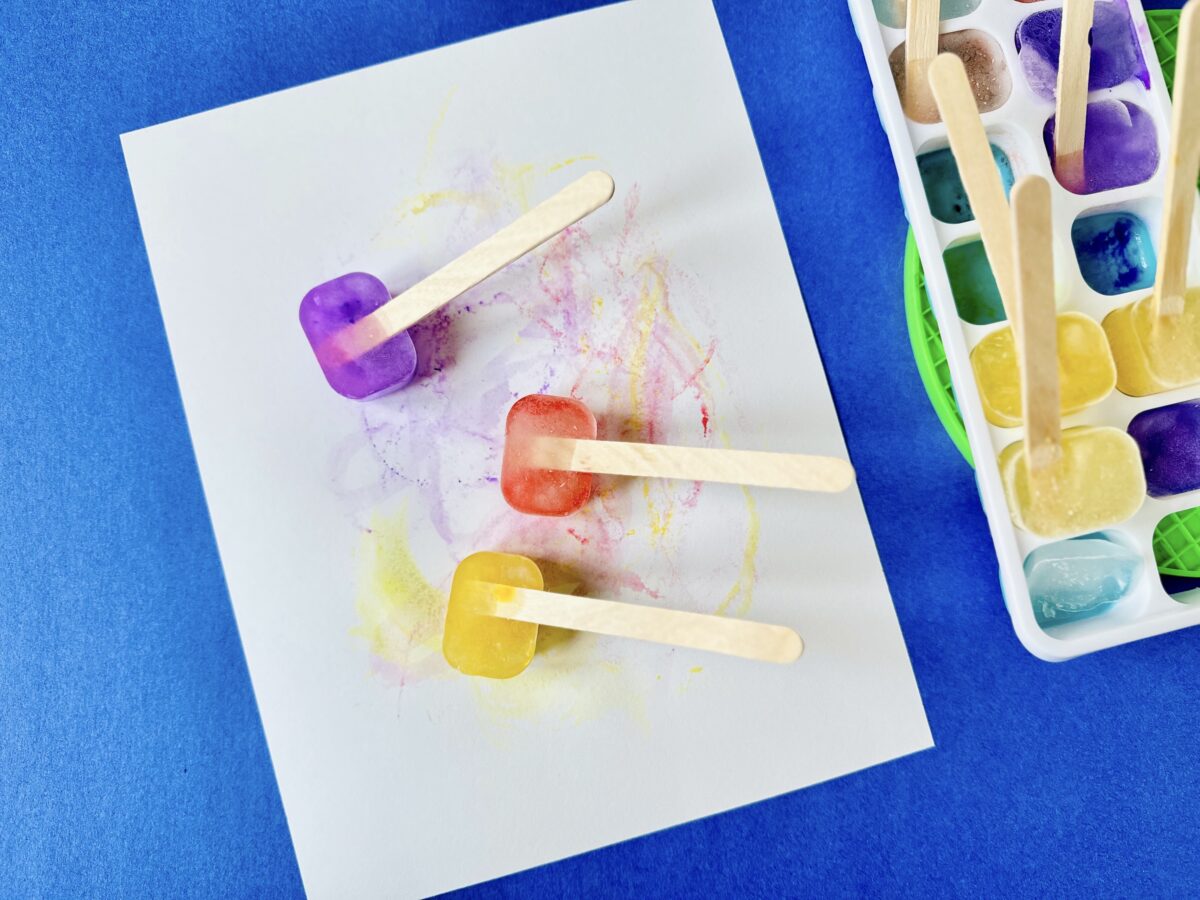
Supplies:
- ice cube tray
- water
- food coloring
- craft sticks
- thick paper or card stock
Instructions:
1. Prep the Ice Paint
The night before, mix food coloring with water in small bowls, pour the mixtures into an ice cube tray, and place a craft stick in each compartment. Freeze overnight.
2. Paint with Ice
The next day, give your child a thick sheet of paper or card stock. Let them use the colorful ice cubes to paint by holding the craft sticks as handles.
Mess Prevention Tip:
You may want to line your table with newspaper or place the card stock on baking sheets to add a layer of protection from any melting ice cubes.
10. United States Letter Craft
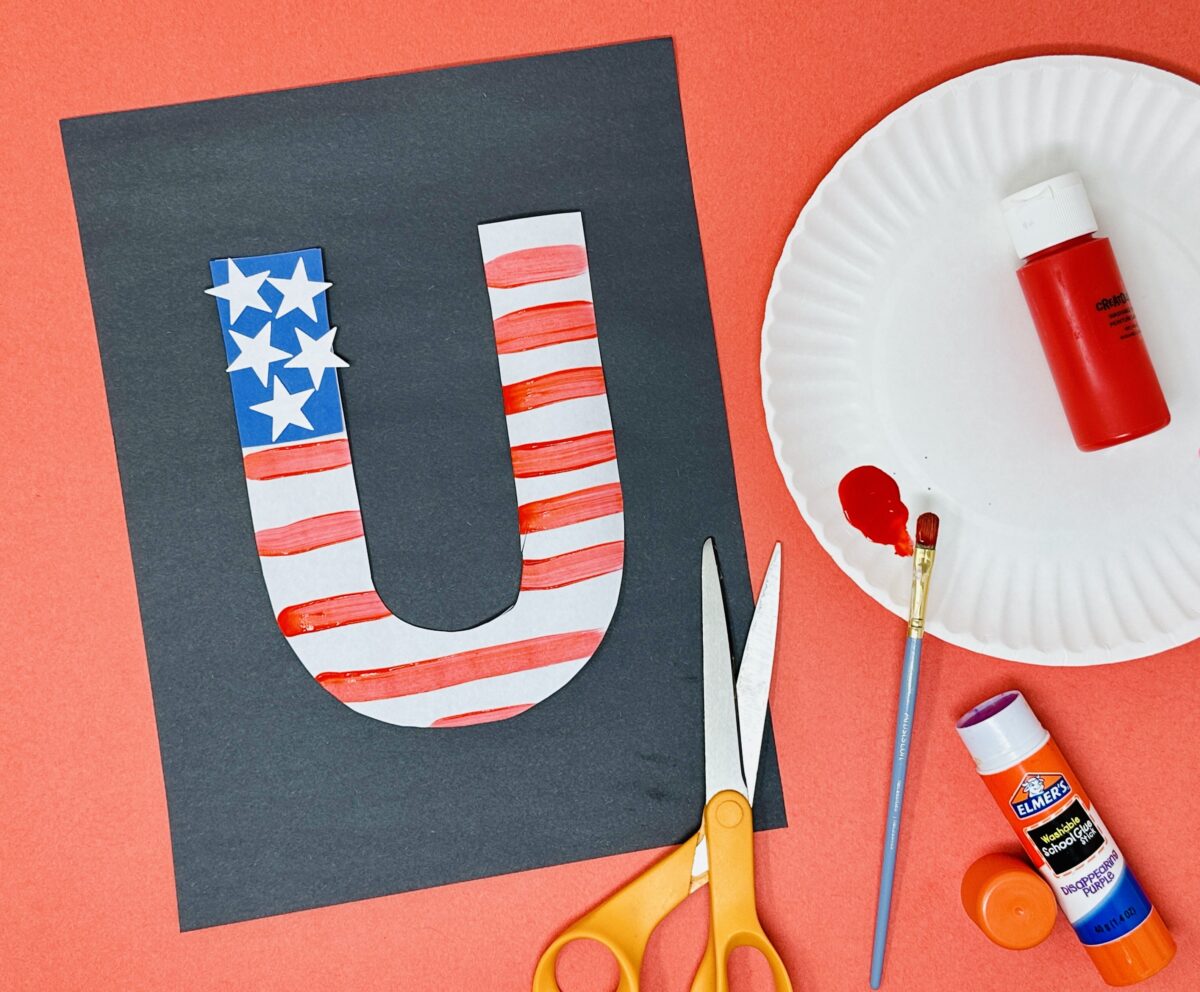
Supplies:
- letter U outline
- red paint
- blue construction paper
- paper plate or paint tray
- paint brush
- star stickers or paper shapes
- scissors
- glue
Instructions:
1. Cut Out the Letter U
Draw or print a large outline of the letter U, and glue a small blue square to the top left corner. Use this letter U template in our letter U worksheets if needed.
2. Add the Stripes
Have your child paint red stripes across the rest of the U to mimic the American flag.
3. Finish with Stars
Add white star stickers or glue on small paper stars to the blue square for a patriotic touch.
More Summer Holiday Fun:
If you’re looking for more patriotic activities, check out our Memorial Day and Fourth of July coloring pages!
11. Nature Painting Craft
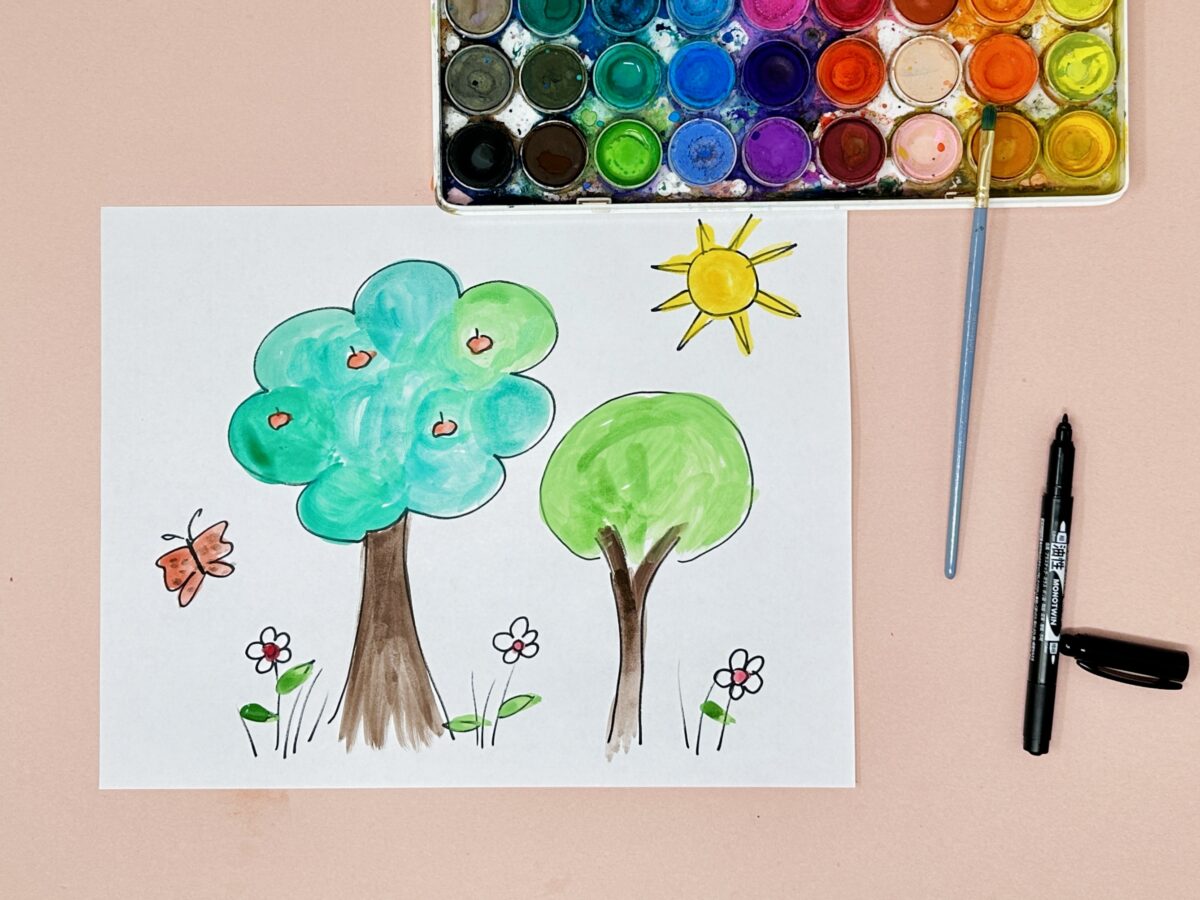
Supplies:
- thick paper or card stock
- watercolor paints
- pain brush
- marker
Instructions:
1. Set Up Outside
If the weather’s nice, head outdoors with your child, bringing along painting supplies, a clipboard, and a bin to hold everything.
2. Create a Nature Scene
Have your child use crayons, markers, or paint to draw what they see in nature.
3. Practice Observation Skills
As your child works, encourage them to observe and talk about the things they see, smell, and hear and then try adding those elements into their art.
Summer Hands-on Crafts
12. Silly Plant Hair
Supplies:
- soil
- a photograph
- a plastic or paper cup
- grass seed
- glue
Instructions:
1. Prepare the Cup
Begin by gluing your selected photograph to the side of your paper or plastic cup, lining the top of the person’s head up with the top edge of the cup. Then fill the cup with soil, leaving about an inch of space at the top.
2. Plant the Seeds
Sprinkle the grass seed on top of the soil and gently sprinkle a little bit more soil over the seeds. The seeds do not need to be completely covered in soil.
3. Water the Seeds
Place your cup in a sunny window and spritz the seeds with water every day, being careful not to get your photograph wet. Watch the grass grow, forming long flowing hair that seems to sprout from the top of the photograph!
13. Sun Catcher Craft
Supplies:
- glue
- tissue paper
- paint brush
- scissors
- construction paper
Instructions:
1. Create the Template
Draw an animal shape (like a fish or turtle) on black paper and cut it out, including the center, to make an outline.
2. Cut the Tissue Paper
Cut tissue paper into small pieces—stacking sheets makes it faster.
3. Glue and Fill the Shape
Brush glue onto the outline and then start adding tissue paper, gluing it down from the edges inward until the whole shape is filled.
4. Add Details and Hang
Once dry, decorate your animal with features like eyes or a mouth. Then, punch a hole at the top, thread a ribbon or string through, and tie a knot for hanging. Hang your sun catcher in a sunny window and enjoy the colorful glow!
14. Slithery Snake Craft
Supplies:
- wire
- paper or plastic straws
- construction paper
- scissors
- beads
- wide marker
Instructions:
1. Cut Straws and Coil Wire
Cut several straws into small pieces. Then, grab your marker and wrap the wire around the marker, creating a coil. Stretch the coil out slightly.
2. Create the Snake
Slide a bead onto one end of the wire and bend the wire slightly so the bead stays in place. On the other end of the snake, slide the small pieces of straw on until half of the coil has pieces of plastic straws on it. Bend the remaining end of the wire in so the straw pieces stay in place. This is also where your snake’s head will go.
3. Cut Out and Glue on the Snake’s Head
Cut out two small oval shapes from the construction paper, creating the snake’s head. Draw on eyes and cut out a forked snake’s tongue. Glue one oval on to the top portion of the wire you bent in to keep the straws in place. Glue the other oval to the bottom. Let it dry completely.
4. Watch the Pieces Move
Once dry, turn your snake back and forth, watching the plastic straw pieces slide up and down the coil, creating an awesome visual effect.
Note: Excluding the ABCmouse YouTube videos, the ideas and pictures for this post were provided by Smitha Katti from smilingcolors.com
-
Simple and Creative Summer Crafts for Kids
Easy summer crafts for kids using paper, paint, and hands-on fun to explore letters, nature, and creativity with simple supplies.
-
Letter X Crafts and Activities for Preschoolers
Explore fun, hands-on letter X crafts and activities perfect for preschool learning with simple supplies and free printables.
-
Letter W Crafts & Activities for Preschoolers
Explore 10 whimsical letter W crafts for preschoolers using simple materials—fun, hands-on activities that spark creativity and support letter learning.
-
Free Brain Games for Kids (Online + Printable Fun!)
Free brain games for kids that build memory, logic, and early learning skills through fun puzzles, mazes, and matching games.
-
Free Online Bunny Themed Games for Kids
Play free bunny-themed games that build early math and reading skills with fun mazes, alphabet hops, and adorable activities for kids.
-
Letter V Crafts & Activities for Preschoolers
Explore fun, hands-on crafts for the letter V—perfect for preschoolers learning through creative alphabet activities and art projects.
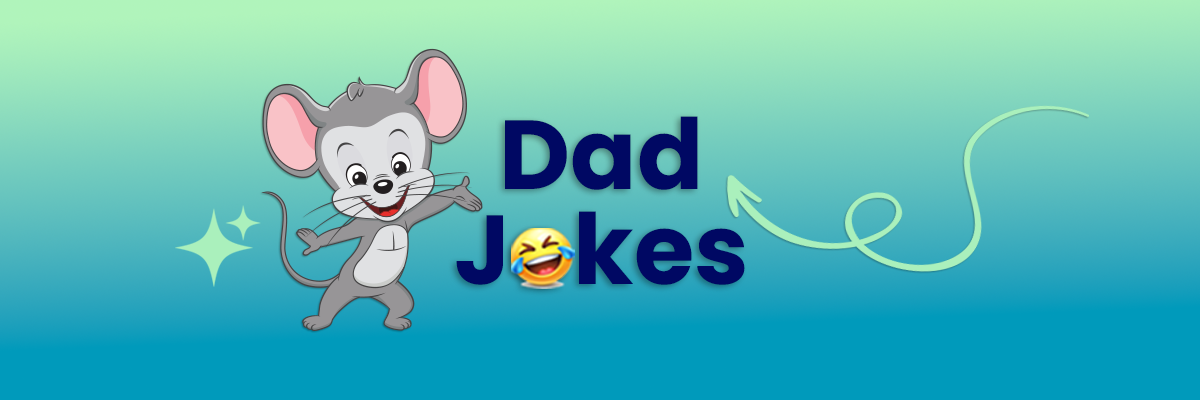
Share
200 Best Dad Jokes (Free Printables!)
Get ready to laugh (and groan) with this collection of hilarious dad jokes that you can print at home.
Whether you’re celebrating Father’s Day or just in need of a good laugh, these classic dad jokes are perfect for bringing smiles any day of the year!
From pun-filled one-liners to goofy jokes about food, weather, sports, animals, careers, and more, this collection has 200 different ways to crack everyone up. They’re corny, they’re clever, and best of all—they’re kid-friendly, making them great for sharing with the whole family.

Classic Dad Jokes
When does a joke become a dad joke?
When it becomes apparent.
What do you call a guy without kids who tells dad jokes?
A faux pas.
What country is growing the fastest?
Ireland. Every day it’s Dublin.
Which state has the most streets?
Rhode Island.
What do you call a factory that makes products that are just okay?
A satis-factory.
Why did the candle quit its job?
It was totally burned out.
Why was the queen a great ruler?
She was only 12 inches tall.
What’s the easiest building to lift?
A lighthouse.
What do you call a belt made of watches?
A waist of time.
Why did the belt go to jail?
Because it held up a pair of pants.
What did the zero say to the eight?
That belt looks good on you.
Why are sweaters so supportive of each other?
They’re pretty close knit.
What’s the best way to make a bandstand?
Take away all the chairs.
Why did the kids stock up on yeast?
They wanted to make some dough.
Where do pirates buy hooks?
The second hand store.
Why did the nose feel sad?
It was always getting picked on.
What did one DNA molecule say to the other?
Those genes look great on you.
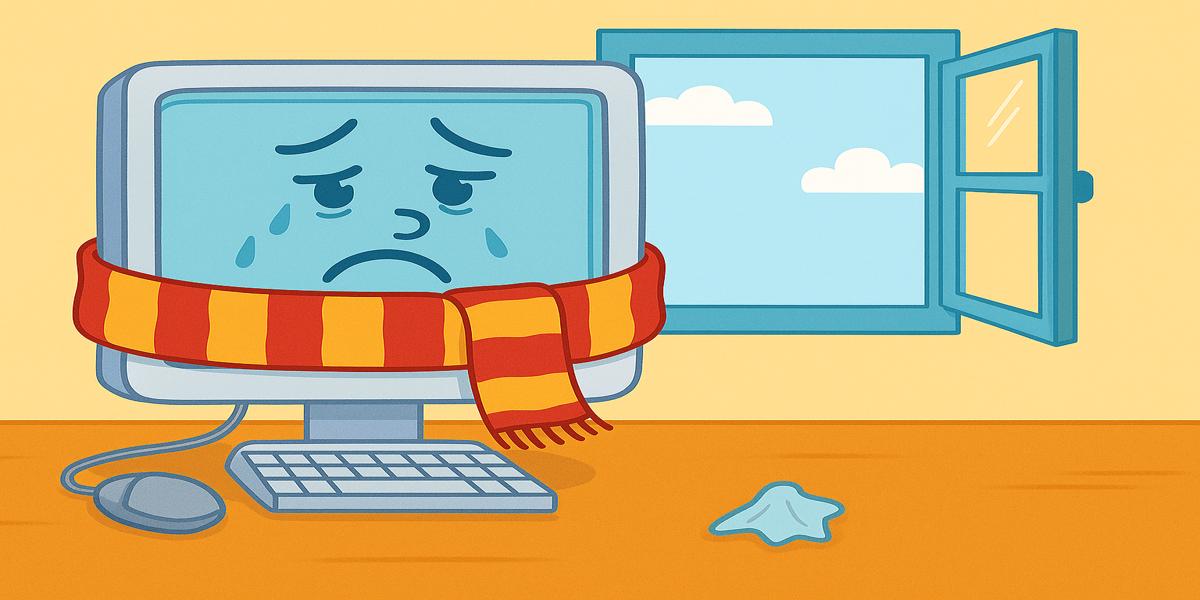
Why did the computer catch cold?
It left a window open.
What’s a robot’s favorite snack?
Computer chips.
Why do computers overheat?
Because sometimes they need to vent.
What do baby computers call their fathers?
Data.
Why did the computer get glasses?
To improve its website.
Where do rainbow go when they get arrested?
Prism.
What happens when you take a watch on a plane?
Time flies!
How do celebrities keep cool?
They have many fans.
What did one toilet say to another?
You look flushed.
Why didn’t the toilet paper make it across the road?
It got stuck in a crack.
What do you call a locomotive carrying bubble gum?
A chew chew train.

Why are elevator jokes so good?
They work on many levels.
What did one wall say to the other?
I’ll meet you at the corner.
Where do crayons go on vacation?
Color-ado.
Did you hear the joke about déjà vu?
Did you hear the joke about déjà vu?
Did you hear about the circus fire?
It was in tents.
What sits on the bottom of the ocean and has anxiety?
A nervous wreck.
What’s blue and doesn’t weigh much?
Light blue.
Why was Cinderella so bad at soccer?
She kept running away from the ball!
What did one hat say to the other?
Stay here! I’m going on ahead.
What do kids play when they have nothing else to do?
Play bored games.
How do you make 7 even?
Take away the s.
How did the piano get locked out of its car?
It lost its keys.
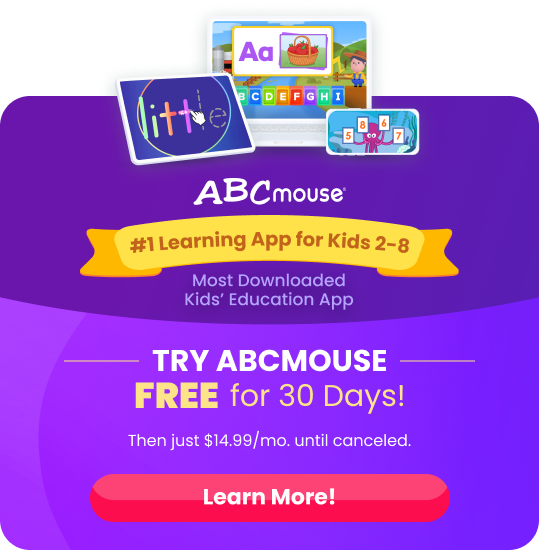

One-Liner Dad Jokes
I have a joke about chemistry, but I don’t think it will get a reaction.
Singing in the shower is fun until you get soap in your mouth. Then it’s a soap opera.
People say they pick their nose, but I was born with mine.
I heard it was a terrible summer for Humpty Dumpty, but apparently he had a great fall.
I used to play piano by ear. Now I use my hands.
I used to have a fear of speed bumps, but I’m slowly getting over it.
I don’t trust those trees. They seem kind of shady.
I don’t trust stairs. They’re always up to something.
If a child refuses to nap, are they guilty of resisting a rest?
I used to hate facial hair…but then it grew on me.
Be careful in the grass–it’s full of blades!
I saw two row boats get into an argument the other day. It was quite an oar-deal.
I have a joke about a pencil with two erasers, but it’s kinda pointless.
I used to always want to be a baker, but turns out I was a little too kneady and couldn’t make enough dough.
I got into an argument with a skunk the other day. It really caused a stink.
I met a guy giving away dead batteries. They were free of charge.
Did the hear about the ice cream truck accident? It crashed on a rocky road.
I asked a librarian to recommend an author of dinosaur books. She said “Try Sarah Topps.”
Can you believe how much it costs to swim with sharks? I heard it’s an arm and a leg.
I had to get a neck brace last year and I haven’t looked back since.
It takes guts to be an organ donor.
I saw a cheese factory explode once–da-brie was everywhere.
I’m so good at sleeping, I could do it with my eyes closed!
Mountains aren’t just funny. They’re hill areas.
I have a joke about pizza, but it’s a little cheesy.
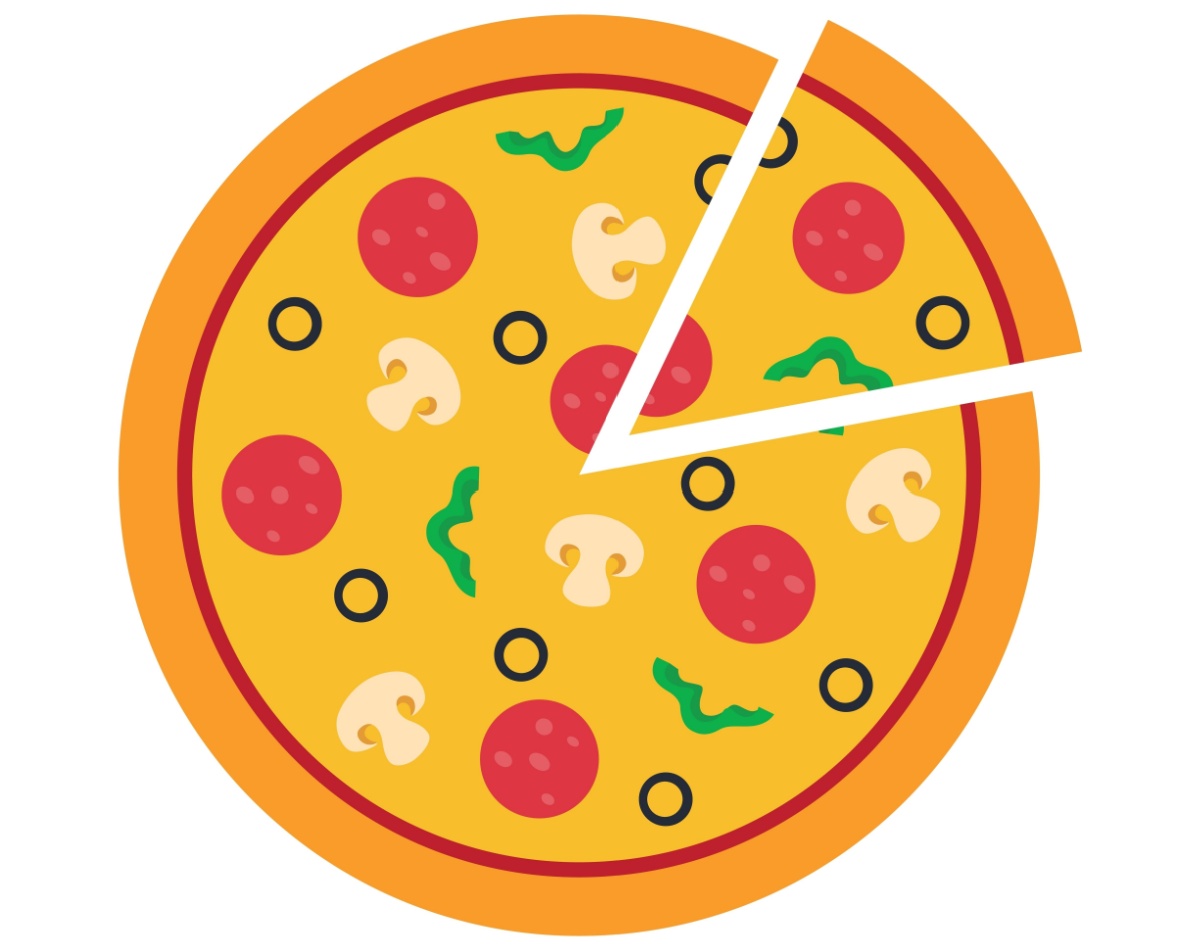
I had a bad sausage at dinner last night. It was the wurst.
I wouldn’t buy anything with velcro. It’s a total rip-off.
I don’t often tell dad jokes, but when I do, he always laughs.
I’m always getting sick during the week–it must be my weekend immune system.
My dad told me a joke about boxing but I missed the punch line.
I’m reading a book about anti-gravity. I can’t seem to put it down.
I was going to tell a sodium joke, then I thought, “Na.”
I finally realized who keeps stealing from me when I take a bath. It was a robber duckie.
I met a dog that does magic tricks. It was a labracadabradoodle.
I had to send my favorite picture to jail. Turns out it was framed.

Dad Jokes About Animals
What do horses say when they fall down?
Help! I’ve fallen and I can’t giddy-up!
What do you call a well-balanced horse?
Stable.
How much money does a skunk have?
Just one scent.
What do you call birds that stick together?
Velcrows
Where do birds like to go on vacation?
Someplace cheep.
What kind of bird works on a construction site?
A crane.
What kind of sandals do frogs wear?
Open-toad.
What happened to the frog that parked illegally?
It got toad.
What has more lives than a cat?
A frog, because it croaks every day.
How does a buffalo say goodbye to his son?
Bison.
What’s the best smelling insect?
A deodor-ant.
What kind of bug can tell time?
A clock-roach.
What do you call a fly without wings?
A walk.
What do you call an anxious fly?
A jitterbug.

Why are fish so easy to weigh?
Because they have their own set of scales.
Why couldn’t the fish get its grades up?
Because he was always below sea level.
What fish can give you an appendectomy?
A sturgeon.
What do you call a fish wearing a bowtie?
So-fish-ticated.
What do you call a fish without an eye?
Fsh.
Why did the deer go to the dentist?
It had buck teeth.
Why do dragons always stay up so late?
Because they like to fight knights.
What do you call it when a cow grows facial hair?
A moo-stache.
What do cows read the most?
Cattle-logs.
What do you get from a pampered cow?
Spoiled milk.
Why are cows’ feet called hooves?
Because they lactose!
Why do cows wear bells?
Because their horns don’t work.
What do you say to a cow blocking your way?
“Moooo-ve!”
Why did the cow go to Hollywood?
To be in the moo-vies.
How do you stop a bull from charging?
Cancel its credit card.
How do ducks buy lipstick?
They put it on their bill.
Why can’t you trust doctors who work on ducks?
Because they’re all quacks.
What time do ducks wake up?
At the quack of dawn!
Why did the turkey join a band?
To get better use of its drumsticks.
What do you call a sleeping dinosaur?
A dino-snore.
What do you call a singing bear?
A beartitone.
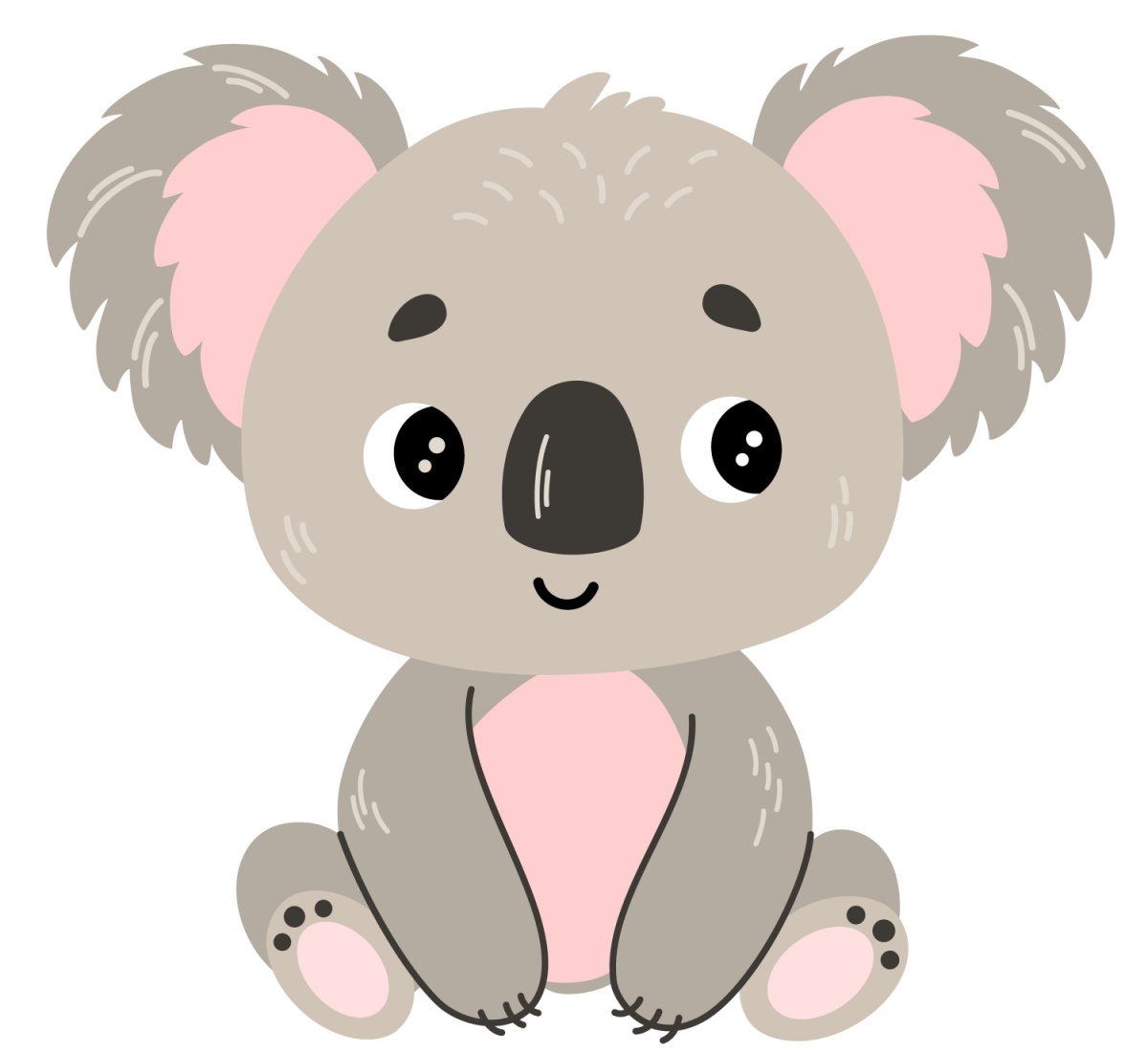
Why aren’t koalas considered bears?
They don’t meet the koalafications.
What type of bear is toothless?
A gummy bear.
What do you call a pony with a sore throat?
A little hoarse.
What did the leopard say after dinner?
That hit the spot.
What animal is the worst at hide-and-seek?
A leopard–he’s always spotted.
Why did the dog float in the water?
He was a good buoy.
What should you do if your puppy gets sick?
Take it to the dog-tor.
What do you call a cold puppy?
A chili dog.
What did the spider study at college?
Web design.
What kind of felines enjoy bowling?
Alley cats.
Where did the cat go after losing its tail?
The retail store.
How do you get a squirrel to like you?
Act like a nut.
What keys unlock a banana?
Mon-keys
How do mice floss their teeth?
With string cheese.
What do you call an elephant that doesn’t matter?
An irrelephant.
Why are elephants wrinkly?
Because you can’t iron them.
What do you get when you cross a fish and an elephant?
Swimming trunks.
What kind of cars do sheep drive?
Lamborghinis.
Where do sheep go on vacation?
The Baaaa-hamas.
What do you call a herd of sheep falling down a hill?
A lambslide.
How many tickles does it take to make an octopus laugh?
Ten tickles.
What would bears be without bees?
Ears.
What do you call a pig that knows karate?
A pork chop.
What do pigs use to get cleaned up?
Hogwash.
Why can’t you play basketball with pigs?
They’re ball hogs.
How can you tell if a pig is hot?
It’s bacon.
How did hummingbirds get their name?
Because they don’t know the words to any songs!
What animal is dishonest?
A lion.
Where do baby cats swim?
The kitty pool.
What do you call a pile of cats?
A meow-ntain.
How did the cats finally end their fight?
They hissed and made up.
How do you identify a bald eagle?
Its feathers are always combed over to one side.
What does a bee use to brush its hair?
A honeycomb!
What do you call a bee that can’t make up its mind?
A maybe.

Dad Jokes About Sports & Activities
Why do fathers take an extra pair of socks when they go golfing?
In case they get a hole in one.
What does a sprinter eat before a race?
Nothing, they fast!
How do you get a good price on a sled?
You have toboggan.
What lights up a soccer stadium?
A soccer match.
How do you know when a bike is thinking?
You can see its wheels turning.
Why couldn’t the bicycle stand up by itself?
It was two tired.
What’s the difference between a poorly dressed man on a tricycle and a well-dressed man on a bicycle?
Attire.
What did the football coach say to the broken vending machine?
Give me my quarterback.
Where do boats go when they’re sick?
To the boat doc.

Dad Jokes About Food
What kind of music do tortillas like?
Wrap
How do you make an egg roll?
Just push it.
What kind of car do eggs drive?
Yolkswagens.
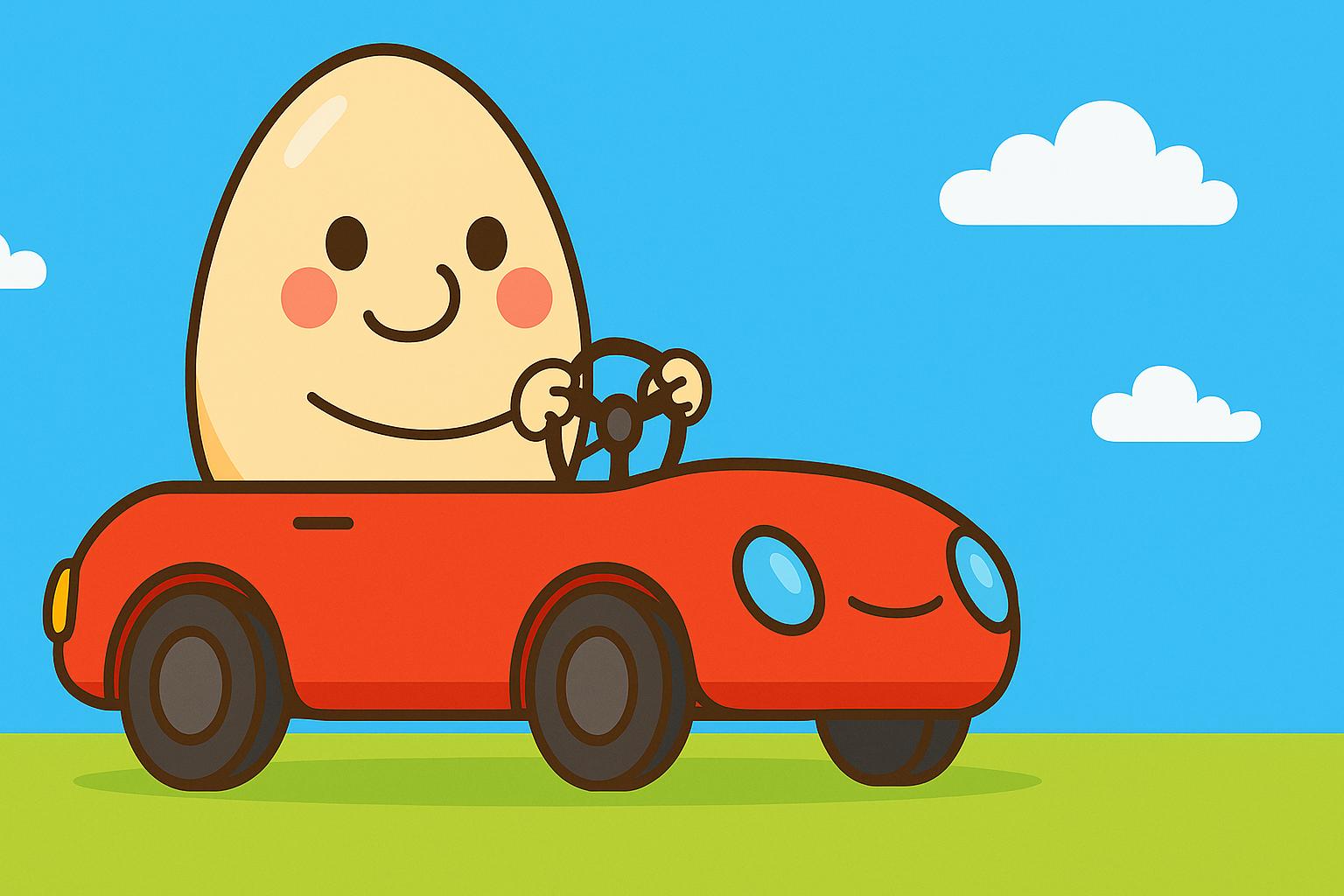
What happens when ice cream gets angry?
It has a meltdown.
How do you fix a broken tomato?
With tomato paste.
Did you hear the rumor about butter?
Well, I’m not going to spread it!
What did the hamburger name its baby?
Patty.
What did the cucumber say to the pickle?
You mean a great dill to me.
What do you call a sad strawberry?
A blueberry.
Why did the orange stop halfway across the road?
It ran out of juice.
How do you keep bagels from running away?
Just put lox on it.
What type of cheese is always lonely?
Provolone.
What do you call a chicken that’s looking at some lettuce?
Chicken sees a salad!
How do you make a glass of water bouncy?
Fill it with spring water.
What do you call fake spaghetti?
Impasta
What’s small, red, and has a rough voice?
A hoarse raddish.
What do you call a potato wearing glasses?
A spec-tater.
What do you call an angry piece of broccoli?
A steamed veggie.
Why are peppers the best at archery?
Because they habanero.
Why don’t bananas ever feel lonely?
Because they tend to hang out in bunches.
Why did the banana go to the doctor?
It wasn’t peeling well.
What do sea monsters eat?
Fish and ships.
What do you call shoes that are made from bananas?
Slippers.

What kind of tea is sometimes hard to swallow?
Reality!
What do nuts say to each other when playing tag?
Imma cashew!

Dad Jokes About the Weather & Great Outdoor
What did the ocean say to the beach?
Nothing. It just waved.
What did the beach say when the tide came in?
Long time no sea.
How can you tell if a tree is a dogwood tree?
By its bark.
How do trees get on the internet?
They log in.
How does the moon cut his hair?
Eclipse it!
Why is it good to meditate during a storm?
It can be very en-lightning.
What did the earthquake say when it was done?
Sorry, my fault!
Why is it bad to iron a four leaf clover?
Because you should never press your luck.
What do clouds wear under their shorts?
Thunder pants!
What trees can fit inside your hand?
Palm trees.
What game are tornadoes the best at?
Twister.
What did one tornado say to the other?
I’ve got my eye on you.
Why is it pointless to fight with clouds?
They always storm out.
What member of the orchestra is most likely to get struck by lightning?
The conductor.
What causes it to rain money?
When there’s a change in the weather.
What type of weather is the hardest to employ?
Lightning–it’s always on strike!

Dad Jokes About Work & Jobs
What do lawyers wear to court?
Lawsuits.
What did the janitor say when he jumped out of the closet?
Supplies!
What did the drummer name her twin daughters?
Anna 1, Anna 2.
What number do ballerinas love?
Two-two
What do you call a happy cowboy?
A jolly rancher
Why didn’t the chef season his entree?
He ran out of thyme.
Why did the king go to the dentist?
He needed to get a crown.
What did the dentist get to celebrate her anniversary at work?
A little plaque.
Where do math teachers go on vacation?
Times Square.
What happens when doctors get frustrated?
They lose their patients.
How did the barber win the race?
He knew a short cut.
What does a painter do when he gets cold?
Puts on another coat.
Why did the employee go work in stilts?
She wanted a raise.
Did you hear about the archaeologist who was fired?
His career is in ruins.
How do you get an astronaut’s baby to stop crying?
Just rocket.
How do astronauts organize a trip?
They planet.

Why don’t astronomers like the constellation Orion’s Belt?
They think it’s a big waist of space.
Why’d the roofer go to the doctor?
He had shingles.
What time did the man go to the dentist?
Tooth hurt-y.
What do you call someone who raises hens?
A chicken tender.
Why can’t sailors learn the alphabet?
Because he always got lost at “C.”
What do you call a magician without any magic?
Ian.
How can you tell when a comedian passes gas?
Something smells funny.
Why are politicians often out of breath?
They’re always running for office!
What’s a dermatologist’s favorite food?
Baked ziti.

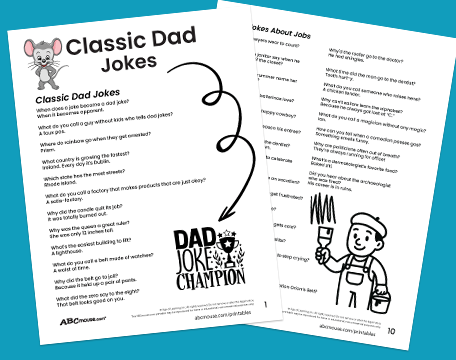

-
200 Best Dad Jokes (Free Printables!)
Get 200 kid-friendly dad jokes with free printables—perfect for Father’s Day or anytime laughs!
-
Easter Jokes and Riddles for Kids (Free Printables)
Make Easter extra fun with 100+ jokes and riddles! Enjoy Easter Bunny puns, egg jokes, and knock-knock laughs. Perfect for kids, classrooms, and family fun!
-
Spring Jokes for Kids! (Free Printables)
Enjoy 85+ spring jokes for kids, from silly puns to fun riddles! Brighten the season with laughter, plus grab free printable joke cards for extra fun.
-
Rhyming Riddles for Kids (Free Printables)
60 fun rhyming riddles for kids! Boost vocabulary and thinking skills with these playful puzzles. Free printable list included!
-
120+ Winter Jokes & Riddles (Free Printable List)
Discover over 120 winter jokes and riddles perfect for kids and families! From snowman puns to polar bear laughs, enjoy printable lists featuring seasonal humor to…
-
70+ Valentine’s Day Jokes & Riddles for Kids and Adults (Free Printable List)
Bring laughter to Valentine’s Day with over 70 jokes and riddles that kids and adults will love! From animal puns to food-themed quips and classic knock-knock…
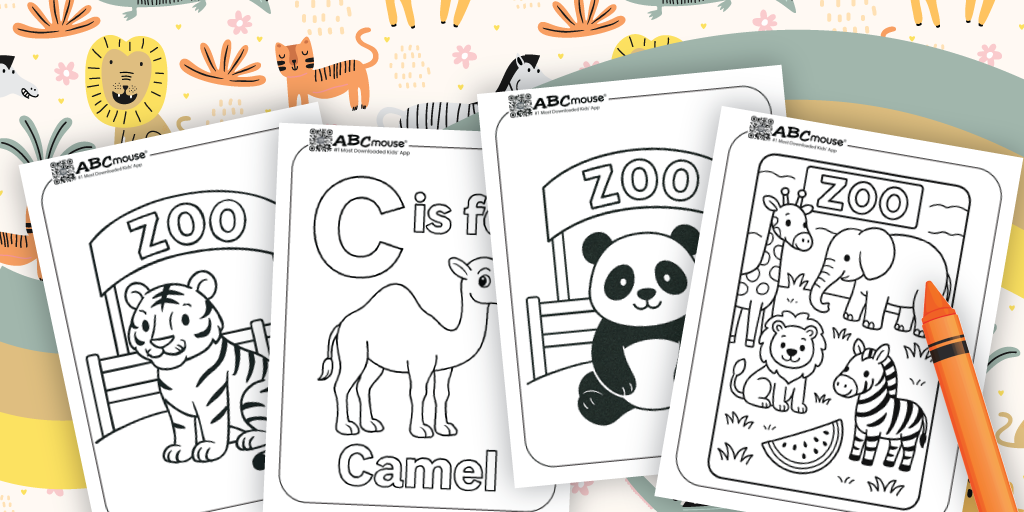
Zoo Animal Coloring Pages for Kids (Free Printables)
Table of Contents – Jump to Each Section
Get ready for some wildly creative fun with these zoo animal coloring pages! Kids can bring a variety of amazing animals to life with their favorite colors — from mighty lions and gentle elephants to sleepy sloths, colorful birds, slithery snakes, and so much more.
These free printable coloring pages are a great way for children to explore the animal kingdom at any age, with simpler images for young children and more detailed pictures for older kids (and even adults). Print out as many sheets as you’d like to keep on hand for a rainy day activity, preparation for a trip to the zoo, playdates, or just for fun!
Zoo Animal Coloring Pages
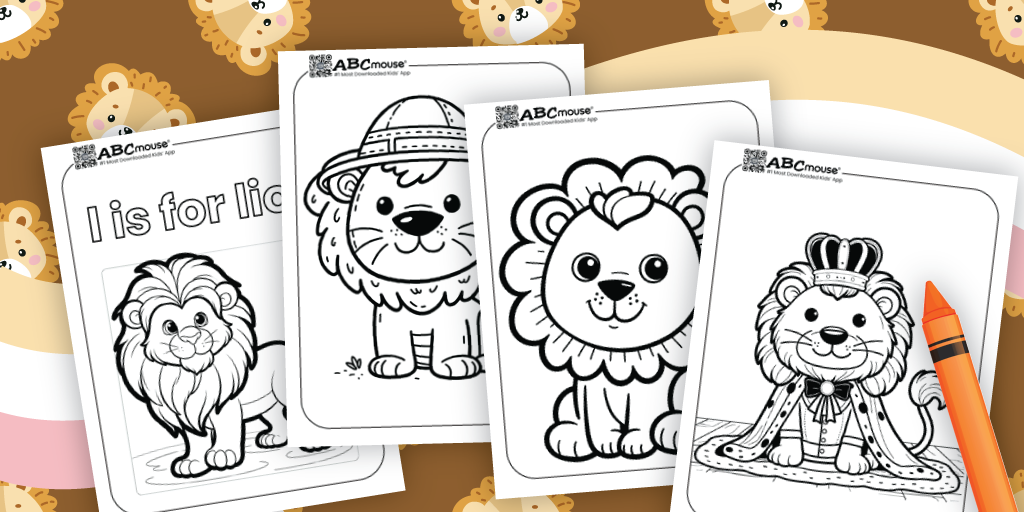
Kids will love coloring roar-some lions strolling through the jungle, wearing crowns, or getting ready for a safari. Pick from easy or complex images to color.
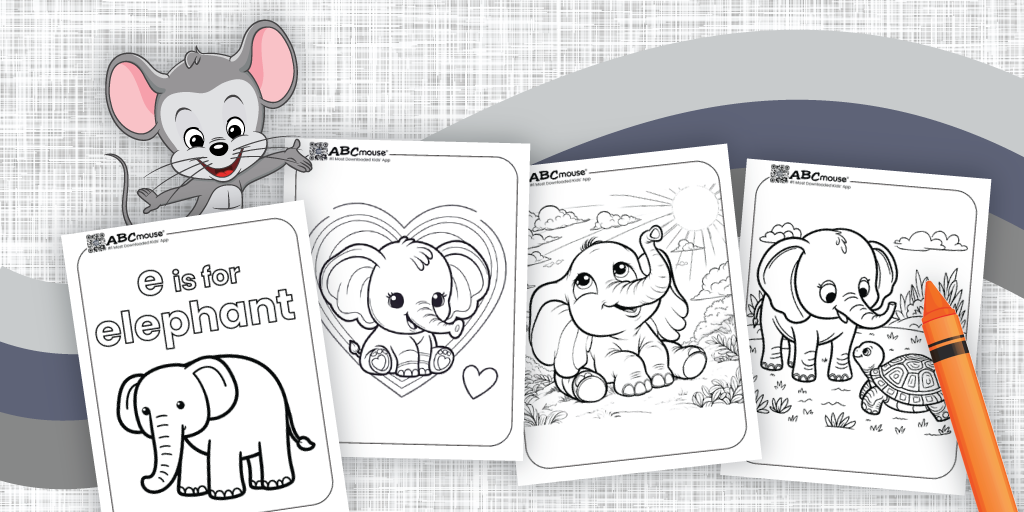
Sweet elephants fill these pages, including adorable ones and more detailed and realistic ones. Just pick the elephant that’s right for you!
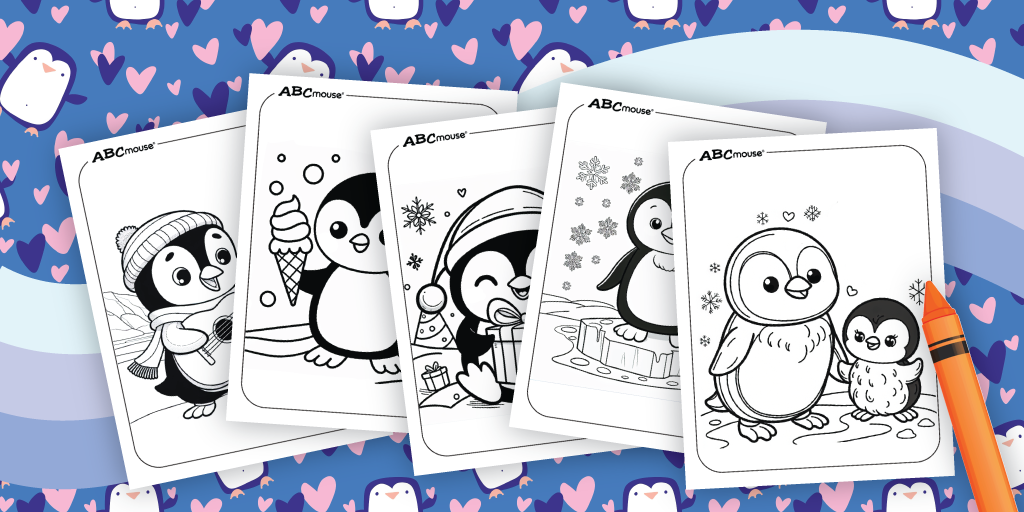
From baby penguins to penguins with their pals, these cool coloring pages capture this adorable bird in a variety of ways.
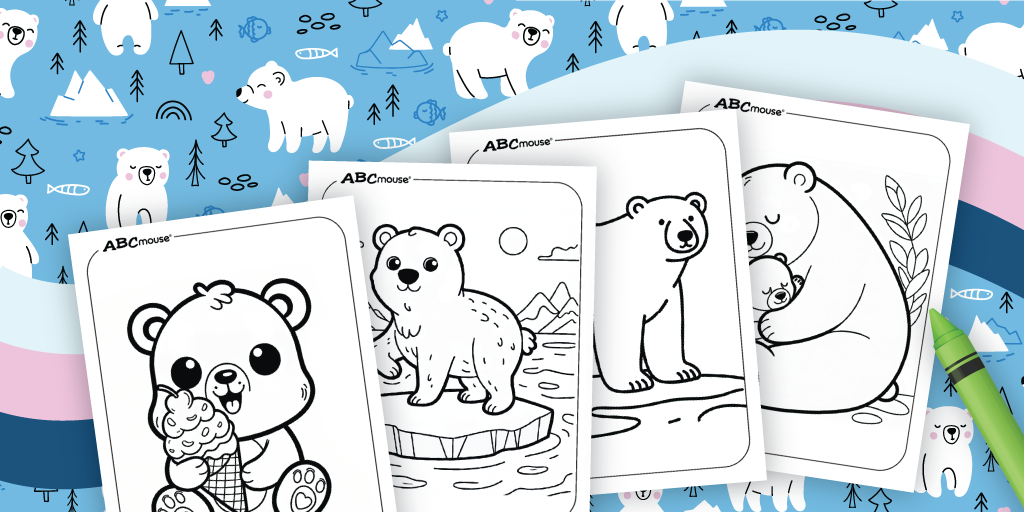
You’ll find polar bears with ice cream cones, floating on icebergs, or spending time with friends in this cute set of coloring pages.
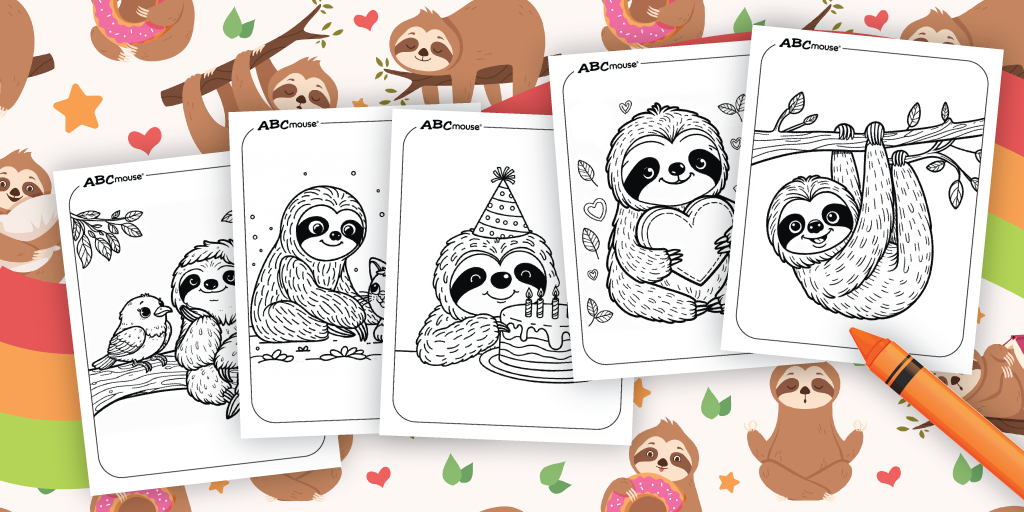
Slow-moving sloths sure are fun to color! Kids will love these sloths in silly scenes playing with friends or just hanging around.
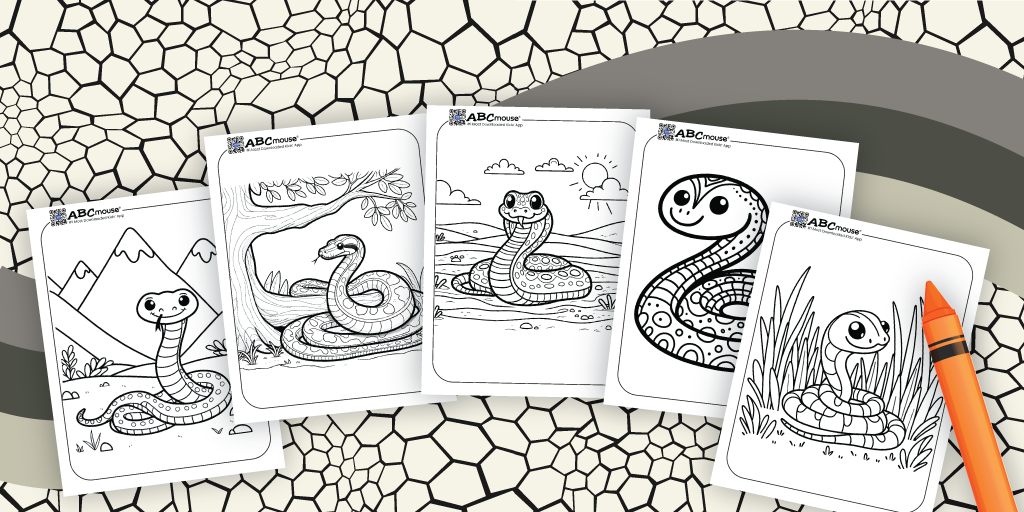
These sleek and slithering creatures sure look cute with big eyes and friendly smiles. There are realistic snakes to pick from too!
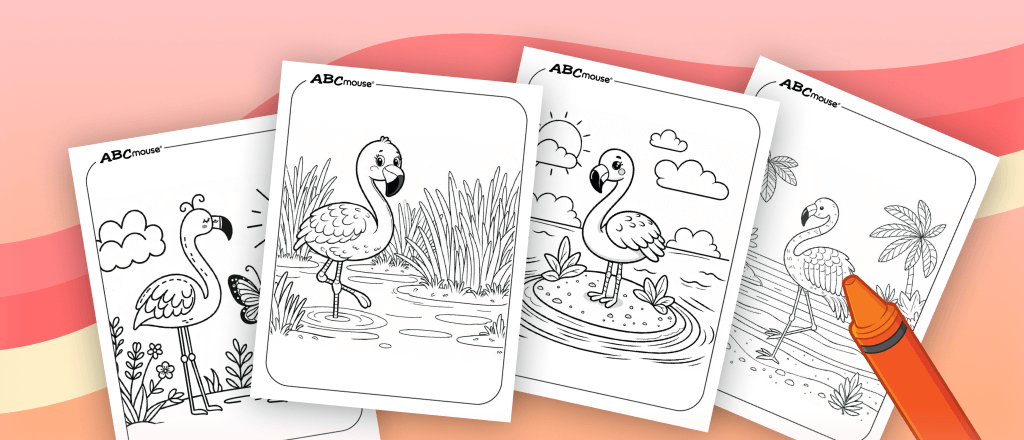
A variety of flamingos are awaiting your creativity! Pick from flamingos wading in the water, spending time with friends, or exploring nature on their own.
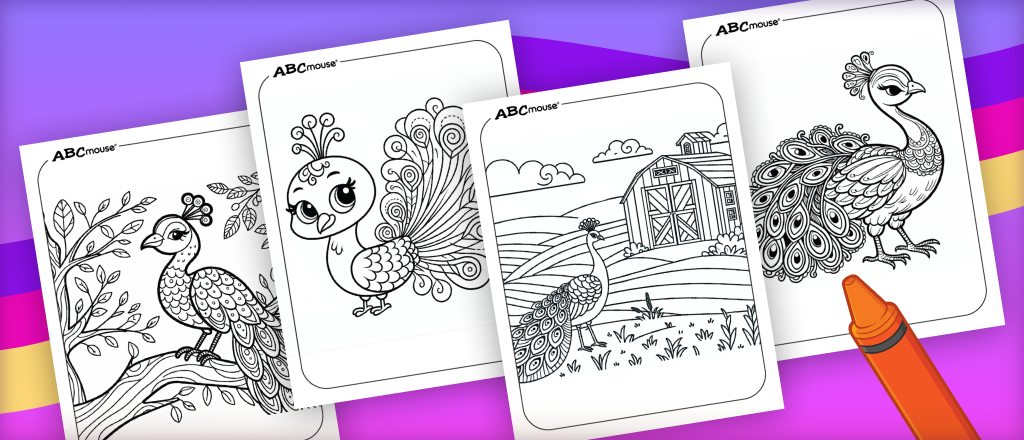
These peacocks strut their stuff in farm fields, tree branches, or even on their own. Either way, kids will enjoy adding the peacock’s unique colors to each of these coloring sheets.
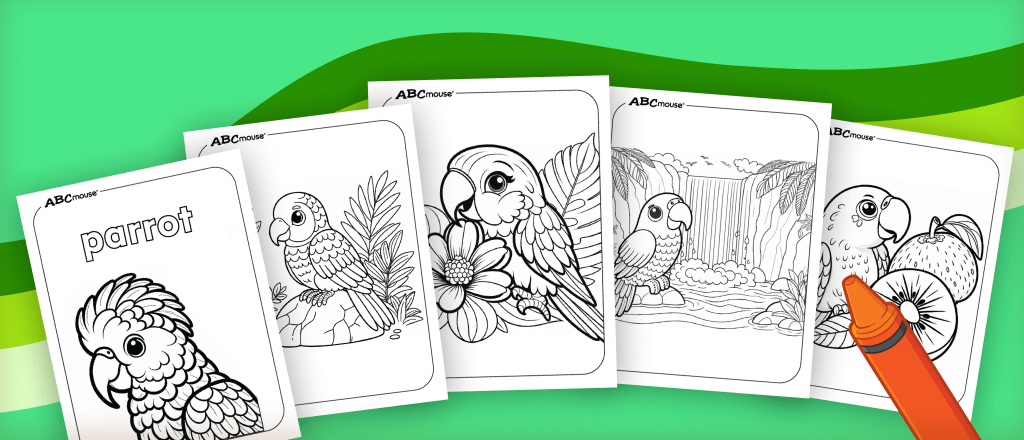
Kids can add their own colorful touch to these vibrant birds with this collection of free printable parrot coloring pages.
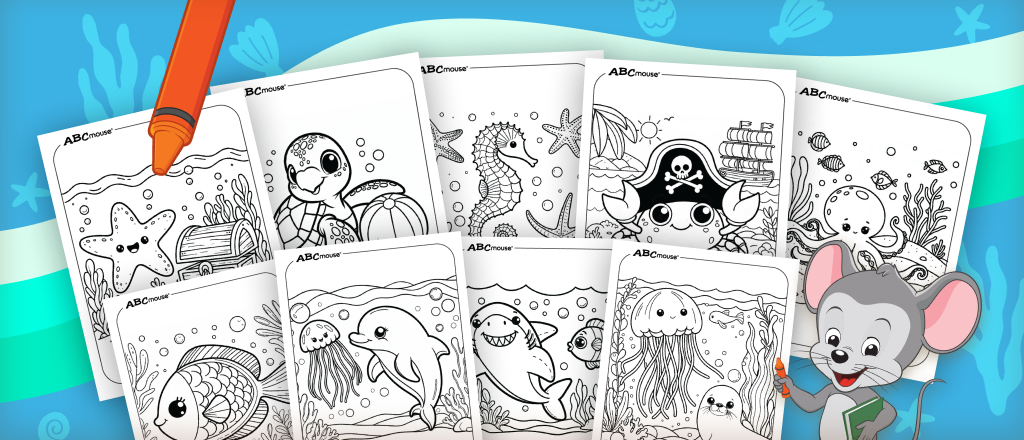
From seahorses to dolphins to starfish and sharks, this big collection of coloring pages features dozens of ocean animals.

Zoo Activities
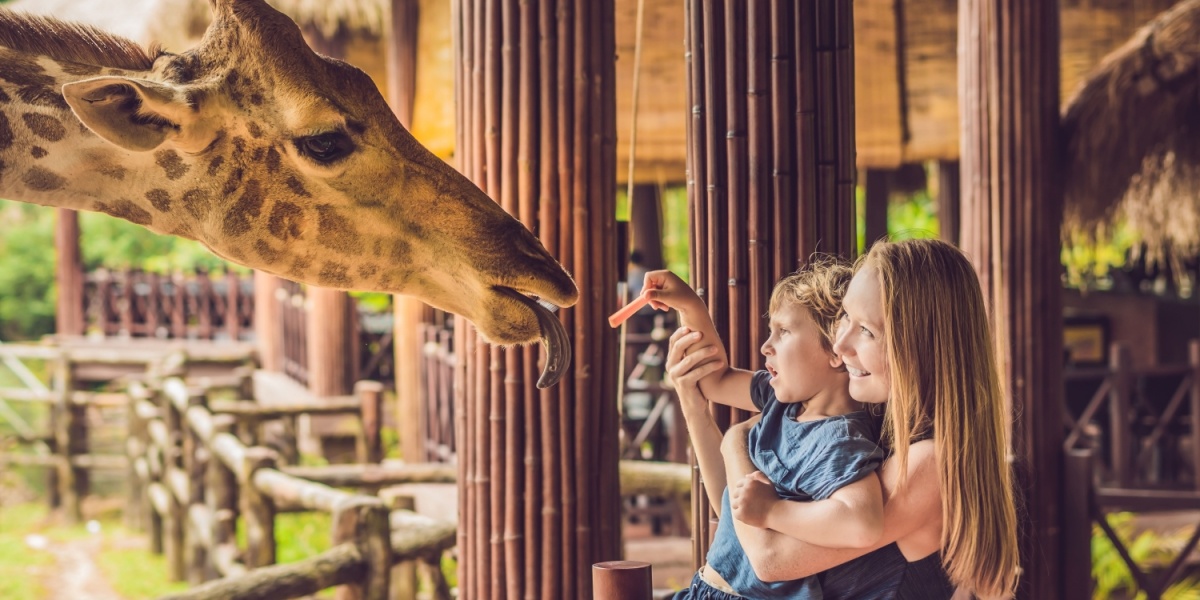
Lean into zoo learning even more with zoo animal crafts to do at home or in the classroom and a list of engaging activities to try at the zoo. Plus, learn interesting facts about a few zoo animals, too!

Games with Zoo Animals
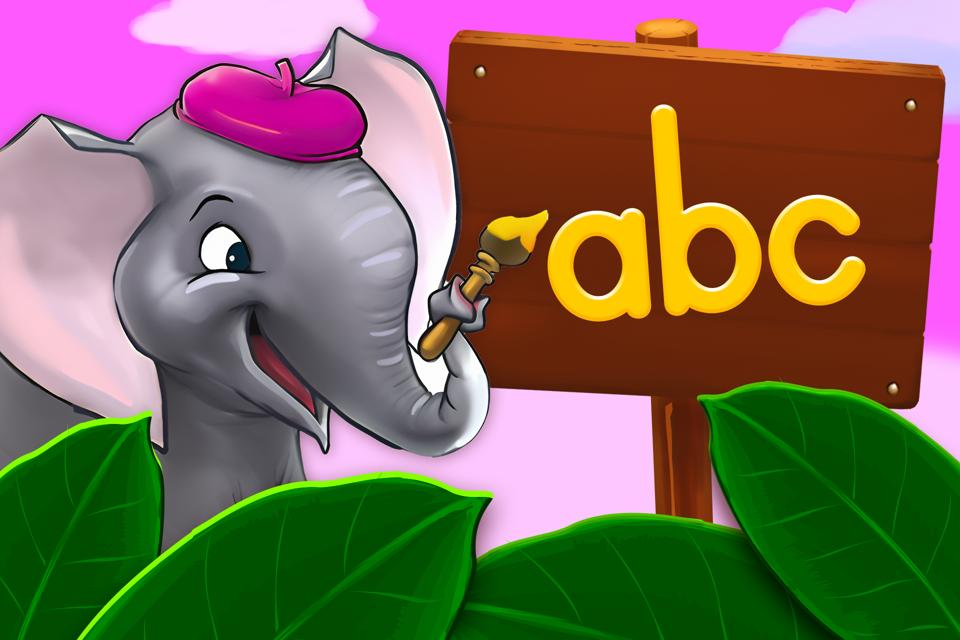
Letters at the Zoo: a b c
In this letter-learning game, players hear a letter and pick the one that matches what the elephant paints with its trunk!
Bright Smiles Safari
Help the hippo get its smile bright and clean with floss and good brushing. This health and self-care game is a great reminder of proper dental hygiene.
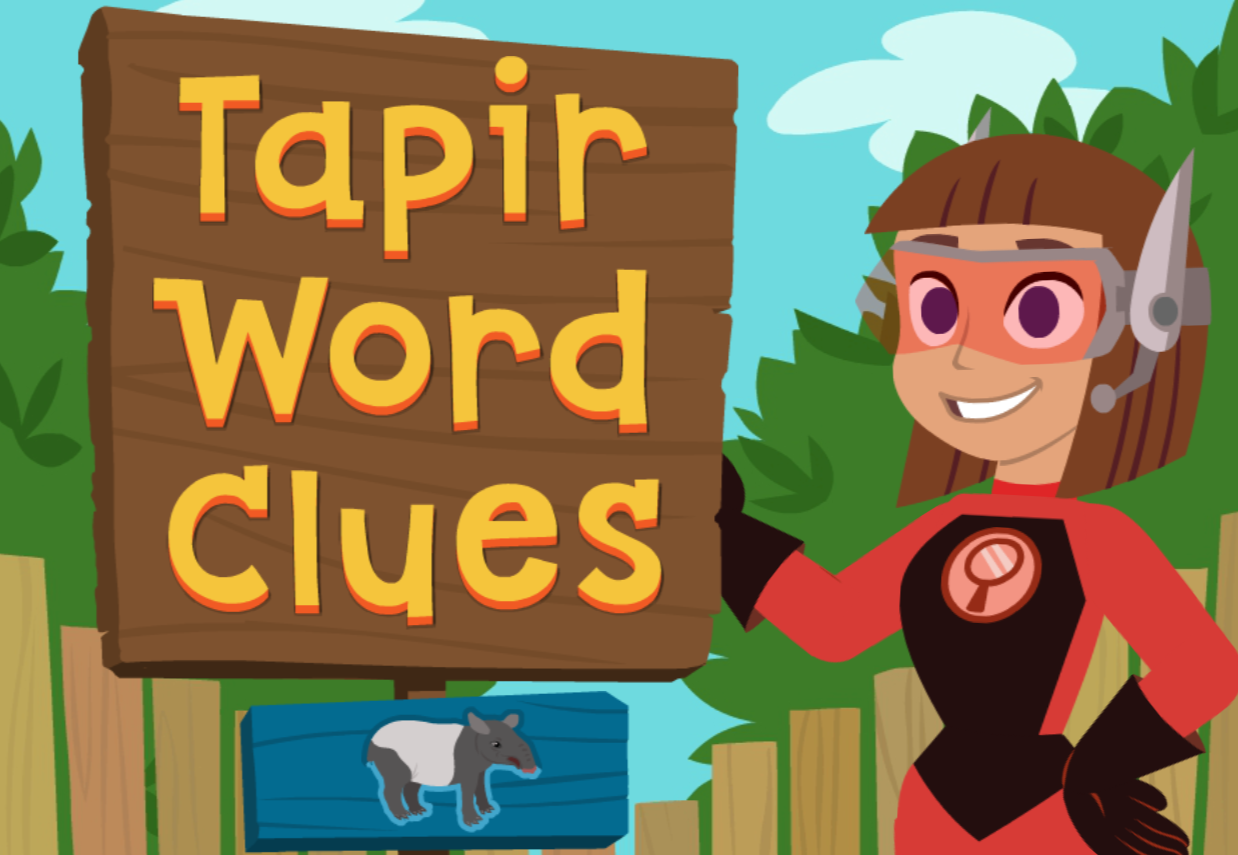
Tapir Word Clues
Help Didi the Daring Decoder determine the meaning of unfamiliar words in the tapir zoo exhibit by using context clues in the text and images of the signs.
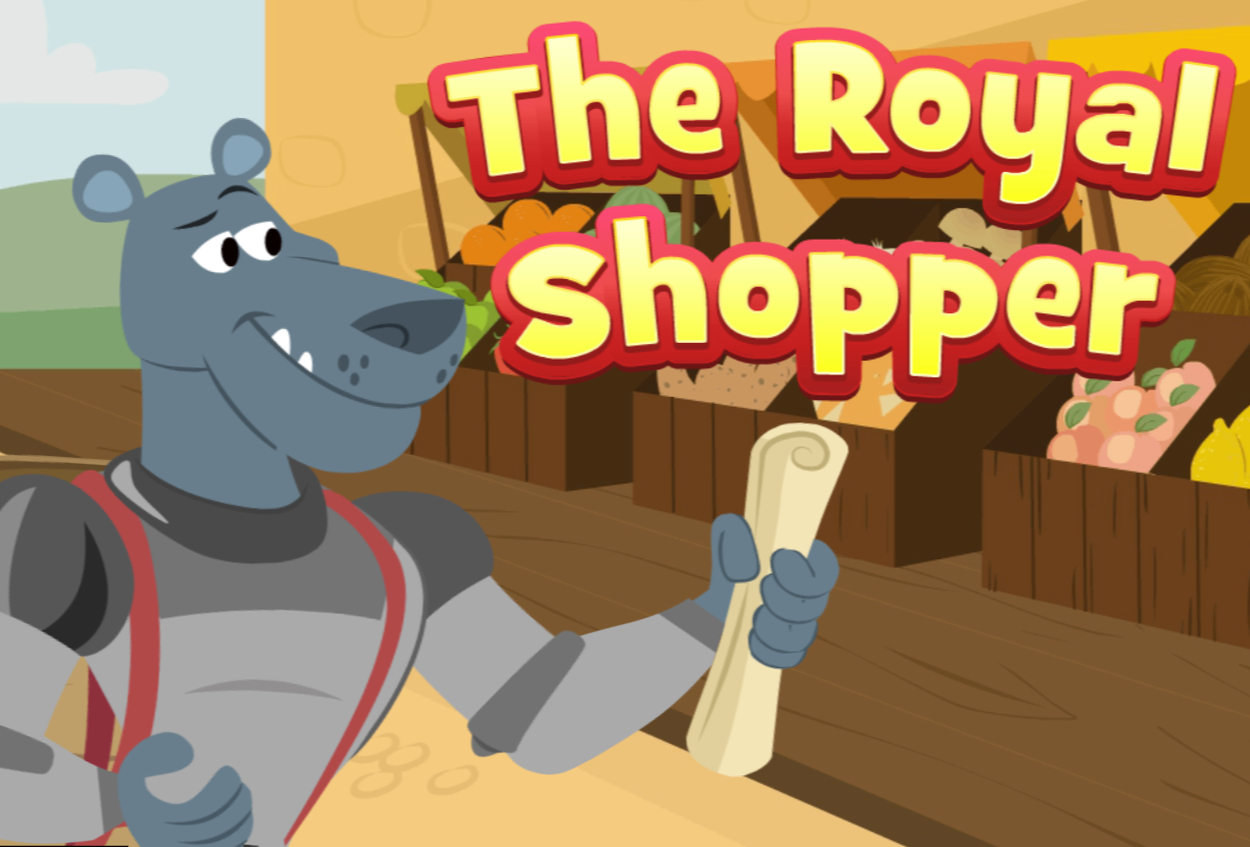
The Royal Shopper
The Panther Knight must shop for the king, but needs help decoding multisyllabic words that end with a consonant plus –el, –le, or –al.

Virtual Zoo Fun
Join ABCmouse on a journey to the zoo, where you’ll spend 15-minutes learning about many of the animals at the zoo.
Who Lives at the Zoo?
Sing and dance along with this fun and lively song about the animals at the zoo. It’s a guessing game too as kids try to figure out which animal they see based on hints in the video!
Letter X Crafts & Activities for Preschoolers
Share
Adds some fun and creativity to letter learning with crafts and activities dedicated to the letter X!
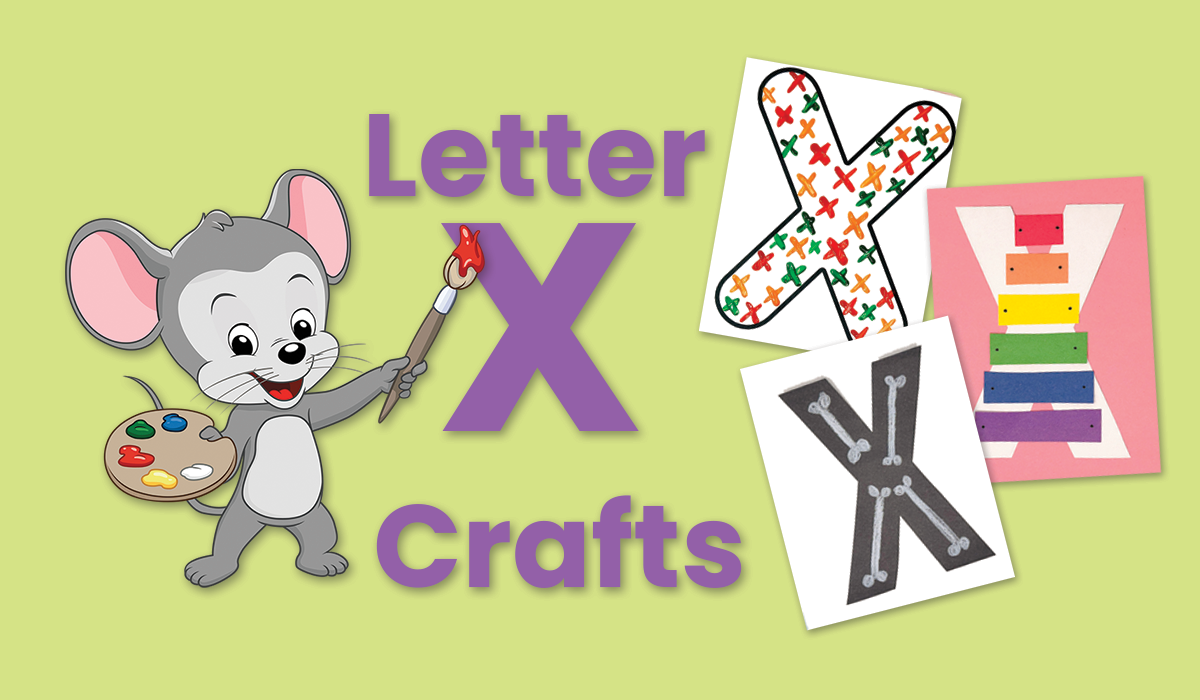
Table of Contents
Practicing the sounds and shape of the letter X can be tricky, as not many everyday words use this letter of the alphabet. These creative letter X crafts and activities are here to help! With simple art supplies and a bit of grown-up assistance, kids can explore this unique letter through playful, easy-to-do projects.
Some of these letter X crafts and activities require the outline of a letter X. You can draw one yourself or find one in our free printable collection of letter X worksheets.
1. X is for Xylophone
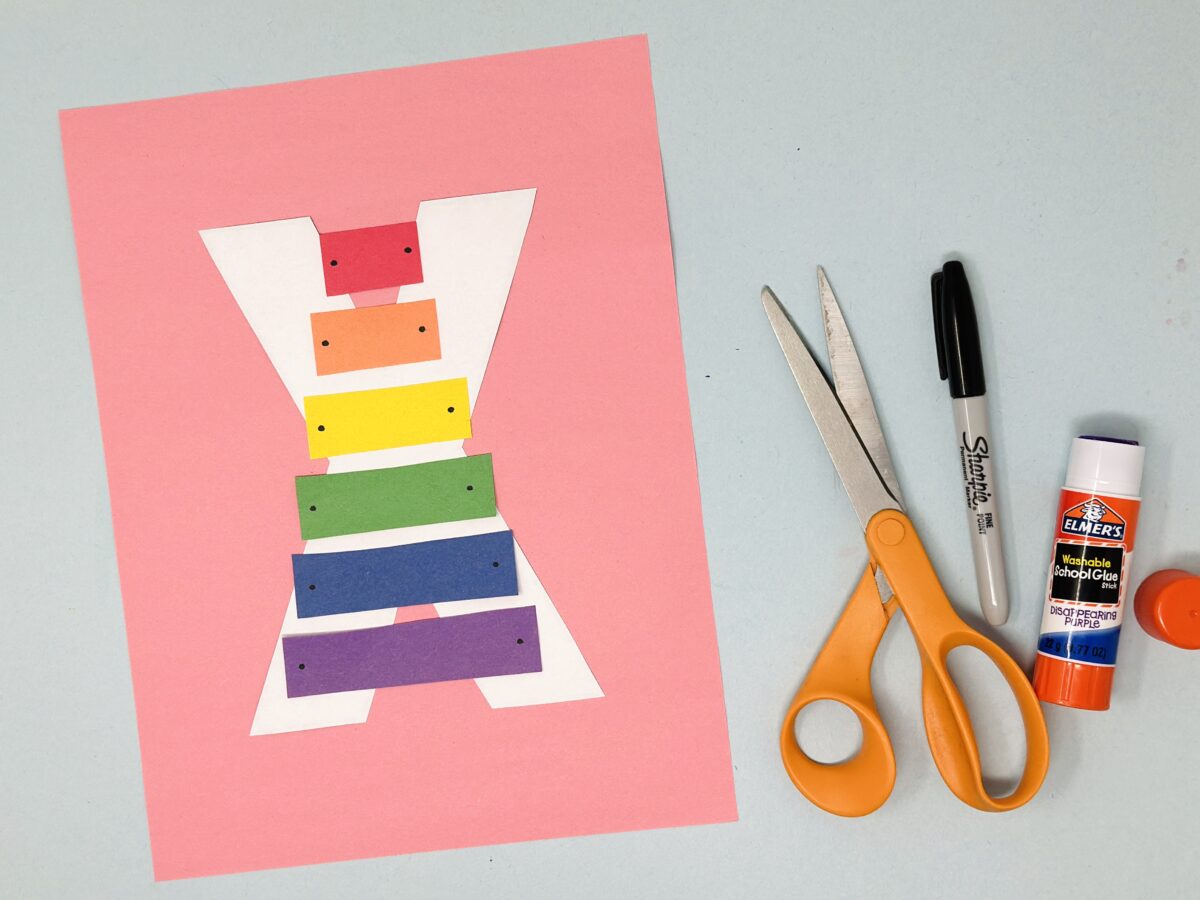
Practice with the letter X and work on learning color names in this paper craft!
Required Materials
- paper in various colors
- scissors
- glue
- marker
How To
Trace or print out the letter X onto a sheet of white paper and cut it out. Then have your child cut out rectangles in varying sizes from several different colors of paper, creating the bars of the xylophone.
Next, arrange the rectangles on the letter X with the largest rectangle on the bottom and the smallest rectangle on the top. Glue all the pieces down and add a dot on each end of every rectangle to mimic the screws that hold the bars of the xylophone in place. Now use your fingers and hum a tune to practice playing your xylophone!
2. X is for Exit
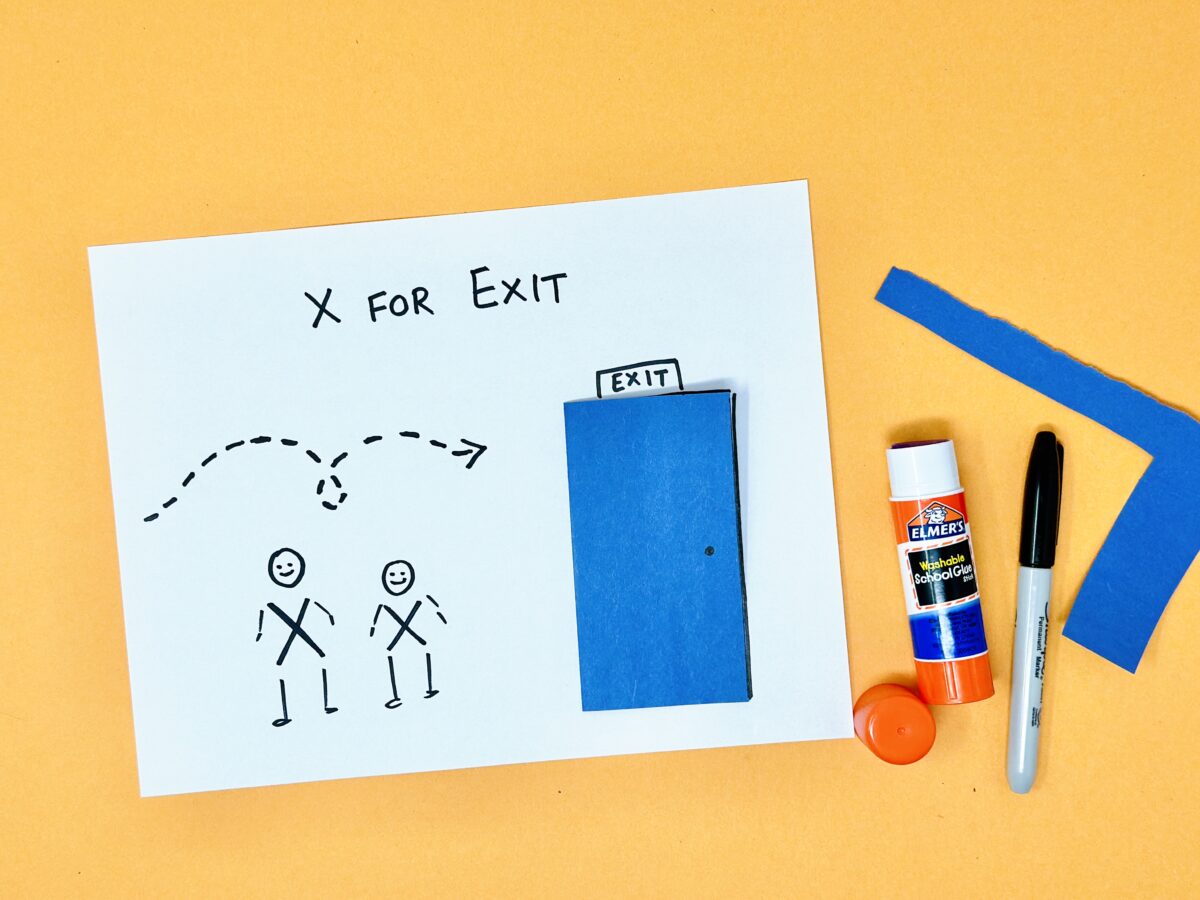
Craft a picture to illustrate the word “exit” with just paper and markers.
Required Materials
- white and blue paper
- black marker
- glue
How To
Draw a rectangle on one side of your white piece of paper. Cut a rectangle from a sheet of colored paper. It should be slightly wider than the rectangle you drew. Fold over a small portion of one of the longer sides of your rectangle. Place the rectangle over the one you drew, with the folded side facing down. Tape down the folded edge to the white piece of paper, allowing you to open and close it, creating a door.
Use a marker to write the word EXIT over the door and have your child draw one or two people or animals getting ready to exit through the door.
Tip: Cut out a hole behind the paper door and have your child use small toys to “exit” out of it!
3. Extra Xs Painting Activity
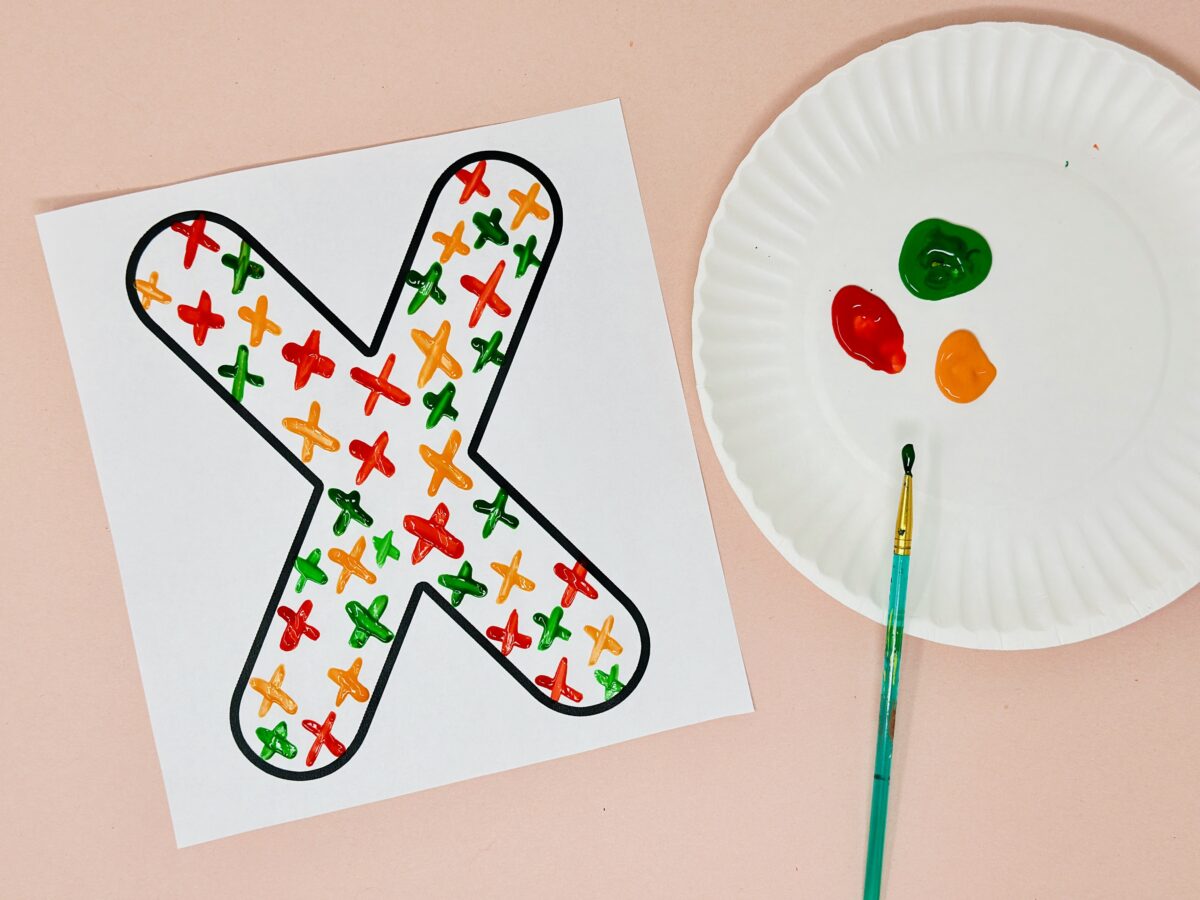
Fill a letter X with even more Xs, then count up how many you added!
Required Materials
- letter X outline
- paint brush
- paint
- paper plate
How To
Print or draw out the outline of a letter X onto a sheet of paper. Have your child pick out several colors of paint and add a bit of each one to a paint tray or paper plate. Then, ask them to use their paintbrush to fill in the letter X outline with as many Xs as possible. Count them up at the end, tallying the number of Xs you created with each color.
4. X is for Fox
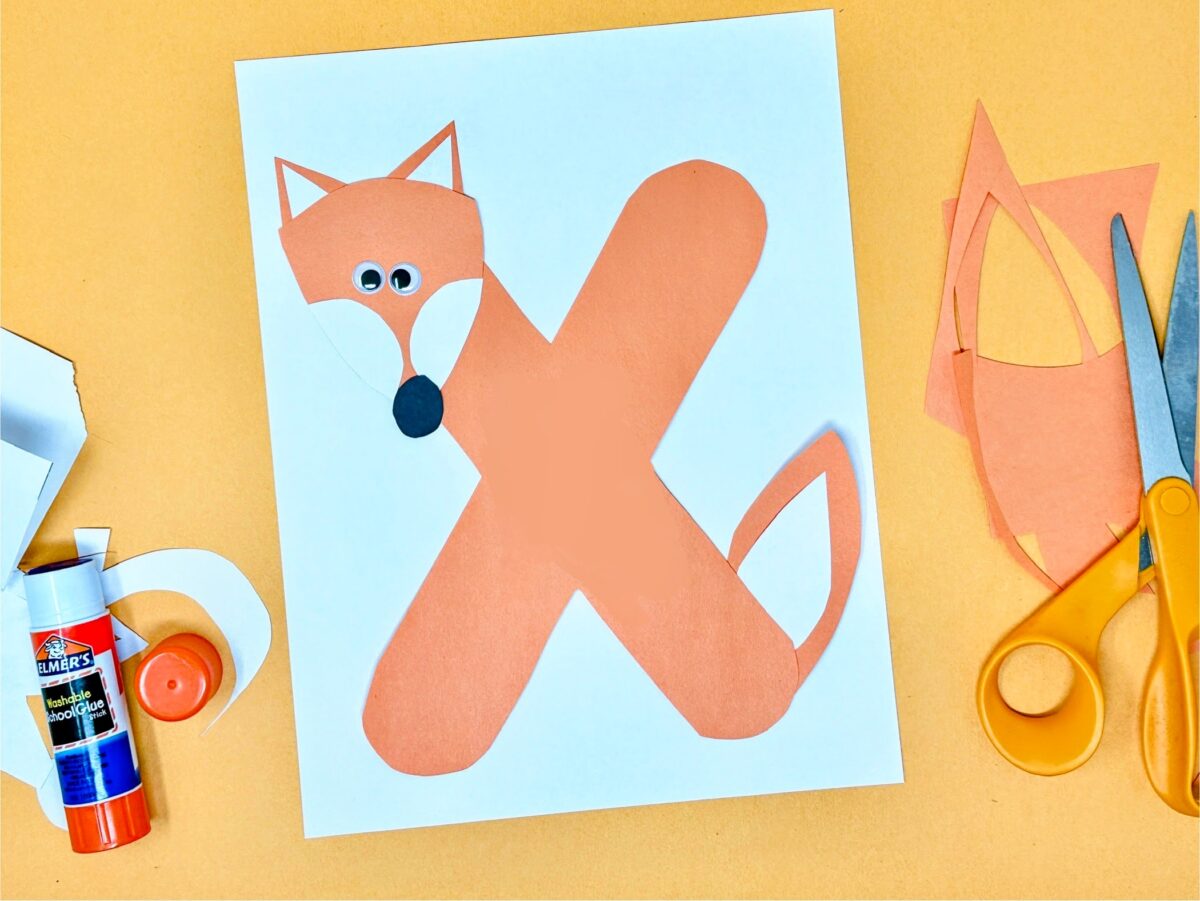
Turn the letter X into a frolicking fox with just a few snips of paper!
Required Materials
- orange, white, and black construction paper
- scissors
- glue
- googly eyes
How To
Draw the shape of a letter X onto a piece of orange paper and cut it out (use our letter X template from above if you need something to trace). Trace the shape of the fox’s head, tail, and ears onto the orange paper and cut them out (all of these shapes are slight variations on a triangle). Cut out smaller white triangles to form the inner part of the fox’s ears and tail. Cut out two oval semi-circles to form the fox’s cheeks.
Have your child assemble the pieces to create their fox, gluing them down when they’re ready. Use a black marker or a black circular piece of paper to create the fox’s nose. Glue down googly eyes to complete the fox’s cute face!
Tip: Have more fun with foxes with our free printable fox coloring pages.
5. X is for X-Ray
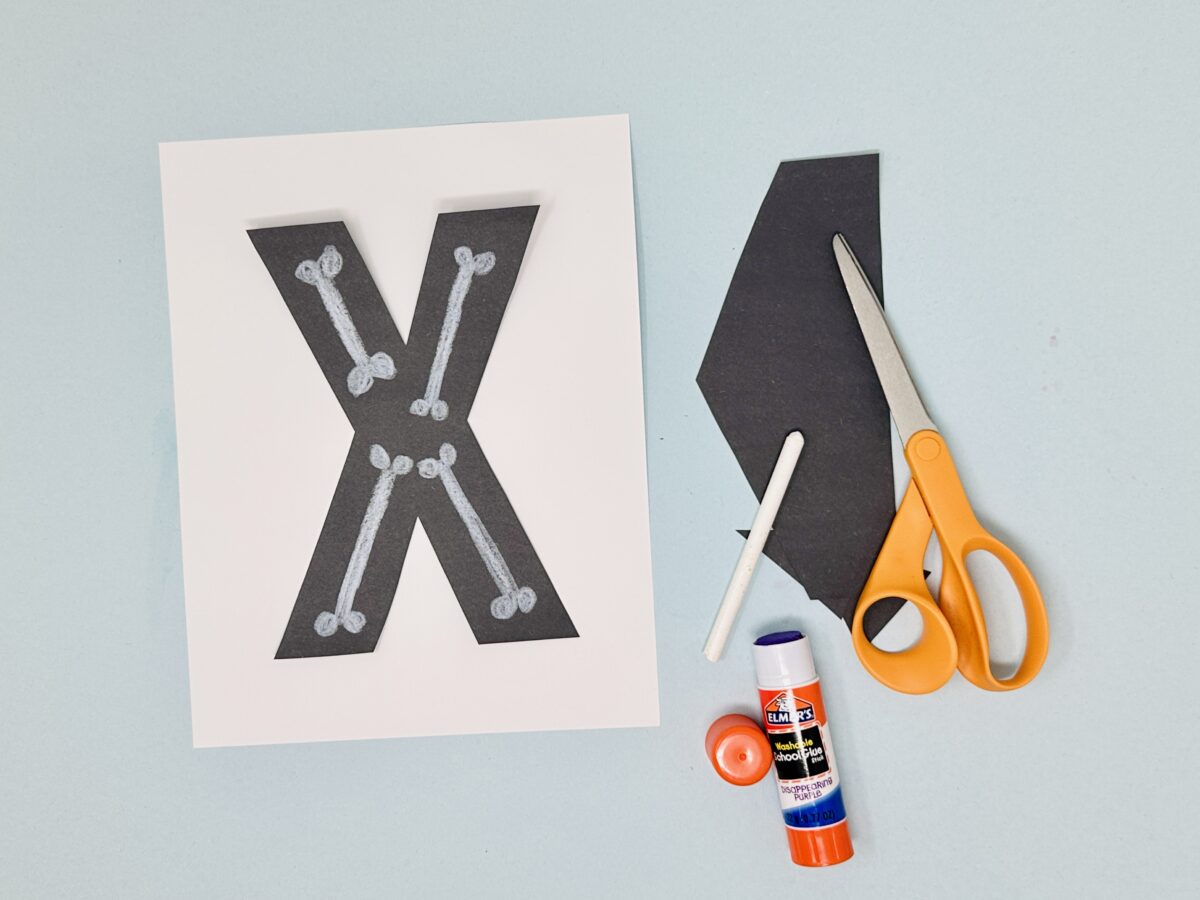
This letter X craft is great way to learn about this letter and the meaning of the word x-ray!
Required Materials
- black construction paper
- scissors
- white crayons or pencils
- glue
How To
Draw the shape of a letter X onto a piece of black paper and cut it out (use our letter X template from above if you need something to trace). Using a white crayon or marker (or even paint), add a bone to each section of the letter X. You should end up with four bones that form the letter X shape. As you work point out the sound the letter X makes and discuss what x-rays are used for.
#1 Downloaded Kids’ Education App in the U.S.
The ABCmouse app has so much to offer! You and your child will find 10,000+ games and activities designed by curriculum experts to nurture math and reading skills, along with an extensive digital library and so much more. Our research-back curriculum focuses on preschoolers through second graders.
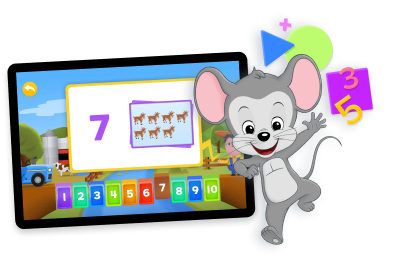
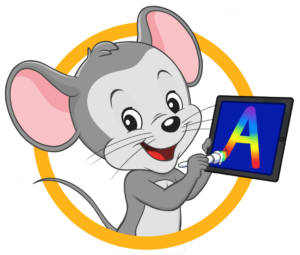
Then just $14.99 a month until canceled
6. Letter X Foil Painting
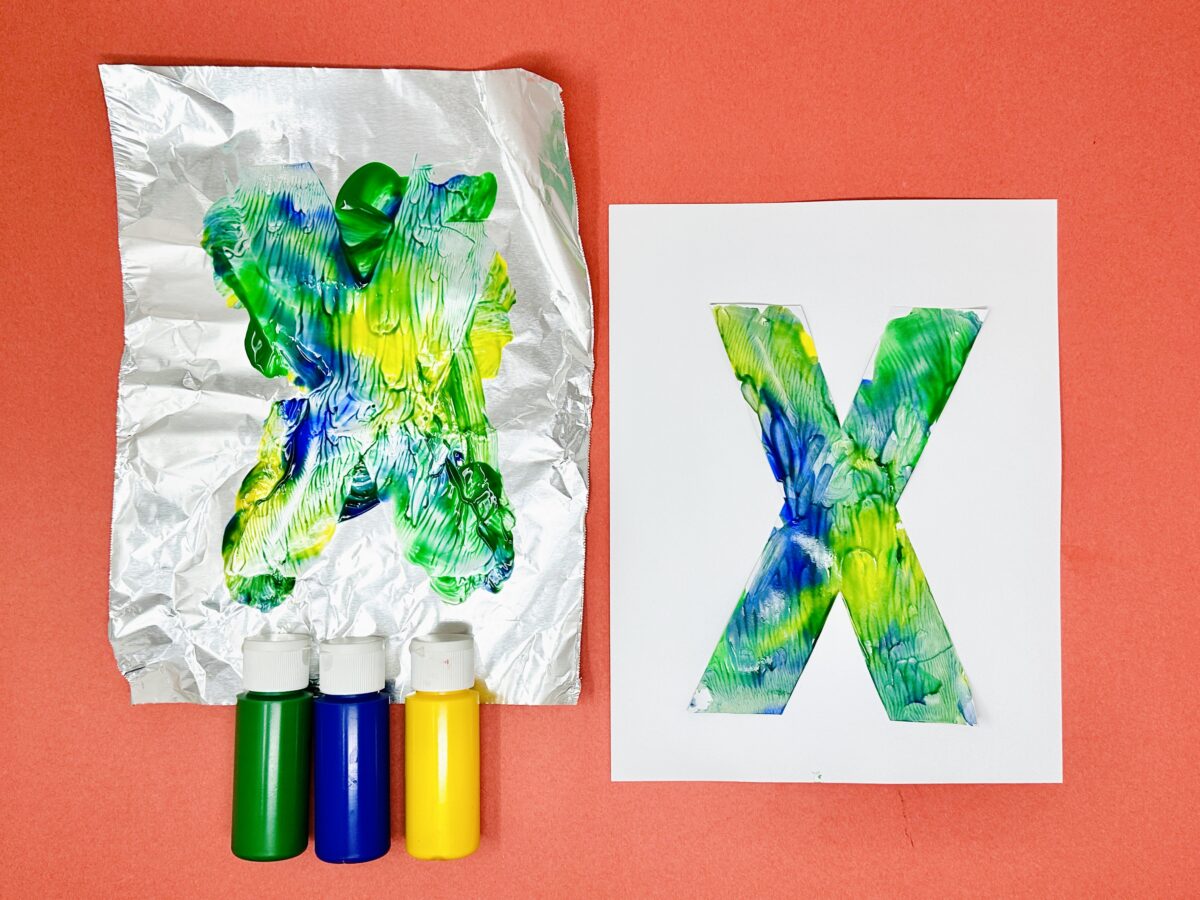
This painting technique creates a look similar to tie-dying.
Required Materials
- letter X template
- thick paper or card stock
- tin foil
- paint
- paint brush
How To
Print or draw out the outline of a letter X onto a white sheet of thicker paper and cut it out. Have your child select several colors of paint and add a bit of each on to a sheet of aluminum foil. Make sure the foil is larger than your letter X outline.
Have your child use a paint brush to mix the paint around on the tinfoil. When they’re satisfied with their color mixing, have them lay their letter X on top of the paint, gently pressing it down. Carefully lift the letter X off of the tin foil, revealing the masterpiece they created. Let it air dry completely before hanging it up.
7. Letter X Sensory Tracing
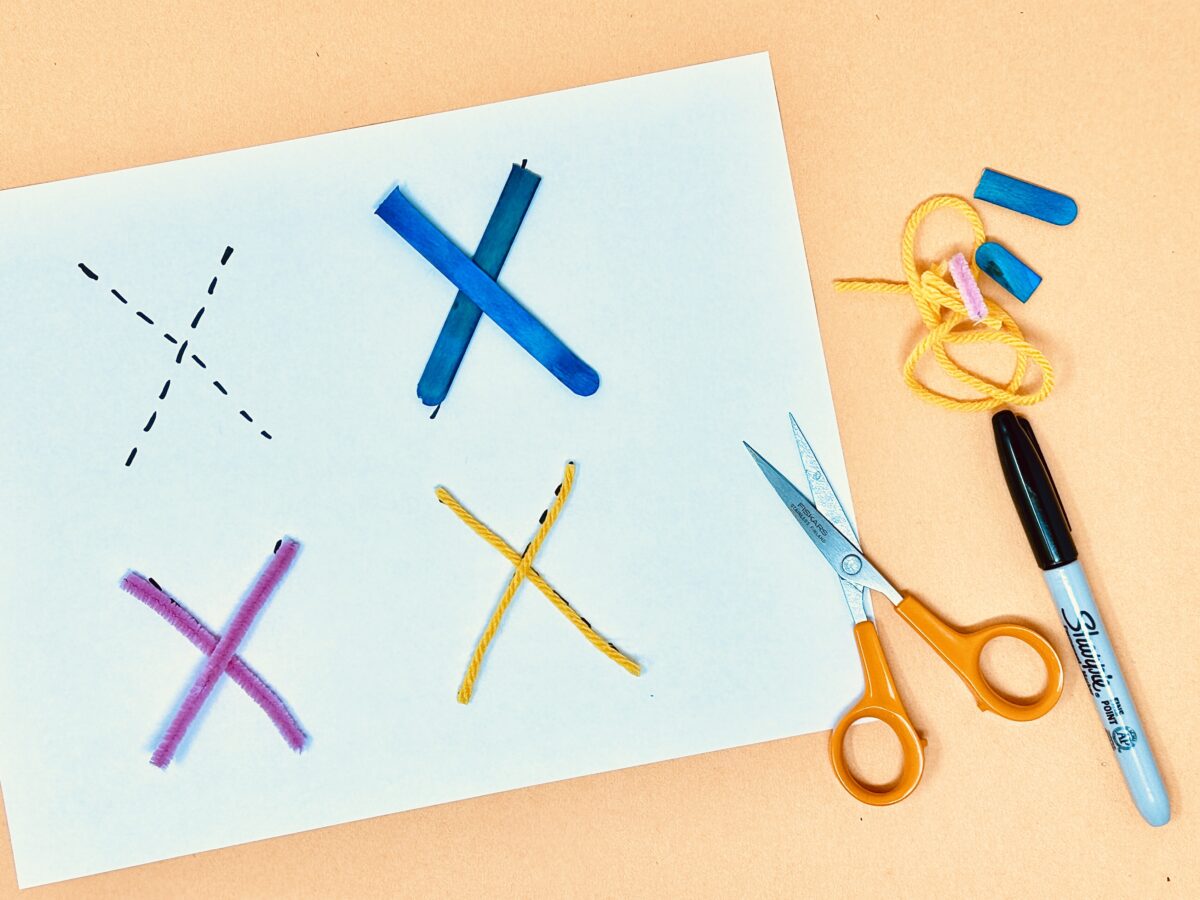
Create the letter X shape with as many different materials as you can!
Required Materials
- paper
- marker
- scissors
- glue
- variety of craft supplies
How To
Begin by gathering up supplies your child can use to create several different letter Xs, such as toothpicks, pipe cleaners, craft sticks, yarn, dried noodles, old shoe laces, etc. Then, have your child write four to six letter Xs on a piece of paper.
Next, work with your child to fill in the the letter Xs with different materials, trying to give each letter X its own unique look. As your child works, talk about the differences in each material, noting their texture and ease to work with.
8. X is for Taxi
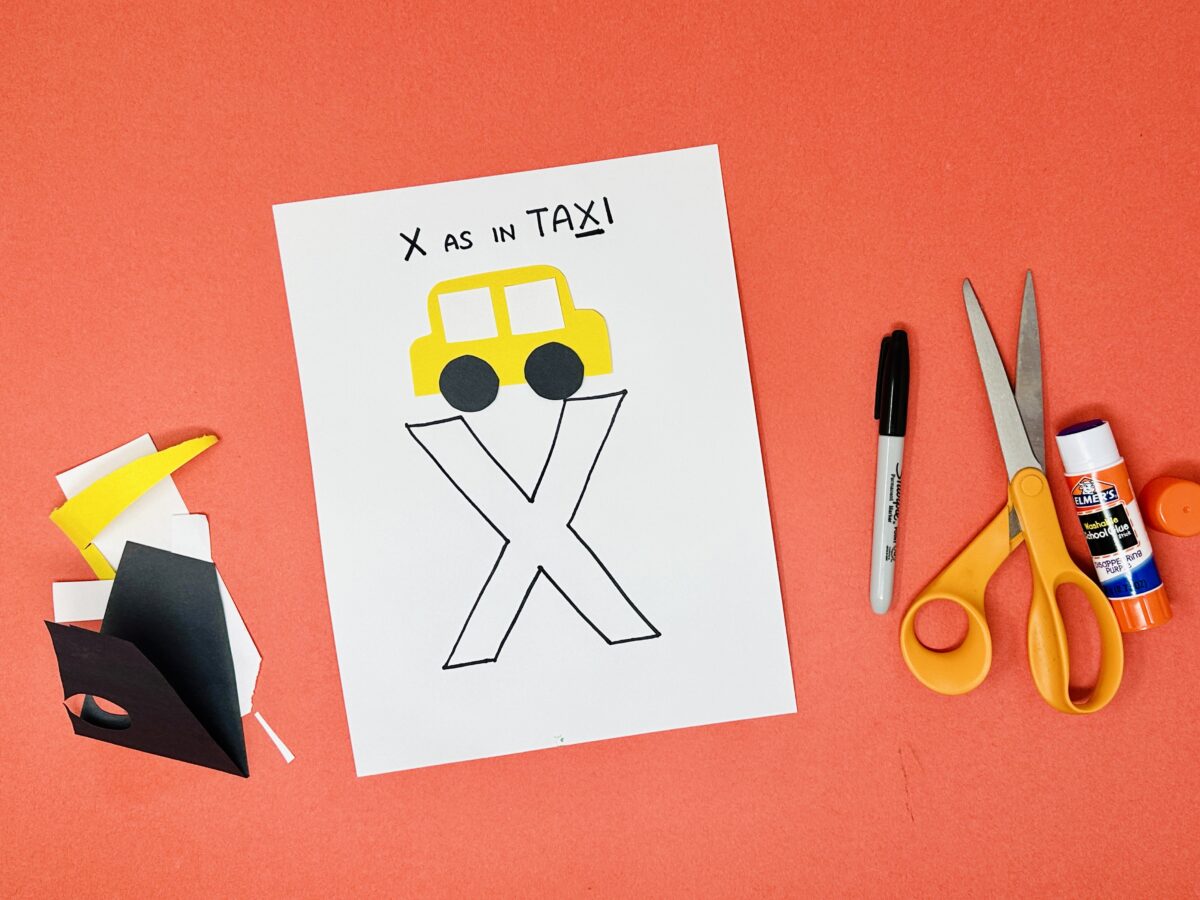
Zoom your way towards learning the letter X with this paper taxi craft!
Required Materials
- letter X outline
- yellow, white, and black paper
- scissors
- glue
How To
Print or draw out the shape of the letter X, leaving the top third of the page blank. Next, draw out the shape of a car onto yellow paper and cut it out. Cut out two smaller circles from black paper and two smaller squares from white paper, forming the taxi’s wheels and windows.
Have your child assemble their taxi right above the letter X, gluing it down when they’re ready. Help your child make and listen for the letter X sound when you say the word “taxi,” noting how the X sounds different than in the word “x-ray” or “xylophone.”
9. Letter X Tic-Tac-Toe
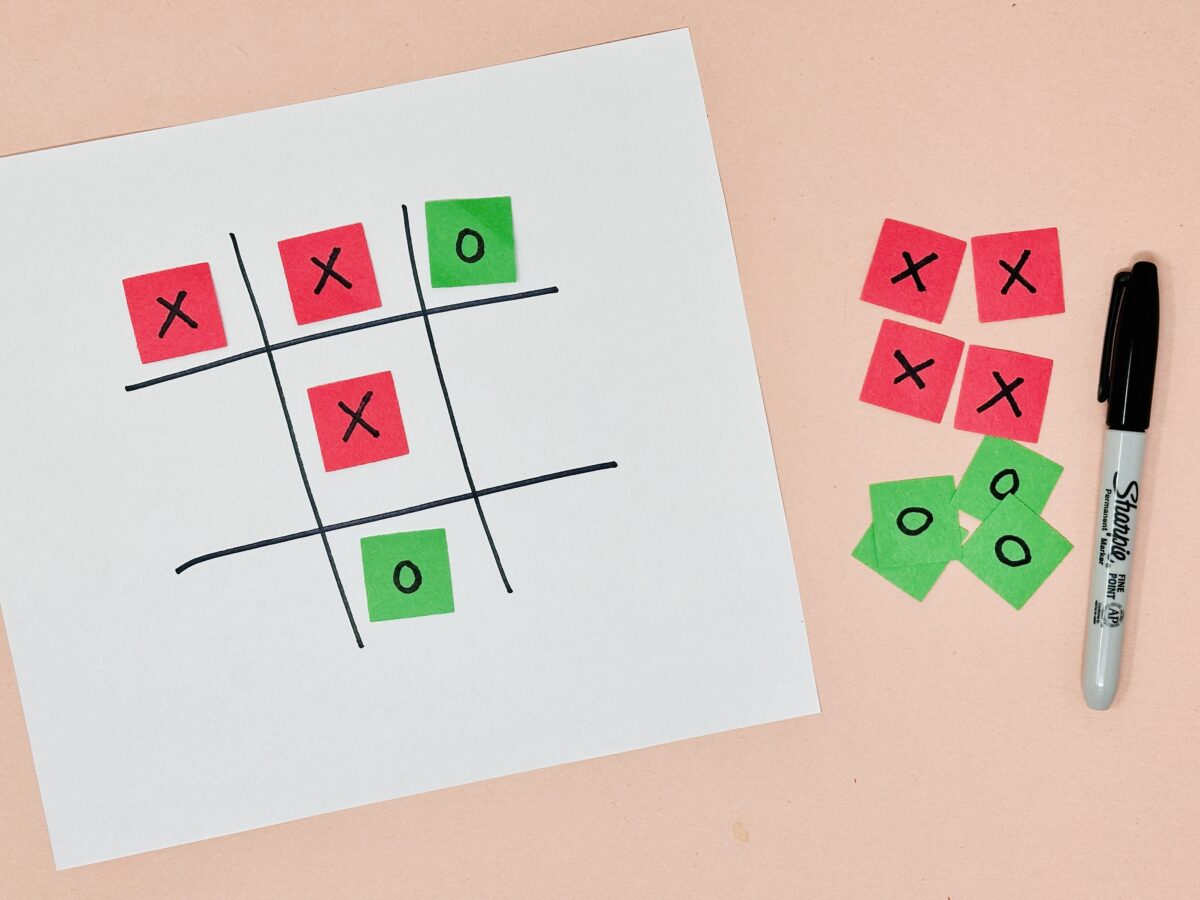
Create a reusable game of tic-tac-toe with this letter X activity.
Required Materials
- paper in two different colors
- white paper
- marker, pen, or pencil
How To
Use a pen, pencil, or marker to draw a grid onto a piece of paper. Then, cut several small squares from the two pieces of colored construction paper. Pick which color will be Xs and which will be Os, then write those letters onto the squares. Then, play a few friendly round of tic-tac-toe!
10. Letter X in a Bag Painting
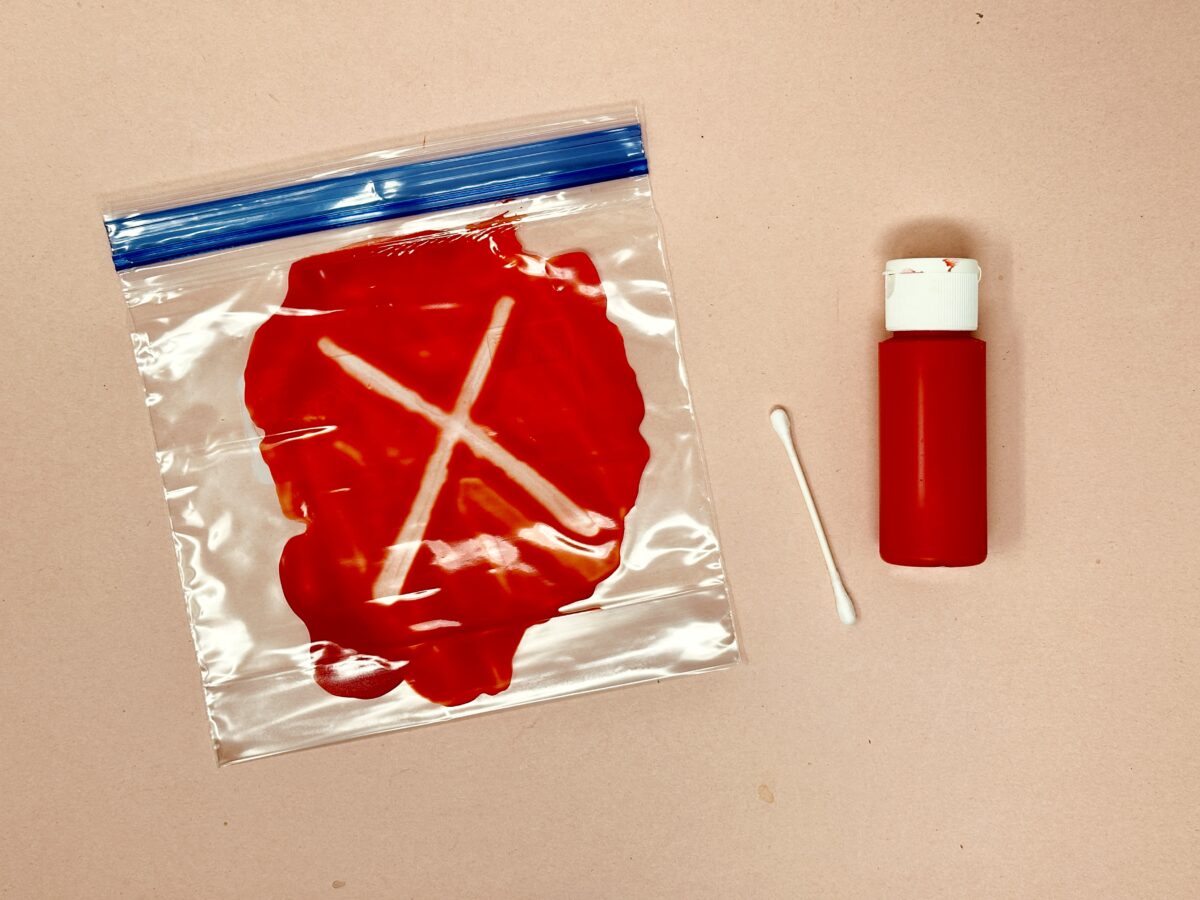
This fun sensory activity contains the mess of creating the letter X with paint!
Required Materials
- resealable plastic bag
- paint
- cotton swab
How To
Have your child pick a paint color (or two) and squeeze some into a resealable plastic bag. Let your child squish the paid around in the bag, distributing the paint around it. Then, have your child use a cotton swab to push against the paint in the bag, draw the letter X in the paint without making a mess!
More Letter X Fun
Delight your child with more fun ways to explore the letter X, including:
The ideas, pictures, and copy for this post were provided by Smitha Katti from smilingcolors.com
-
Letter X Crafts and Activities for Preschoolers
Explore fun, hands-on letter X crafts and activities perfect for preschool learning with simple supplies and free printables.
-
Letter W Crafts & Activities for Preschoolers
Explore 10 whimsical letter W crafts for preschoolers using simple materials—fun, hands-on activities that spark creativity and support letter learning.
-
Letter V Crafts & Activities for Preschoolers
Explore fun, hands-on crafts for the letter V—perfect for preschoolers learning through creative alphabet activities and art projects.
-
Letter U Crafts and Activities
Make learning the letter U fun with engaging crafts and activities for preschoolers! From unicorns to umbrellas, explore creative hands-on projects today.
-
Letter T Crafts and Activities
Make learning the letter T fun with hands-on crafts! From tigers to trains, these easy preschool activities help kids recognize and practice the letter T.
-
Letter S Crafts and Activities
Explore fun and engaging letter S crafts for preschoolers! From snakes to sunflowers, these hands-on activities make letter learning exciting and interactive.
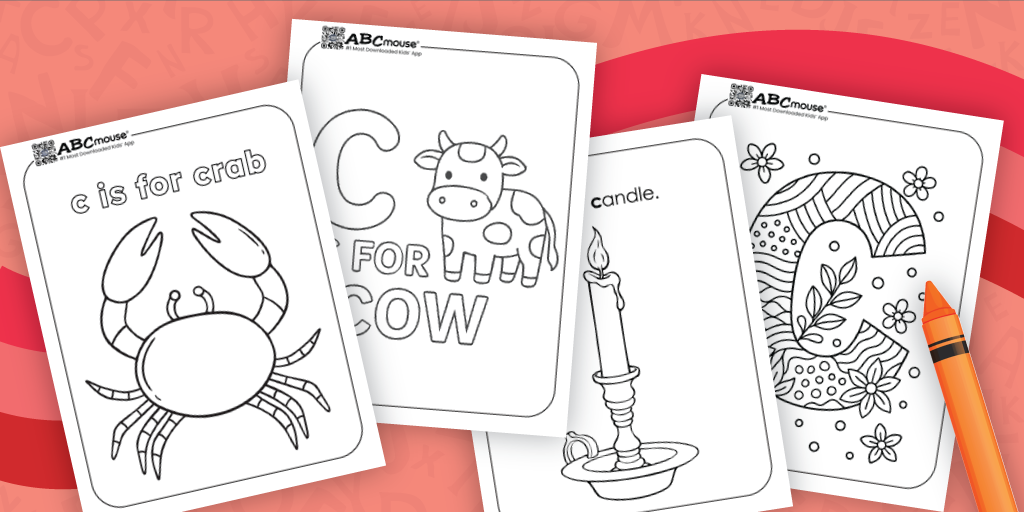
Letter C Coloring Pages for Kids (FREE Printables)
Letter learning is a crucial part of early childhood, and these letter C coloring pages help make it a fun and creative process! Each page features the letter C and many include friendly characters or familiar letter C words to help kids make strong connections between the shape of the letter C and the sounds it makes.
Whether your child is just starting to learn the alphabet or needs extra practice, these coloring pages make learning the letter C both enjoyable and effective!
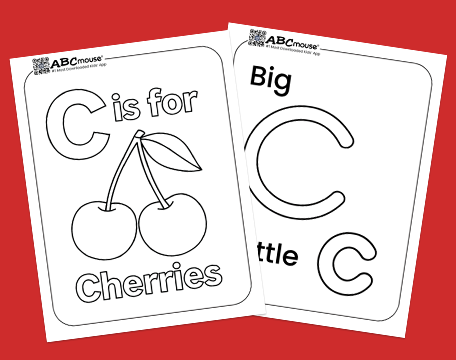

Overview of the Free Printable Letter C Coloring Pages
Pick and choose from the letter C coloring pages you see below or download and print the entire collection with the button shown above. While most of these pages focus on the standard letter C sound, you’ll find one page that introduces the ‘ch-‘ sound in case your child is ready to start exploring digraphs. Either way, kids will enjoy the opportunity to practice with the shape and sound of this letter in a way that’s creative and engaging. Be sure to check out our letter C activities below!
Fun Activities for Learning the Letter C!
Recommended for: Toddlers, Preschoolers, & Kindergarteners
⭐ Letter C Sound Hunt
Go on a Letter C Sound Hunt around the house or classroom! Ask children to find and collect (or point to) objects that begin with the sound of the letter C, like cup, clock, or crayon.
⭐ Free Online Letter C Tracing Games

ABCmouse offers hundred of free educational games for kids. Use our Rainbow Tracing game as an interactive way for your child to practice making the shape of the letter C.
⭐ C is for Cookie or Cupcake Baking
Have your child pretend their a pastry chef and in charge of helping to bake the household’s dessert. Work together to pick a cupcake or cookie recipe, discussing the sounds the letter C makes as you look at different recipes. Then, print out the Letter C is for Cookie or Cupcake coloring page from above for your child to color while they wait for their treat to finish baking.
More Free Printable Coloring Pages
-
Zoo Animal Coloring Pages for Kids (Free Printables!)
Free printable zoo animal coloring pages and activities to spark kids’ creativity at home, school, or before a zoo trip.
-
Letter C Coloring Pages (Free Printables!)
Free letter C coloring pages with fun images and activities to help kids connect the letter C with its sounds and shape.
-
Summer Coloring Pages for Kids (FREE Printables)
Dive into spring with our free printable coloring pages for kids! Featuring tulips, St. Patrick’s Day, Earth Day, Easter, butterflies, and Mother’s Day themes. Spark creativity…
-
25+ Zoo Themed Activities and Games for Kids
Zoo games, crafts, and coloring pages spark learning fun for kids who love animals and hands-on activities—online or at the zoo!
-
Lion Coloring Pages for Kids (FREE Printables)
Free printable lion coloring pages and activities for kids—featuring cute, fun, and creative lions to inspire imagination and animal-loving play.
-
Free Mother’s Day Cards for Kids to Color
Make Mother’s Day special with free printable cards kids can color and personalize! Fun designs for moms and grandmas, plus sweet poems to include inside.
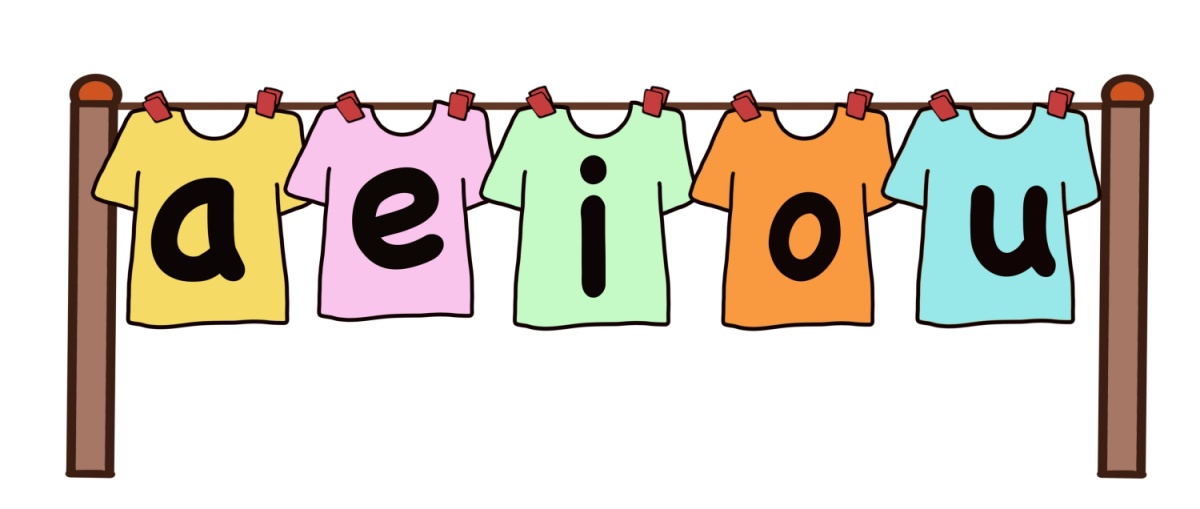
Vowel Sounds Word Lists for Kids (Free Printables)
Table of Contents – Jump to Each Section
Mastering vowel sounds for kids is an important milestone in early reading and spelling development. To make vowel practice both fun and effective, we’ve gathered all of our most popular vowel sound word lists into one easy-to-use collection.
These resources feature carefully selected word lists with short vowel sounds and word lists with long vowel sounds, perfect for activities like phonics games, spelling practice, and vocabulary building. Whether you’re helping your child grow their familiarity with vowel sounds, practice spelling patterns, or strengthen early reading skills, these vowel word lists are a helpful tool to help support young learners and those working to learn English.
Why Are Vowels Important?
Understanding vowel sounds is a critical part of learning to read, write, and spell. For young children, mastering both short and long vowel sounds builds the foundation for strong phonics skills and overall literacy development.
Vowels are found in every word, and recognizing their sounds helps children decode new words, improve their reading fluency, and develop more confidence as early readers. Regular practice with vowel sounds also strengthens listening skills and prepares children for more advanced language concepts as they grow.
Free Printable Vowel Sounds Word Lists for Kids
These printable vowel sound word lists are a great resources for helping kids learn and practice with long and short vowel words. Each list can be downloaded as PDF and printed, making it easy to use them at home or in the classroom.
Long Vowel Word Lists
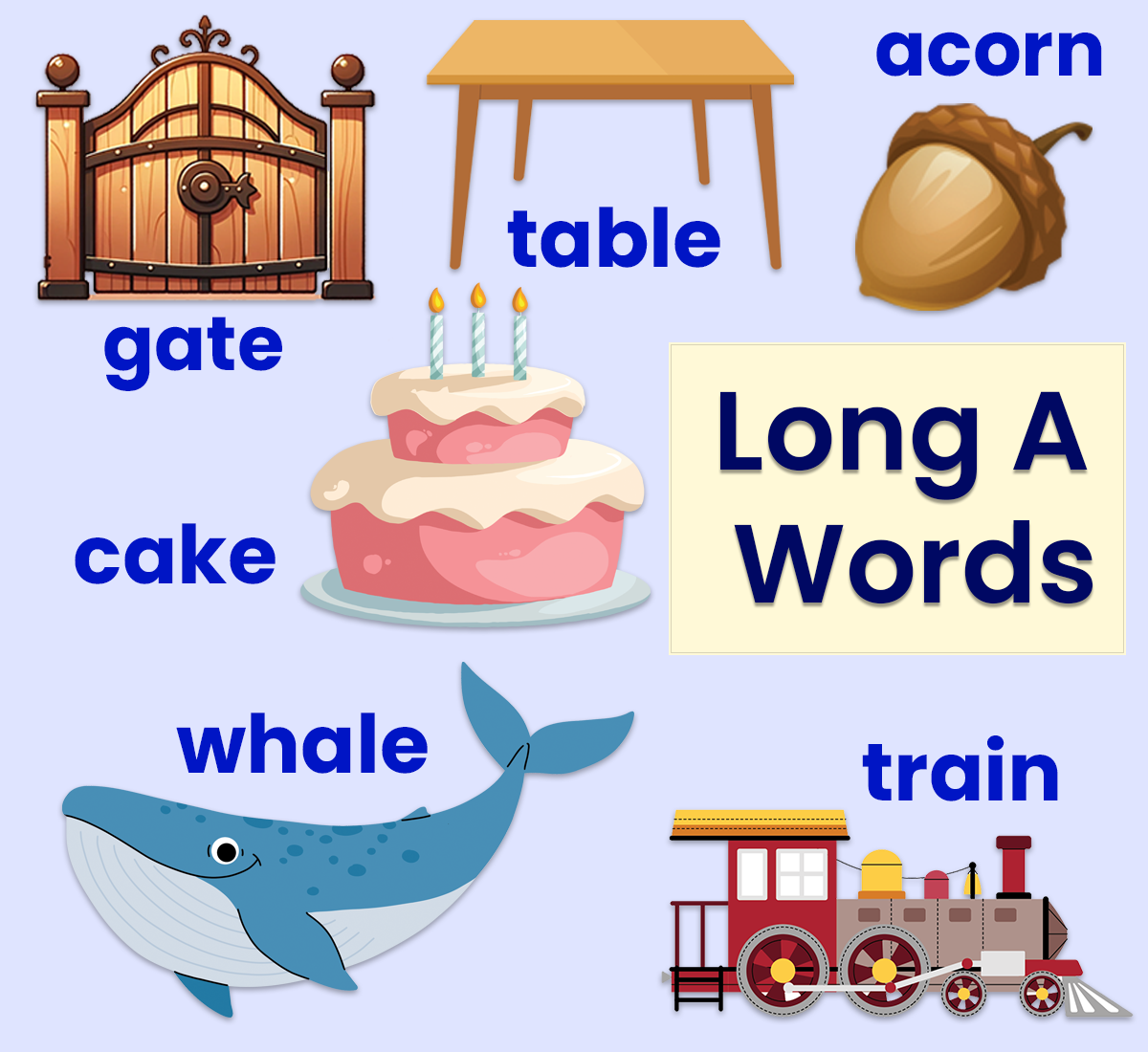
Help children practice the long A sound (/ā/) and recognize the different ways it appears, including silent -e endings, and vowel teams like ai and ay.
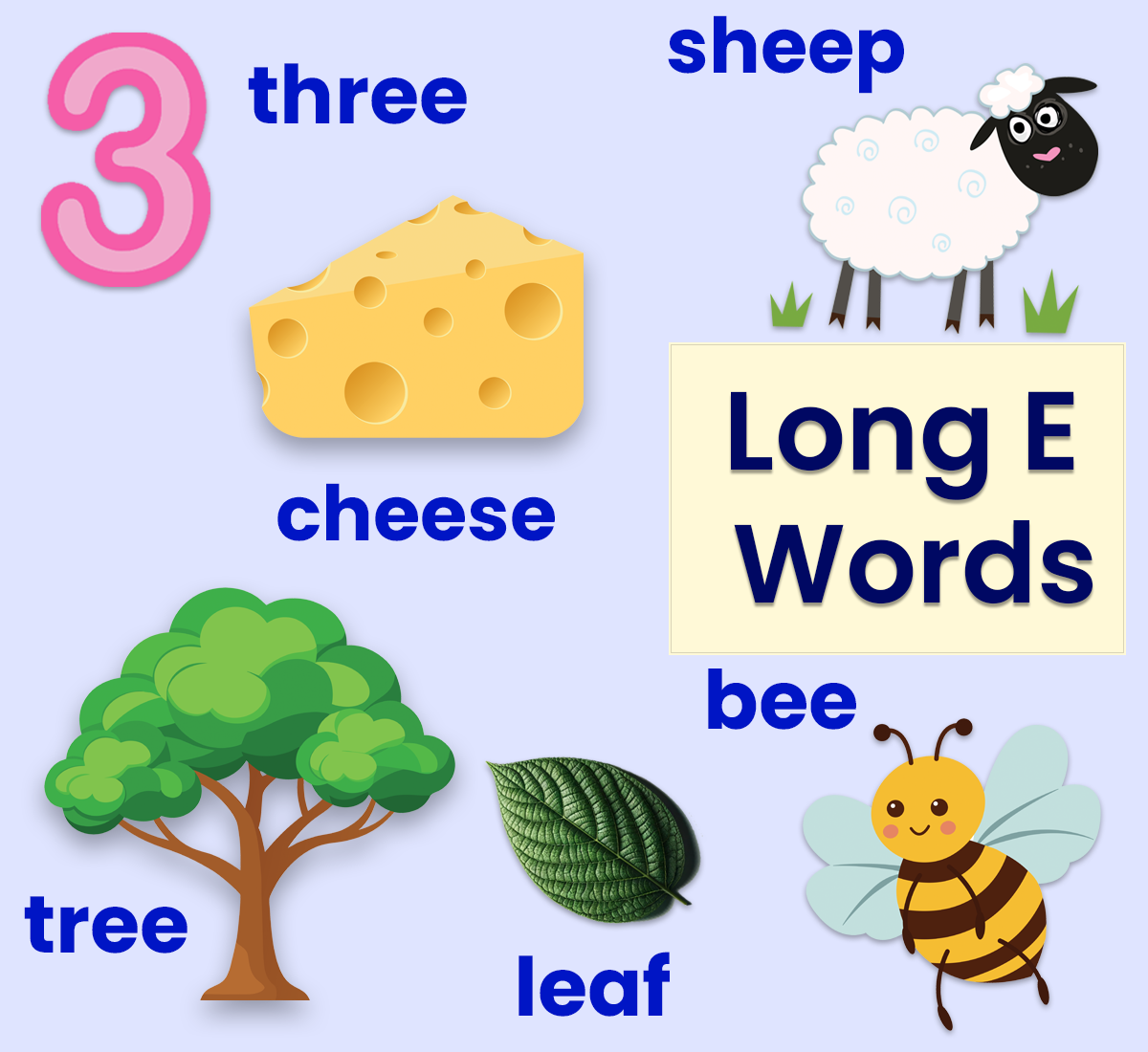
These long E word lists provide practice hearing and identifying the long ‘E’ sound (/ē/) in different spelling patterns, including vowel teams like -ee, -ea, and more.
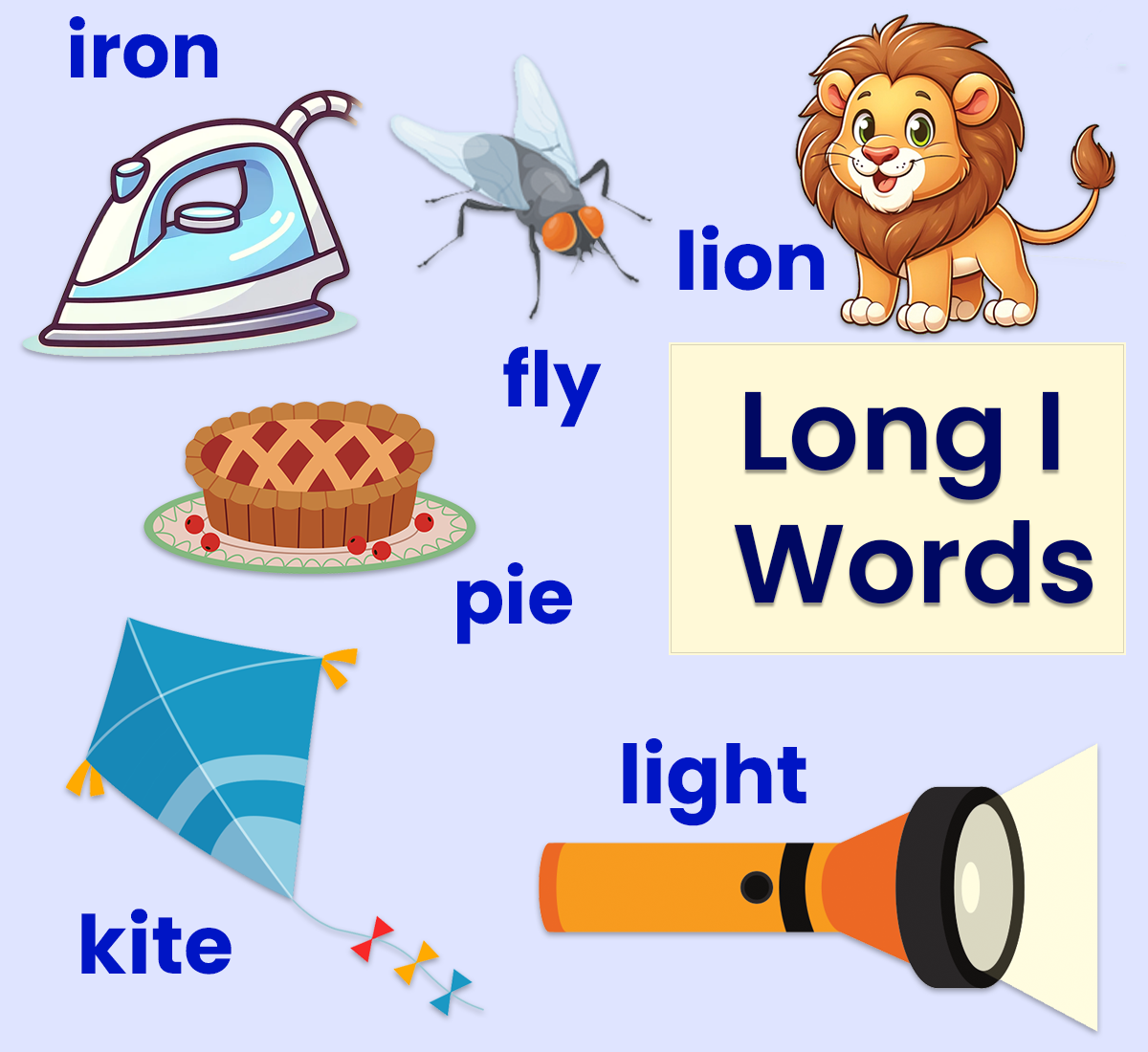
Use these long I sound (/ī/) word lists to support your child’s learning. You’ll also find engaging activities and helpful teaching tips.
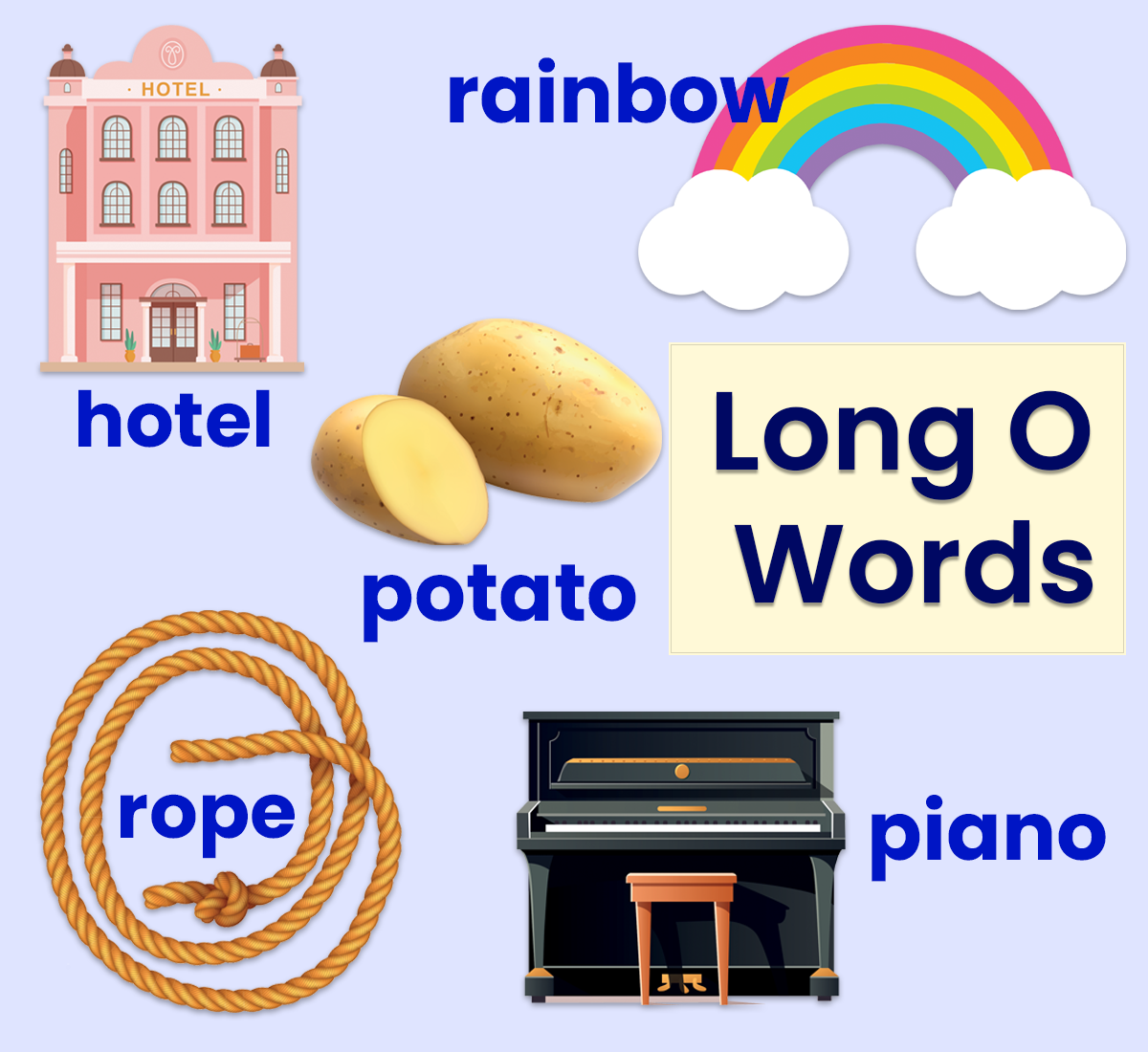
Find beginner and advanced long O sound (/ō/)words, words used in everyday context, and activities to help reinforce learning.
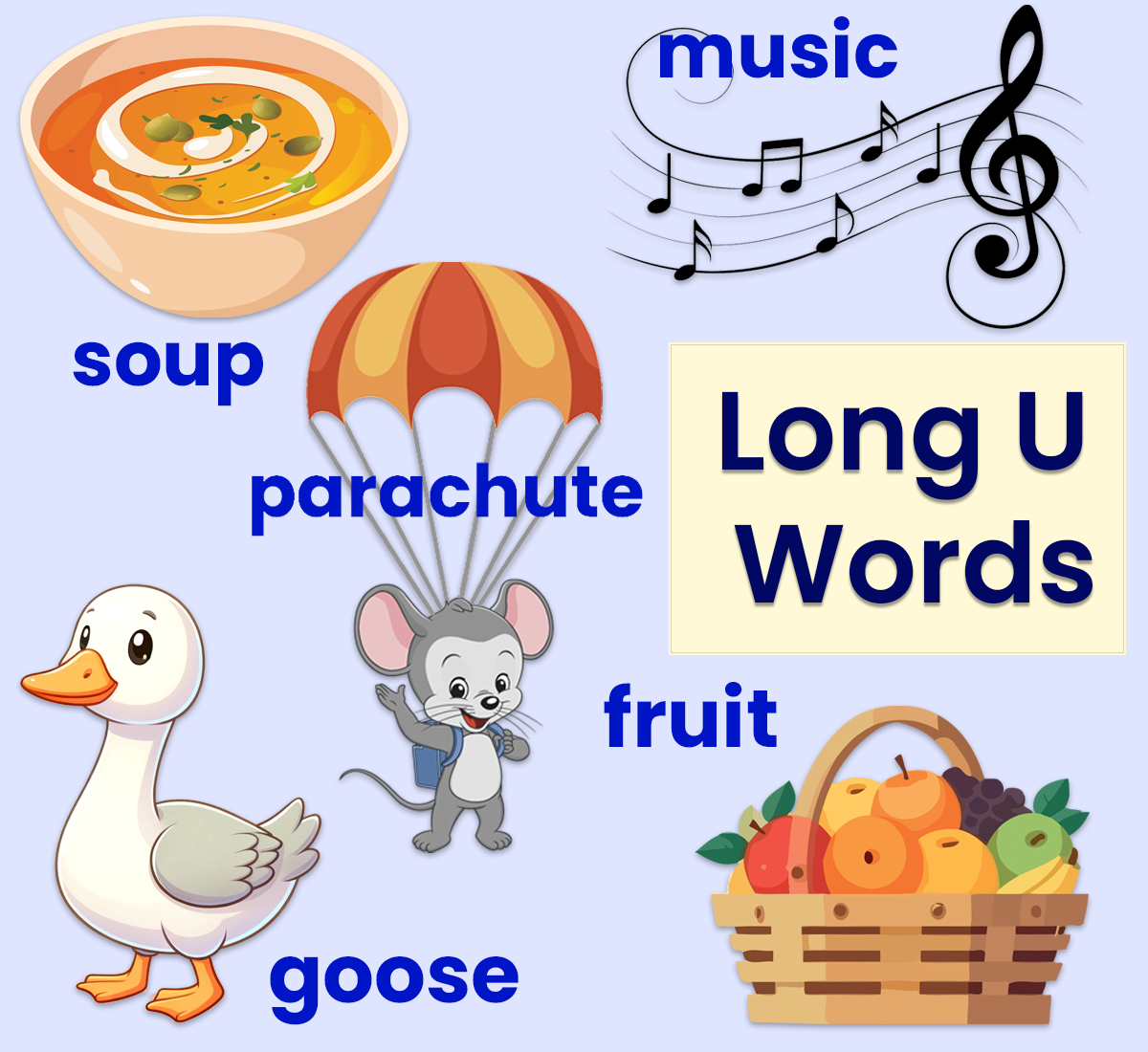
These free downloadable PDFs feature a variety of words with the long U sound (/ū/), from simple CVC words to those with blends and digraphs.
Long Vowel Words Collection
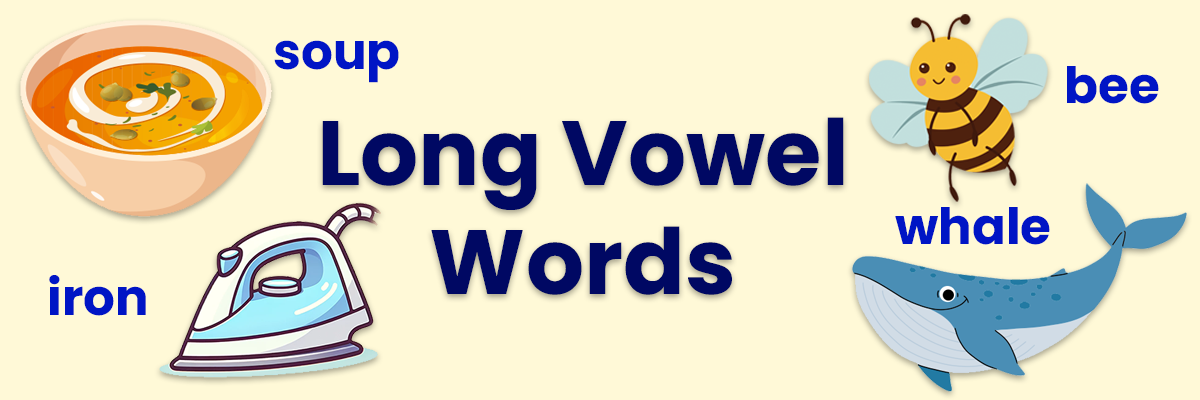
These free downloadable PDFs feature a variety of common long vowel words, as well as teaching tips and activities to help enhance learning.

Short Vowel Word Lists
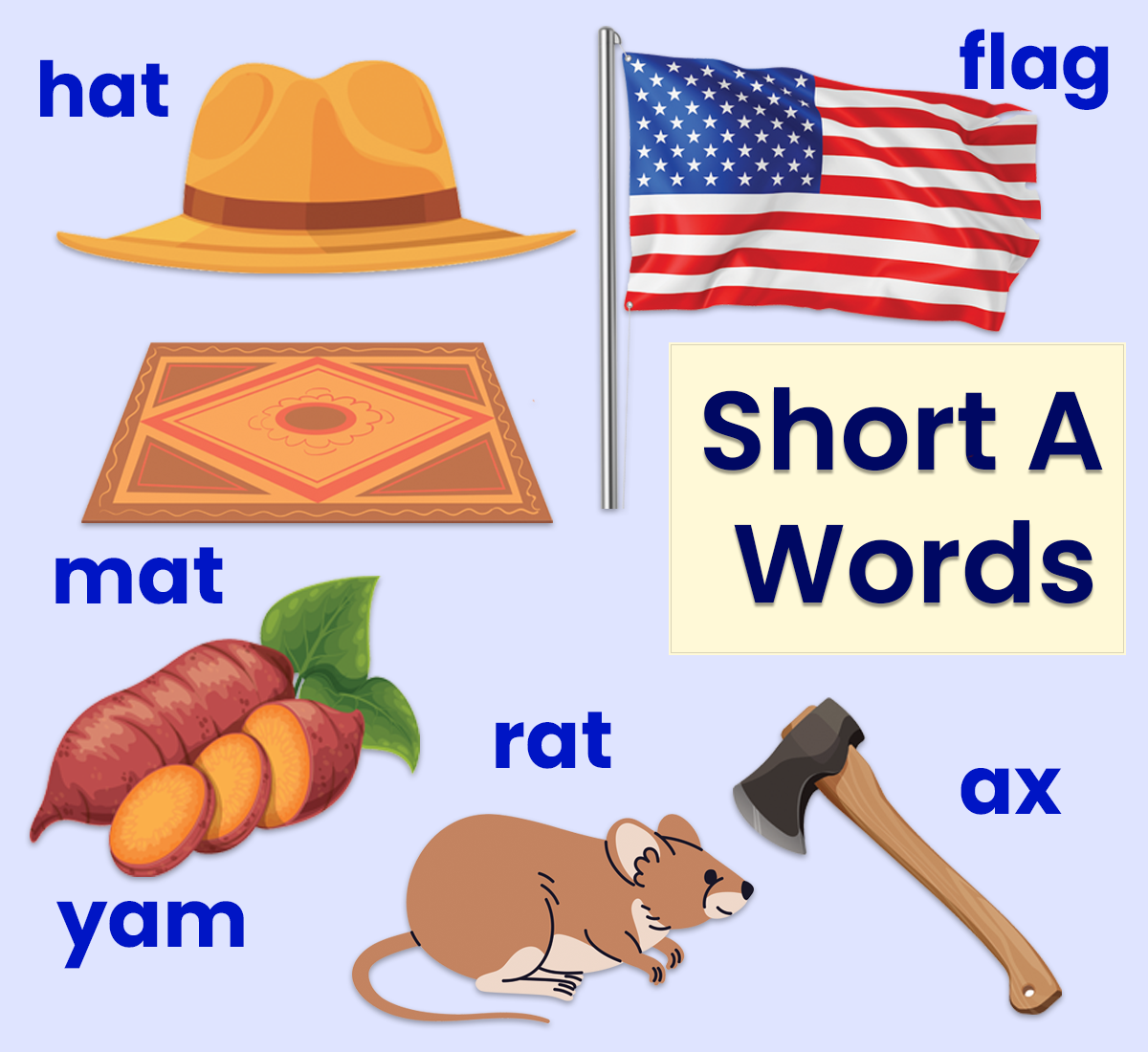
Help children get familiar with the short A sound (/ǎ/) and recognize the different ways it appears, including silent -e endings and vowel teams.
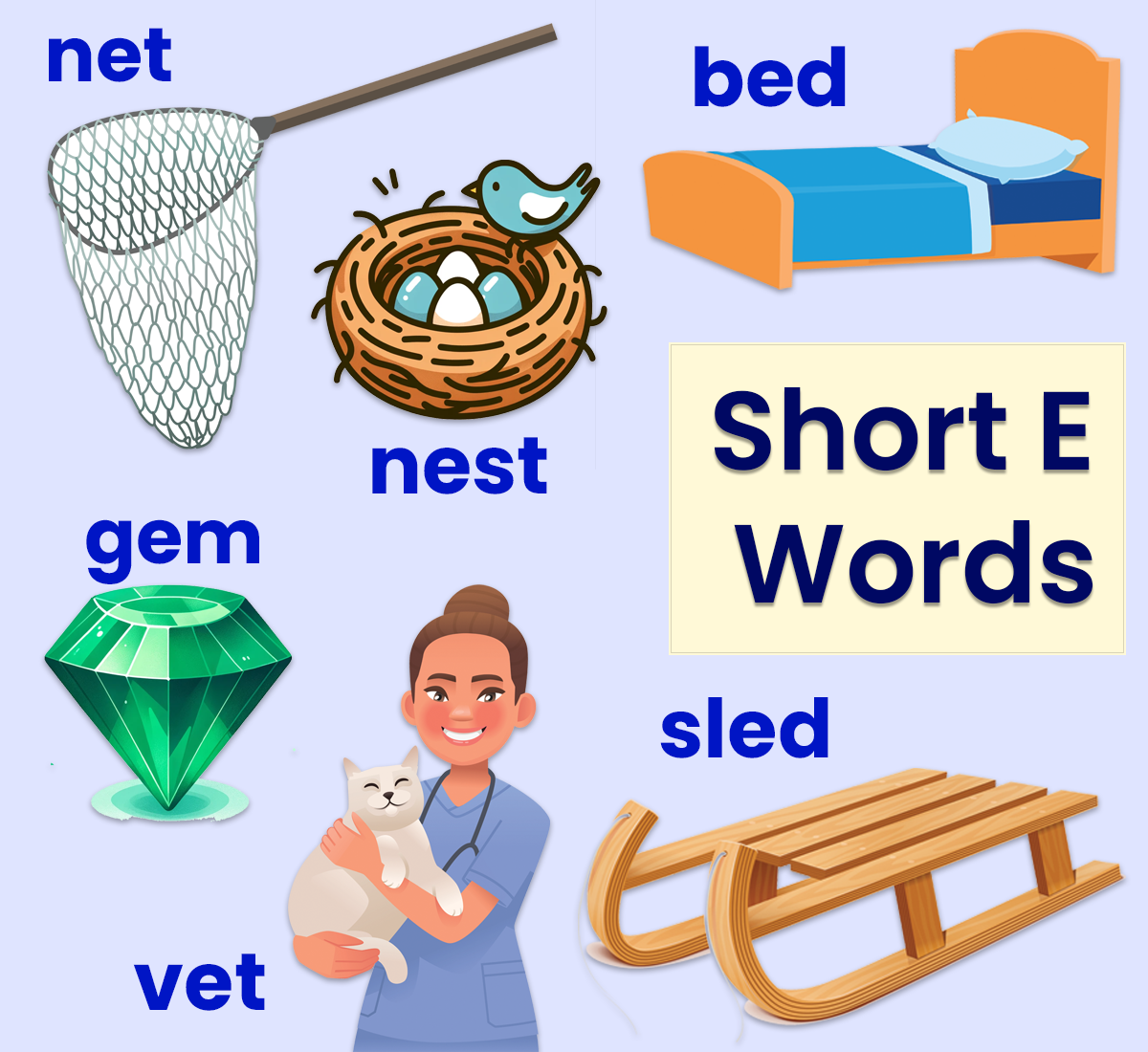
These free short E sound (/ě/) word lists include CVC words, word families, letter blends, and more and provide a great way to learn this vowel sound.
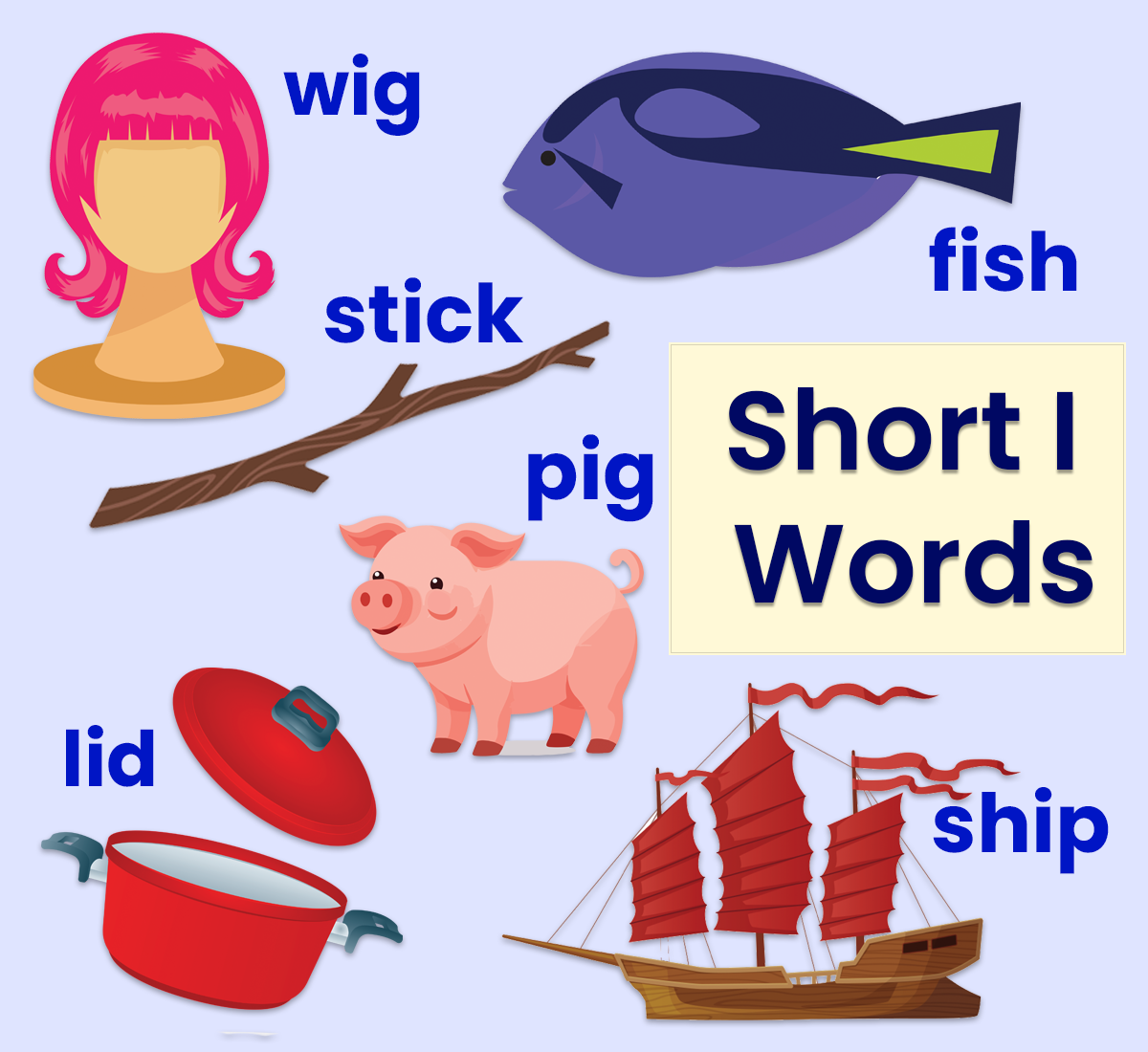
These short I vowel sound word lists aim to help children master the short I sound (/ǐ/) while building vocabulary and practicing word families, letter blends, digraphs, and sight words.
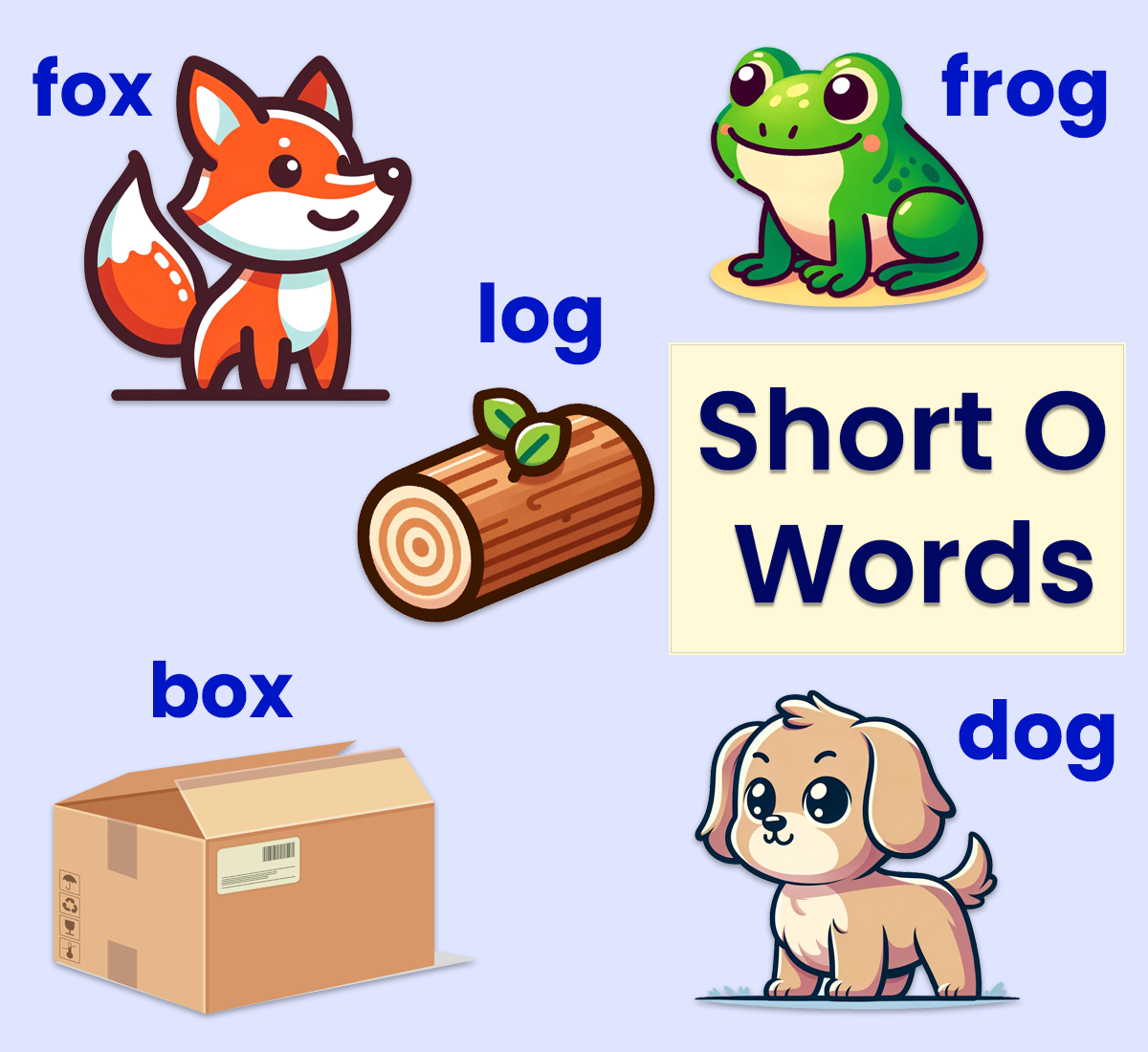
Each short O word list provides a variety of words that will help young learners master the short O vowel sound (/ǒ/), while practicing with spelling, vocabulary, and more.
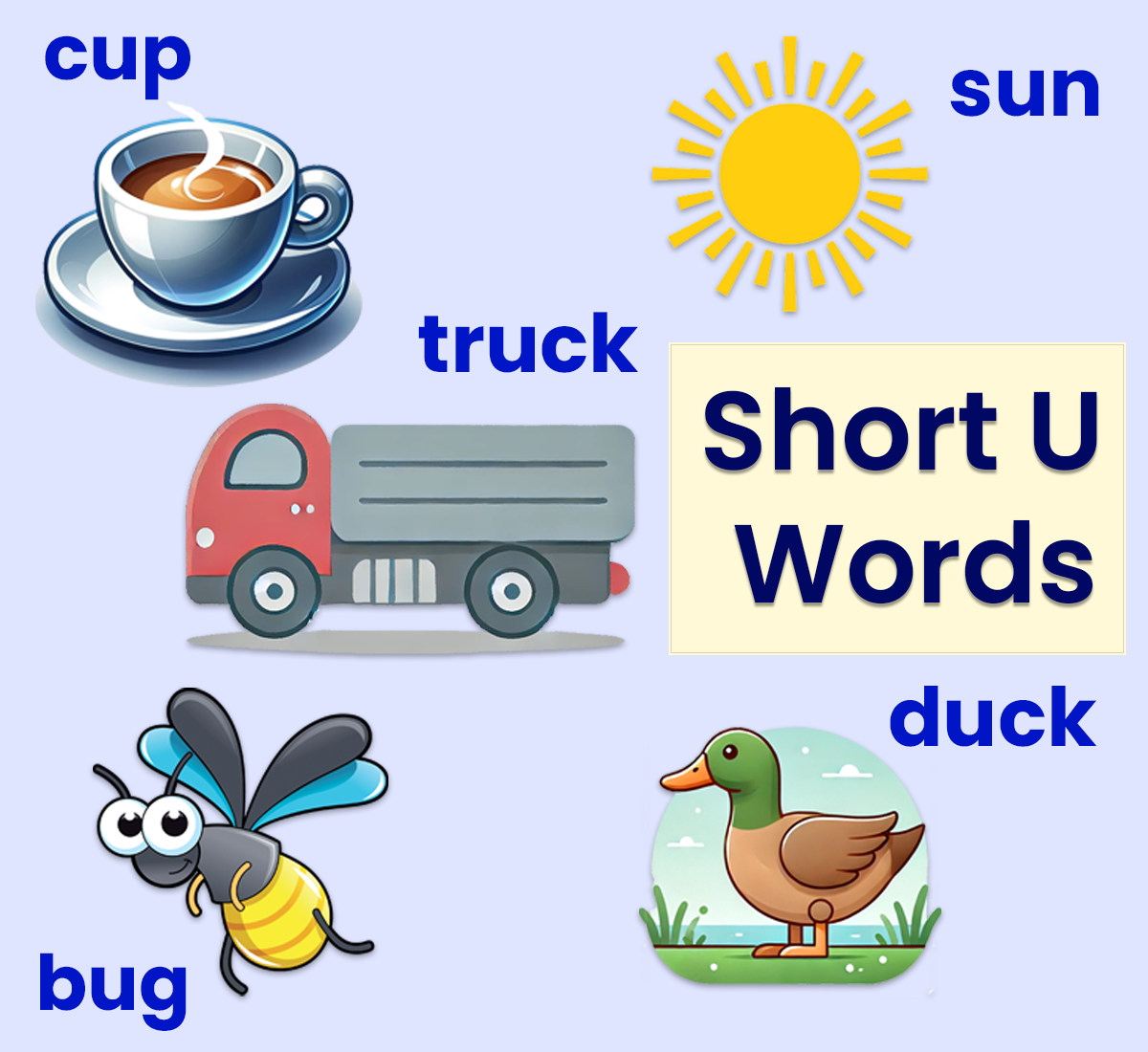
Our short U sound (/ǔ/) word lists offer plenty of opportunities to strengthen their understanding of this vowel sound and also includes hands-on activities for teaching it.
Short Vowel Words Collection
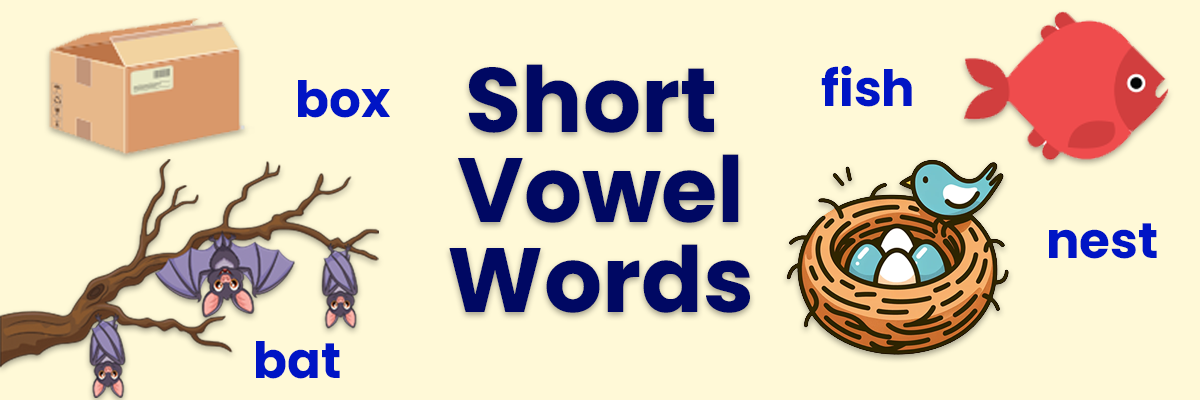
Find CVC words with short vowel sounds, tips and activities for teaching short vowel sounds, and more in this collection of word lists.

R-Controlled Vowel Word Lists
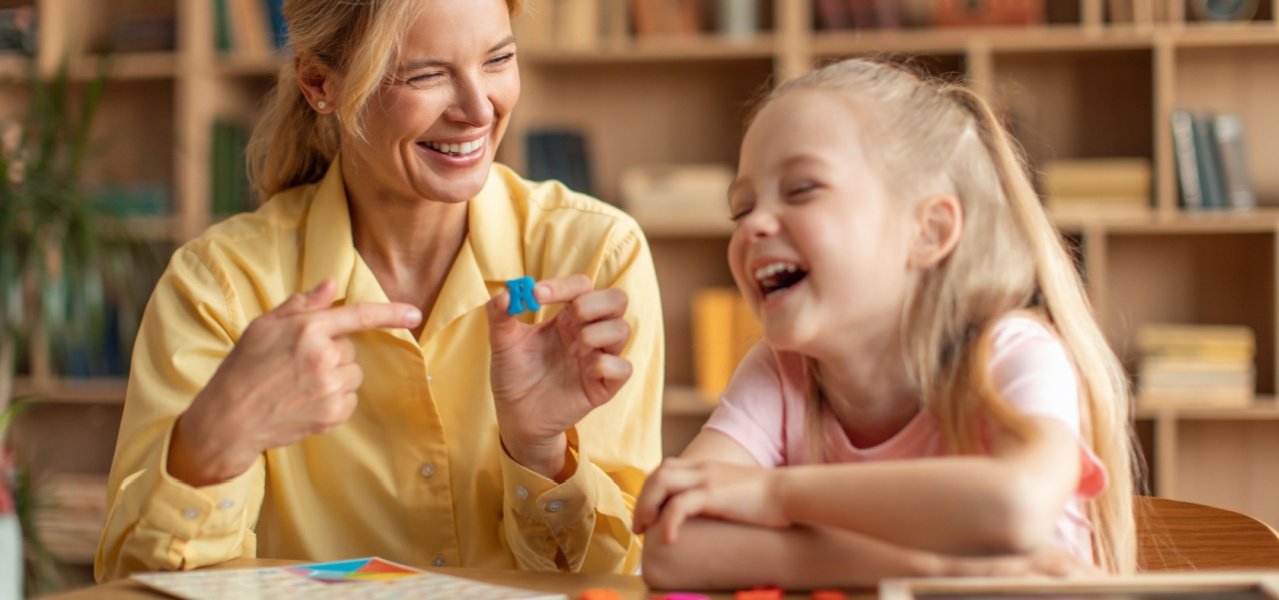
When a vowel is followed by the letter R in a word or syllable, it can change the pronunciation of that vowel, making it an R-controlled vowel. Learn the rules behind this nuance in vowel sounds and print out a list of word with R-controlled vowels.

Free Online Vowel Games for Kids
Happy Harrison: Long Gone
Join Ivan the Inventor as he dreams up new words with long vowel sounds to get ready for Happy Harrison’s big game show!
Build the Bridge Silent -e Words
As players spot silent -e words with long vowel sounds floating on tugboats, a crane lifts them to build a bridge across the river
Garden Vowels
Grow a vegetable garden by picking the right vowel teams to finish each sentence and help the family bring their garden to life!
Animals in Grammar Kingdom
Join King Grammar on a royal quest to complete animal names using vowel teams with long vowel sounds!

More Free Vowel Activities
Combine the resources listed above with these free printables and creative learning ideas to help keep vowel practice varied and interesting.
Free Printable Vowel Practice Worksheets
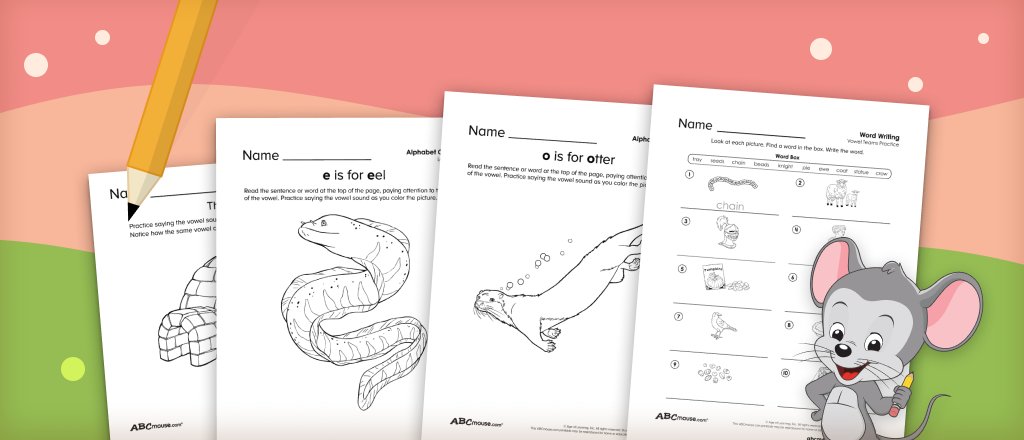
From vowel coloring pages to vowel practice worksheets focused on vowel team, long and short vowel sounds, or specifically for first and second graders, this collection of printable resources is great to have on hand for impromptu or on-the-go learning.
18 Hands-on Vowel Activities for Kids
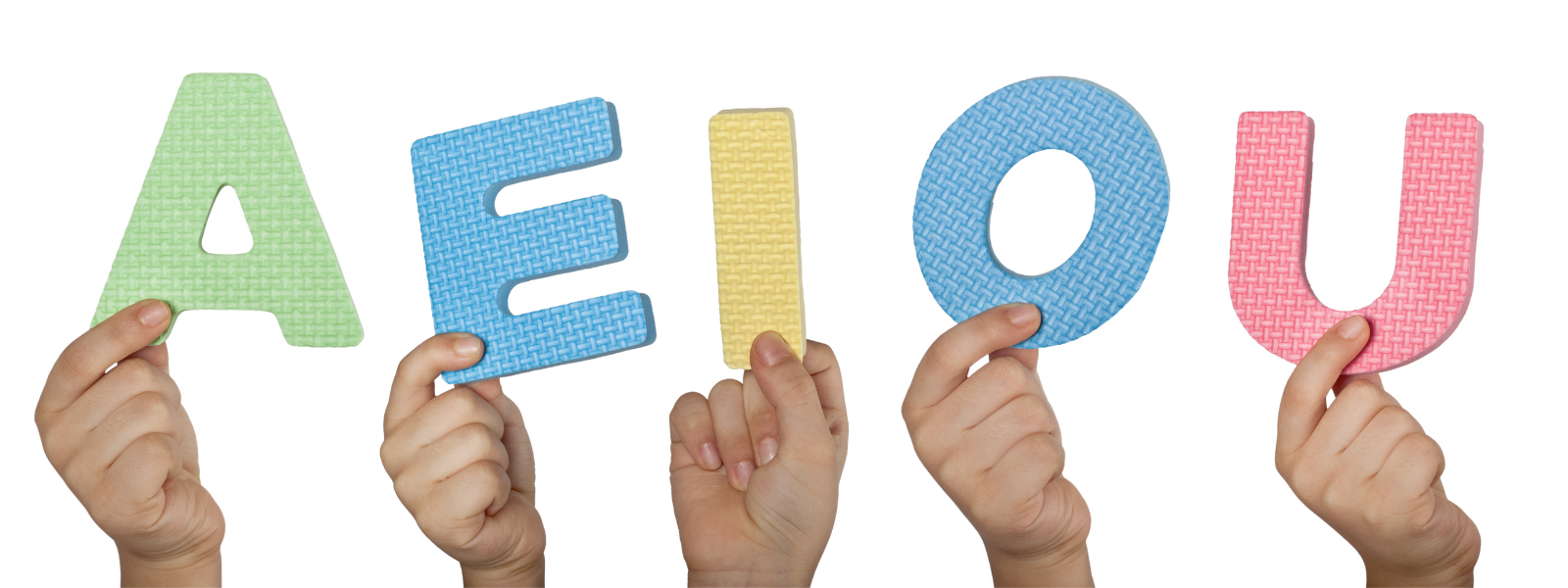
Active and engaging learning can help new concepts stick better for young children. Add these fun ideas for vowel practice to your teaching toolkit, mixing them in with the word lists, printables, and free-to-play vowel games listed above.
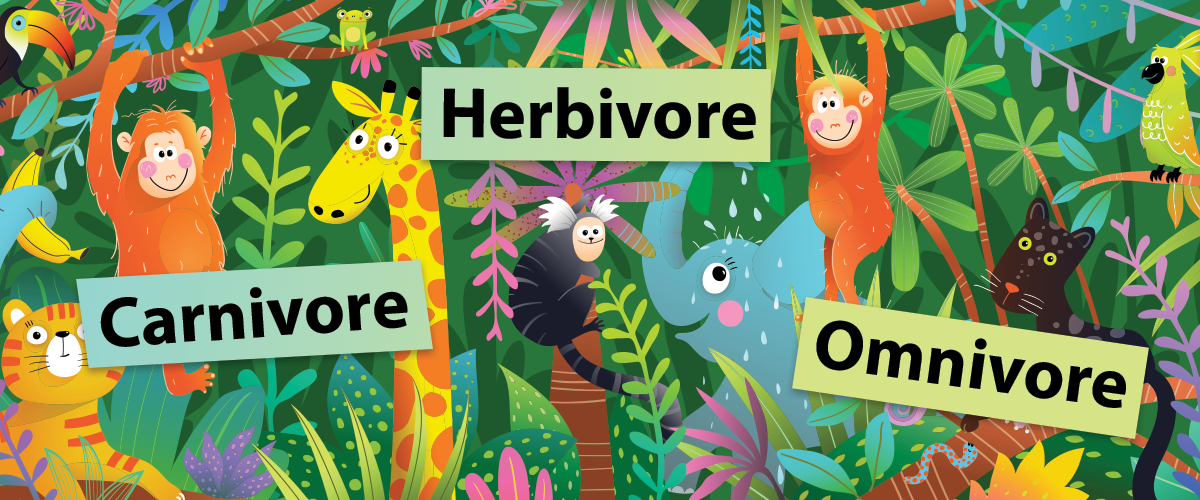
Herbivore, Omnivore, and Carnivore Animal Words for Kids (Free Printables)
Explore the wild world of animal diets and herbivores, omnivores, or carnivores. Plus, get awesome lists of animals from each group!
All animals need to eat to survive, but they don’t all eat the same foods. Generally speaking, animals can be divided into three broad categories: herbivores, carnivores, and omnivores. Learn about each type of animal and get lists of each type to share with your child.
What is an Herbivore?
An herbivore is an animal that only or mostly eats plants. This can include vegetation; tree leaves, bark, or wood; algae; fruits and vegetables; nuts and seeds; flowers and nectar. Humans who restrict themselves to a plant-based diet (vegetarians and vegans) could also be called herbivores.
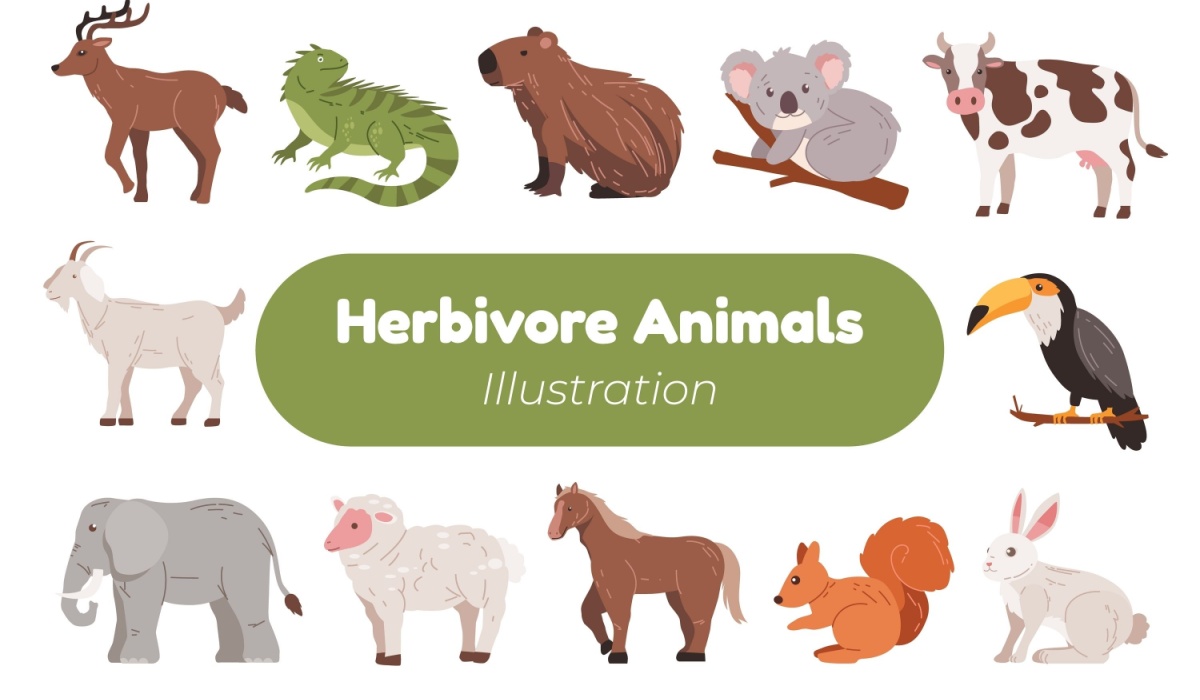
Herbivore Traits
Herbivores have body characteristics that help them eat and digest plants. Vegetation is often very tough and fibrous, making it harder to chew or digest. Here are some of the ways herbivore bodies are adapted to their plant-heavy diet:
Common Features of Plant-Eating Animals
- Teeth That Cut and Grind: Herbivores have narrow-edged incisors for cutting through plant material, and flat molars to grind it up before they swallow.
- Long Digestive Tract: Because plants are harder for bodies to break down, herbivores have long digestive tracts that give their systems time to extract as many nutrients as possible.
- Specialized Stomachs: As part of these extended digestive tracts, herbivores may have stomachs divided into different sections (as in cows or sheep), or large areas in the hindgut to finish digestion (like rabbits or horses).
- Eyes on Sides of Head: Many herbivores spend lots of time in the open, grazing for food. This makes them easy prey for carnivores and omnivores, so having eyes on the sides of their heads gives them a wide field of vision.
Common Behaviors of Plant-Eating Animals
- Frequent Feeding: It takes a lot of plant materials to provide the energy and nutrients that herbivores need, so they often spend a large portion of their days eating.
- Browsing or Grazing: These animals usually move slowly through the environment, eating as they go. Their bodies are specialized depending on whether they graze on grass and ground plants, or climb or reach up into trees for their meals.
- Large Groups: There’s safety in numbers, so many herbivores gather in large groups called herds or flocks.
- Migration: Herbivores travel to where food is plentiful, and often migrate in large groups to find fresh sources of vegetation in different seasons.
List of Herbivorous Animals
| alpaca | beaver | bison | camel | canada goose |
| capybara | cicada | colobus monkey | cow | donkey |
| elephant | fruit bat | gazelle | giraffe | goat |
| grasshopper | green iguana | green sea turtle | groundhog | hippopotamus |
| honeybee | horse | kangaroo | koala | llama |
| manatee | millipede | moose | okapi | ostrich |
| panda | porcupine | rabbit | rhinoceros | sloth |
| snail | swan | tapir | tortoise | wallaby |
| water buffalo | white-tailed deer | wildebeest | wombat | zebra |



What is an Carnivore?
A carnivore’s diet consists entirely or mostly of meat. Many of these animals are unable to digest plant material at all; these are known as “obligate carnivores.” These animals dine on the flesh, organs, blood, and bones of other animals. They may also eat insects, crustaceans, mollusks, fish, eggs, birds, and carrion (dead animals).
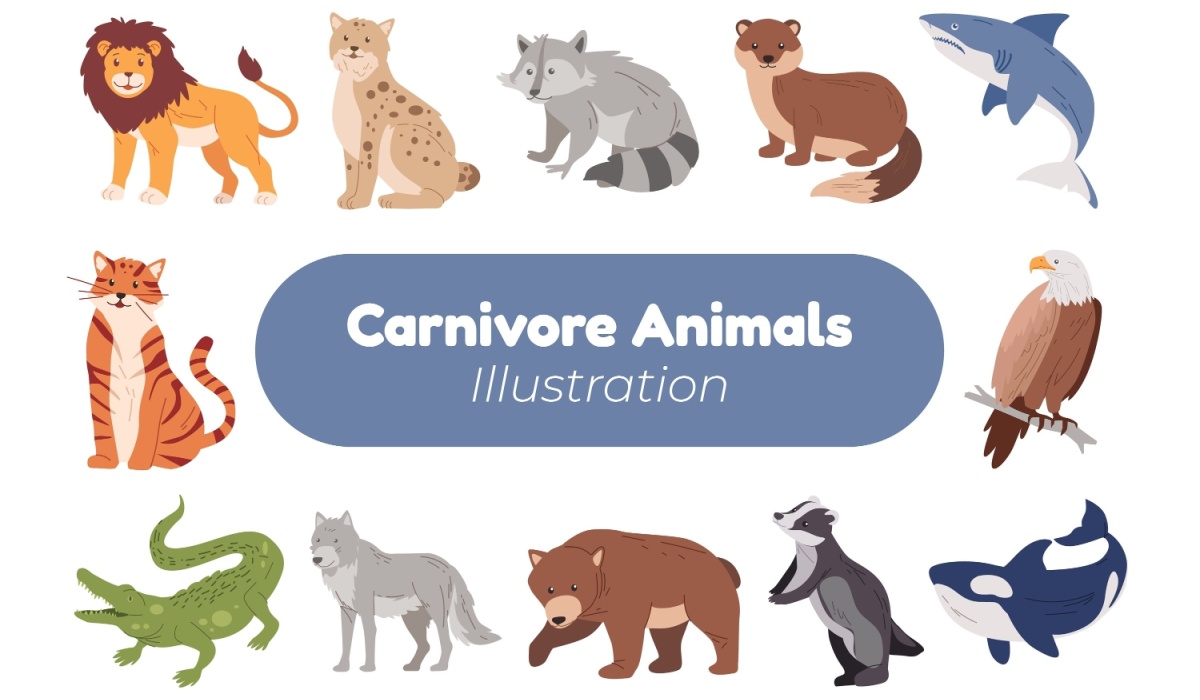
Carnivore Traits
Carnivores need to be able to hunt down, capture, and kill their prey. Their bodies are designed to help them do just that. These are some common carnivore traits:
Common Features of Meat-Eating Animals
- Sharp Teeth and Strong Jaws: Carnivores need sharp teeth known as canines (sometimes called “fangs”) to dig deep into meat. Their strong jaws help them tear carcasses apart.
- Claws: With claws on their feet, carnivores can get better traction when they run, then catch and rip apart their prey.
- Shorter Digestive Tracts: Meat is easier to digest than plants, so carnivores have shorter digestive tracts.
- Strong, Fast Bodies: Speed and strength help carnivores catch their meals, Their bodies are often muscular and sleek, allowing them to run fast, leap high, or wrestle prey to the ground.
- Forward-Facing Eyes and Keen Senses: It takes a lot of work to hunt for your dinner. Meat-eaters often have a strong sense of hearing, smell, or sight, with forward-facing eyes that give them good depth perception.
Common Behaviors of Meat-Eating Animals
- Predatory: Carnivores are watchful and wary, always on the lookout for their next meal.
- Solitary or Pack Hunters: Meat eaters hunt alone (like tigers and polar bears) or in small packs of well-coordinated animals (such as lions or wolves) that work together to bring down prey to share.
- Territorial: It takes a lot of work to find prey, so carnivores often defend their own hunting grounds from competitors.
List of Carnivorous Animals
| alligator | axolotl | barracuda | blue whale | bobcat |
| cat | cheetah | cobra | crocodile | dingo |
| dog | dolphin | eagle | falcon | great white shark |
| grouper | hawk | heron | hyena | jellyfish |
| leopard | lion | mongoose | octopus | orca (killer whale) |
| osprey | owl | piranha | polar bear | python |
| rattlesnake | salamander | scorpion | sea lion | seal |
| spider | tiger | vulture | walrus | wolf |


What is an Omnivore?
An omnivore is a combination of an herbivore and a carnivore: they eat some of both in their regular diets. While many carnivores will occasionally snack on plants, that’s not a usual part of their food plan. True omnivores eat a mix of meat and plants, depending on what’s available to them at any given time.
Omnivores get the best of both worlds: the long-lasting energy that comes from the protein in meat, along with the easy quick energy that vegetation and fruits can provide. This flexible diet means they can adapt to changing conditions, hunting down prey when it’s available or taking advantage of fruits, vegetables, and other vegetation when it’s in season.
Grizzly bears are good examples of omnivores. During the spring and summer months, they eat a lot of plants, roots, and berries, along with insects for protein. In the fall, they fatten up on salmon and forage for protein-filled nuts as they prepare for hibernation.
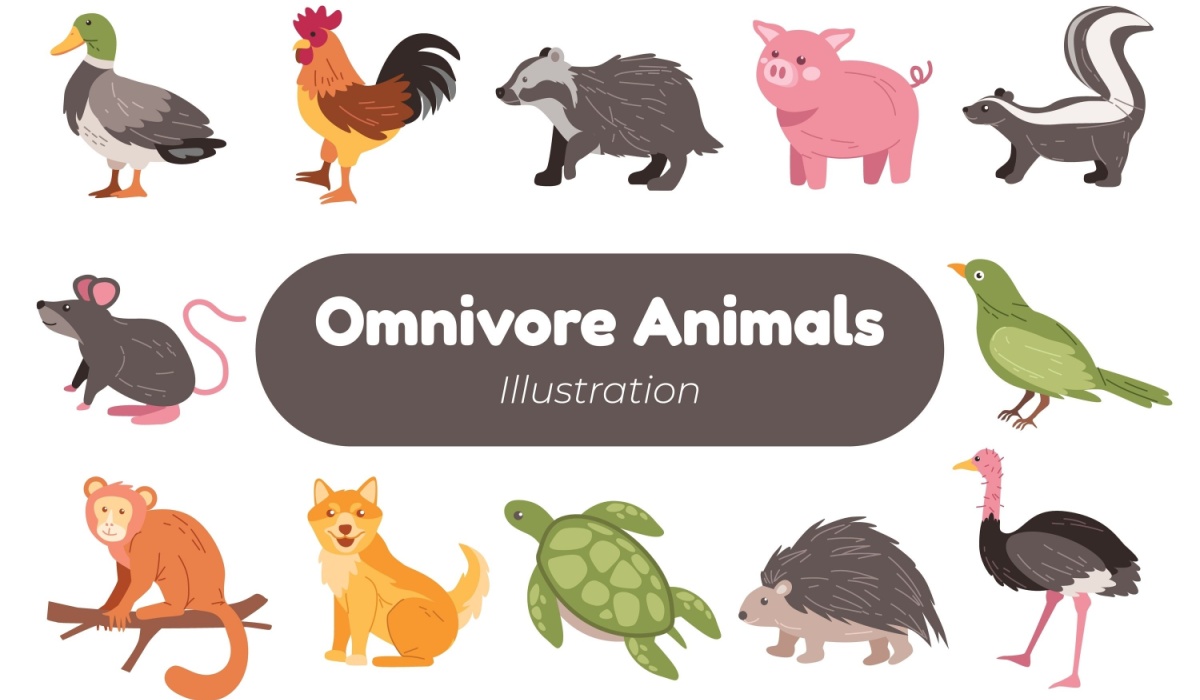
Omnivore Traits
As you might expect, omnivores have traits of both herbivores and carnivores:
Common Features of Omnivores
- Teeth: Omnivores have teeth for cutting, tearing, and grinding, so they can handle any type of food.
- Digestive tract: These animals don’t need complicated stomachs like herbivores, but they do need longer systems than those of carnivores to digest the plant materials they eat.
- Body type: Omnivores have traits like claws to help them catch prey, but they’re also dexterous enough to climb, grasp, and forage.
Common Behaviors of Omnivores
- Opportunistic Feeding: Omnivores eat both plants and animals, so they take advantage of whatever food is available. This flexibility helps them survive in a variety of environments.
- Foraging and Hunting: These animals spend time searching for fruits, roots, and insects, and may also hunt small animals or scavenge leftover meat when the chance arises.
- Adaptable Social Habits: Some omnivores live and feed in groups, while others prefer to be alone. Their social behavior often depends on the availability of food.
- Resourceful Behavior: Omnivores are known for their intelligence and problem-solving skills. They may use tools or clever strategies to access hard-to-reach food sources.
List of Omnivorous Animals
| baboon | bilby | black bear | blue jay | box turtle |
| brown bear | catfish | chicken | chimpanzee | chipmunk |
| cockroach | coyote | cricket | crow | duck |
| emu | gorilla | grizzly bear | hamster | hedgehog |
| house fly | human | maned wolf | mouse | opossum |
| otter | pig | raccoon | rat | red fox |
| ring-tailed lemur | seagull | skunk | snapping turtle | squirrel |
| sugar glider | tilapia | toucan | warthog | weasel |

More Educational Animal Resources
Free Animal-Themed Learning Games
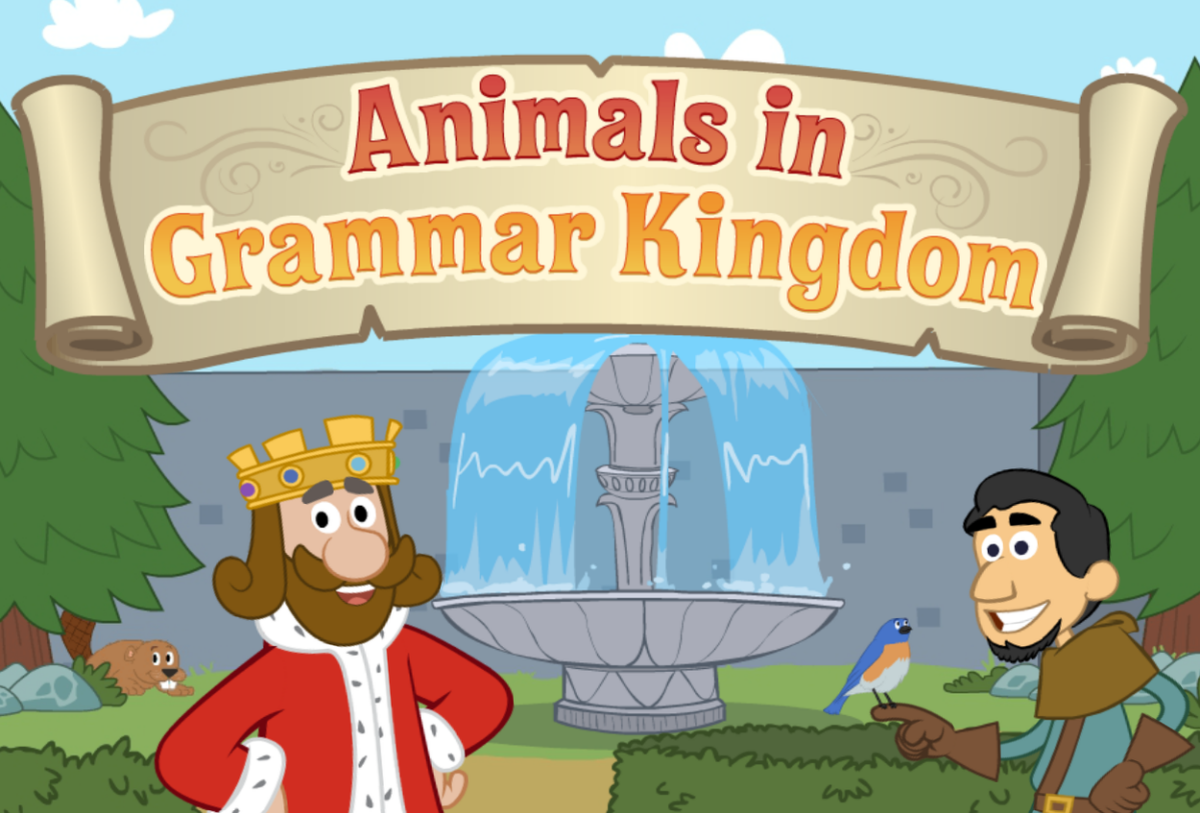
Animals in Grammar Kingdom
In this game, players join King Grammar on a royal quest to finish animal names with vowel teams that make long vowel sounds.
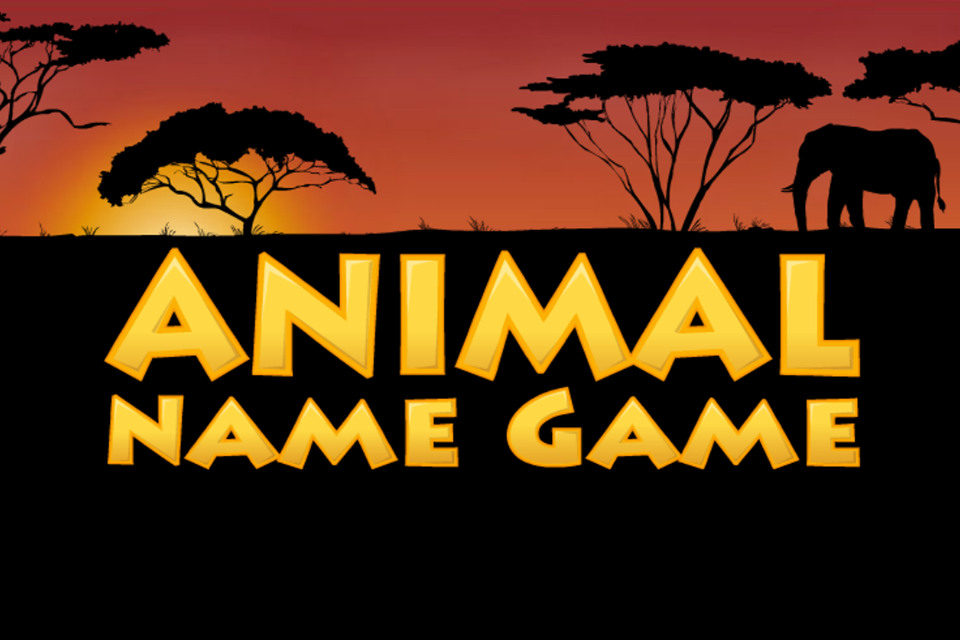
Animal Name Game
Meet animals at the zoo and choose the first letter in each one’s name. This is a great way to practice with letter recognition and letter sounds.
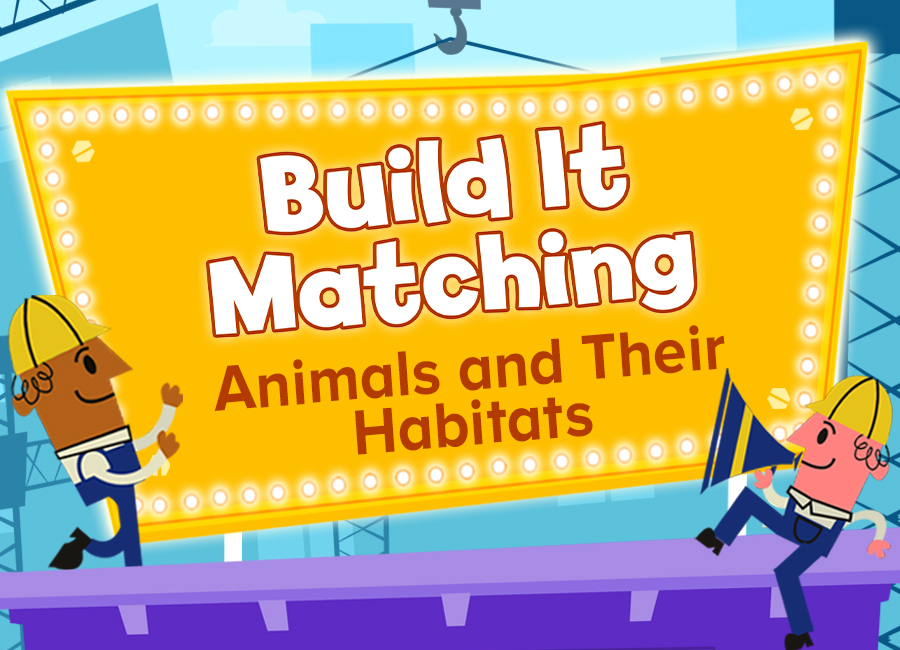
Build It Matching: Animals and Habitats
In this construction-themed game, players help place animals in their proper habitats while also using critical thinking skills.
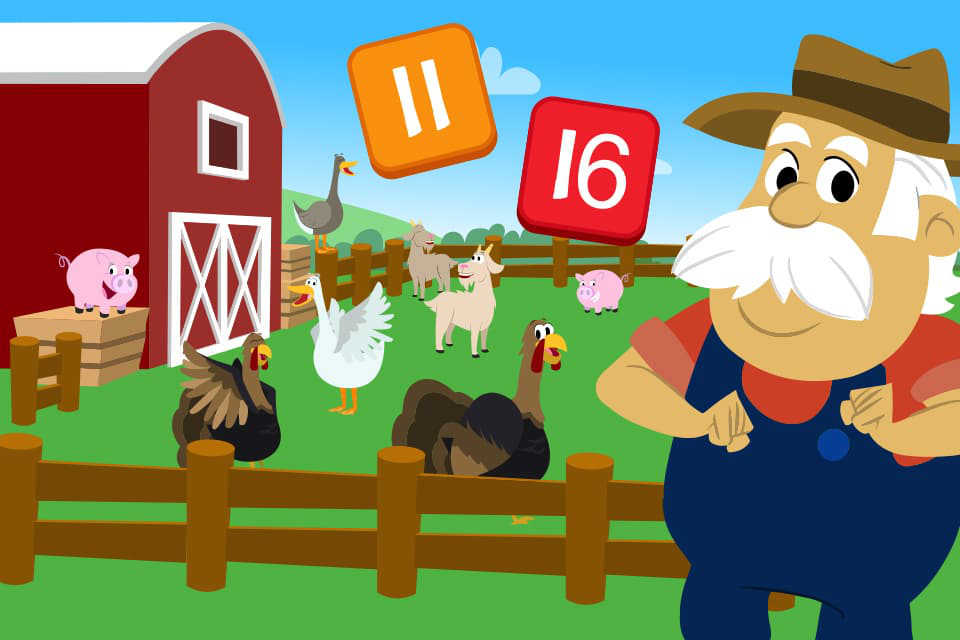
Barnyard Skip Counting
Help the farmer count out the animals he needs to bring to the fair by using a hundreds chart to skip count by 5s.
Zoo Animal Crafts, Activities and Coloring Pages
Delight animal lovers or fans of the zoo with 25+ learning activities to try on your next trip to the zoo. You’ll also find zoo animal craft ideas and free printable zoo animal coloring pages.

Animal Coloring Pages

You’ll find herbivores, carnivores, and omnivores in this collection of free printable coloring pages feature jellyfish, crabs, dolphins, sea turtles and more!
Foxes are omnivores, and you can pick from dozens of adorable and frolicking fox images to print and color from home or in the classroom.
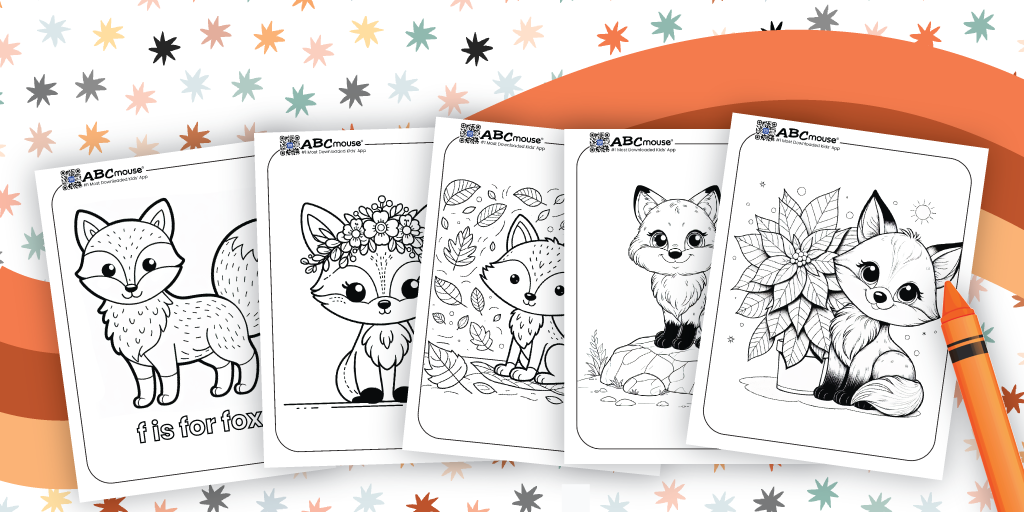
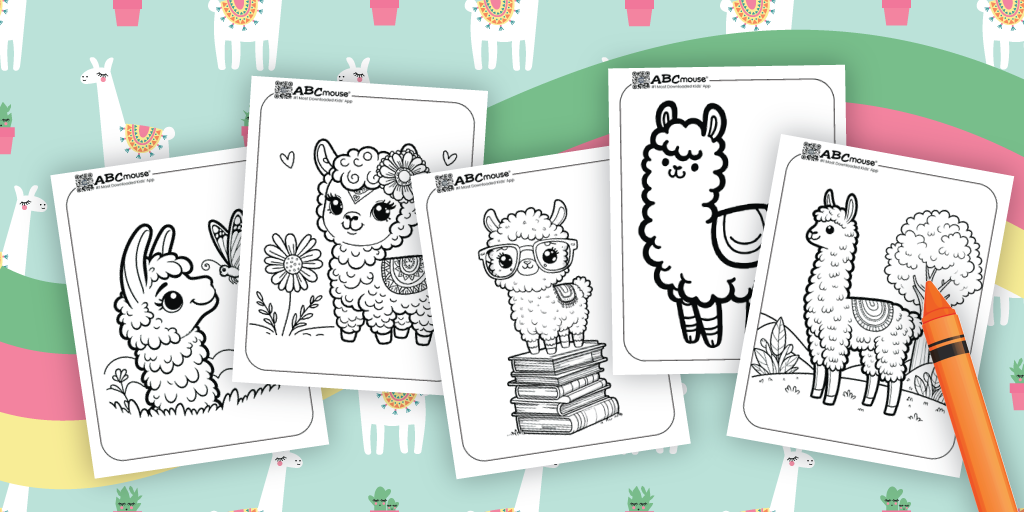
Llamas are herbivores, and you’ll find them wandering through fields, reading books, and playing with friends in these fun coloring pages.

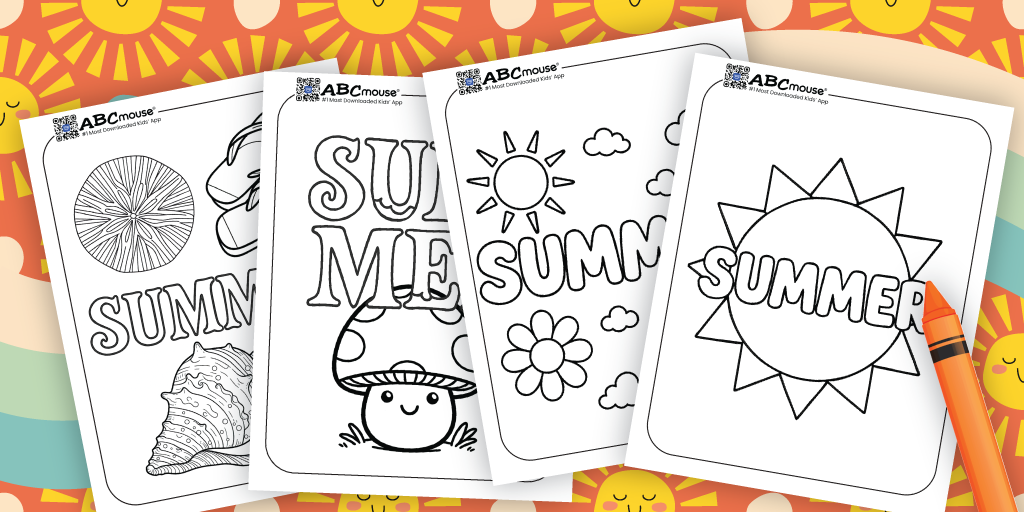
Summer Coloring Pages for Kids (Free Printables)
These summer coloring pages bring sunshine, sweet treats, holidays, and beach scenes to kids of all ages. They’ll find everything they love about the season—from ice cream cones and sandy beaches to 4th of July fun and magical ocean creatures like mermaids and jellyfish. Just grab some crayons and bring summer to life with color!
The ABCmouse Summer Coloring Pages are easy entertainment for roadtrips, summer playdates, or indoor days when the weather’s not cooperating. Simply print them out to keep on hand for whenever you need them.
What’s Included in the Free Summer Coloring Pages for Kids?
Print out one collection or try them all for the ultimate summer coloring adventure! These summer-themed pages are a fun way to celebrate the season’s holidays, treats, and sunny-day scenes.
Summer Holiday Coloring Pages
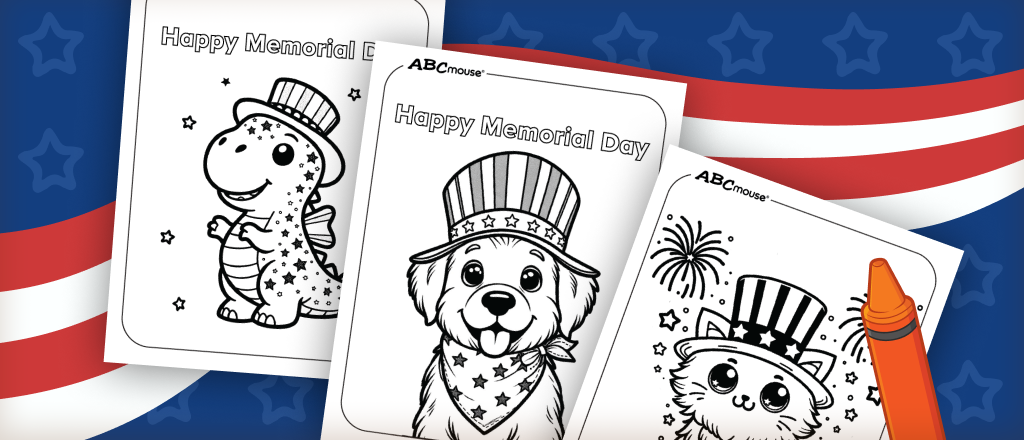
These Memorial Day coloring pages offer a fun way for kids to learn about the holiday while coloring patriotic images like eagles, flags, and other symbols that honor our military heroes.
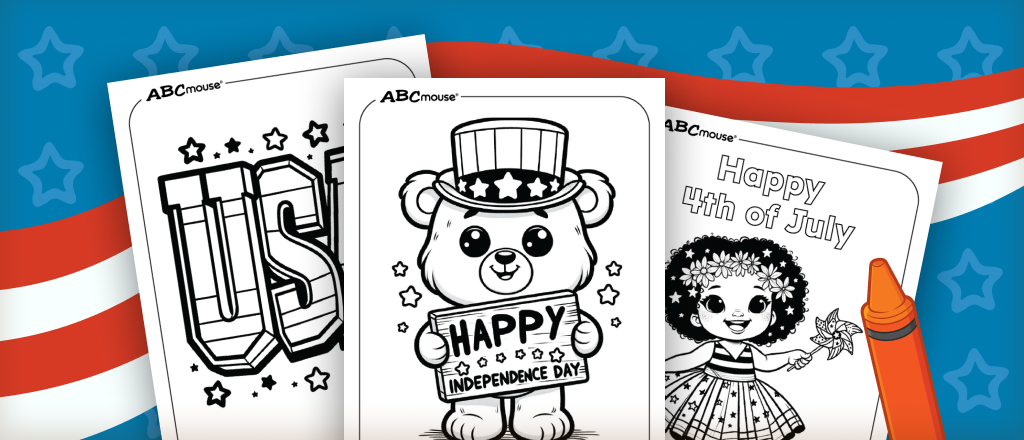
Featuring fireworks, flags, the Statue of Liberty, and a variety of cute characters and festive scenes, these free coloring pages are a fun and festive way to mark Independence Day.
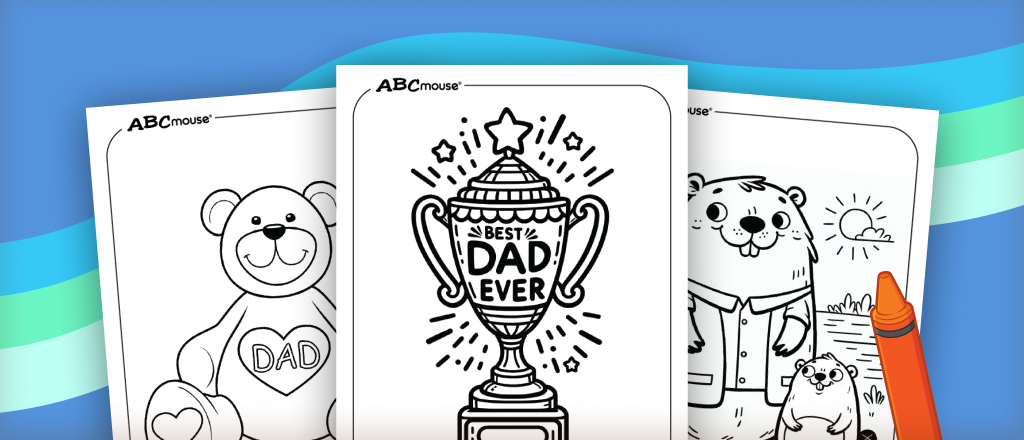
Filled with pictures of dads enjoying their favorite activities, heartfelt messages, and cheerful Father’s Day greetings, these free coloring pages are a great way to make any dad or grandpa feel appreciated and special.

Summer Treats Coloring Pages
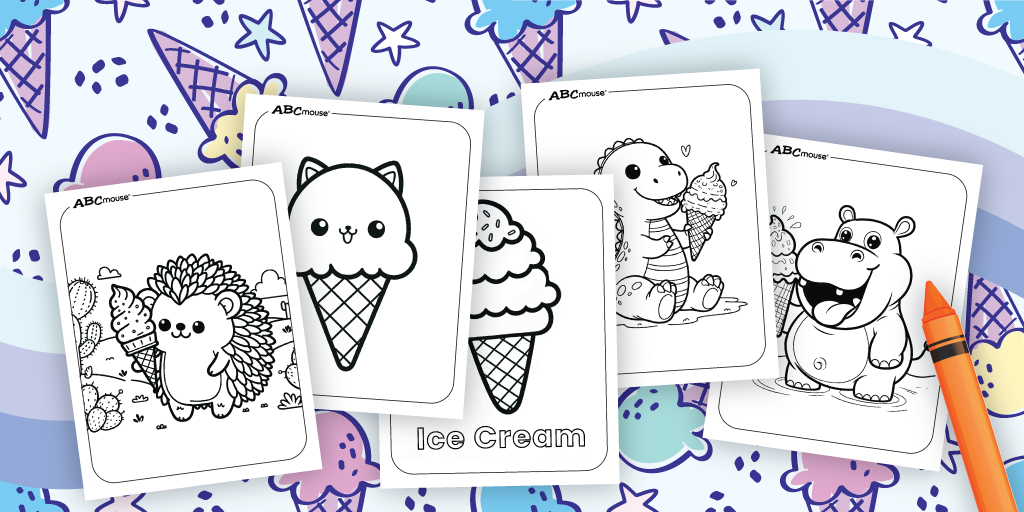
This frosty treat tops the list of most kids’ favorite summer desserts. This collection features dozens of adorable creatures enjoying every lick and drip of their cones–no napkins required!
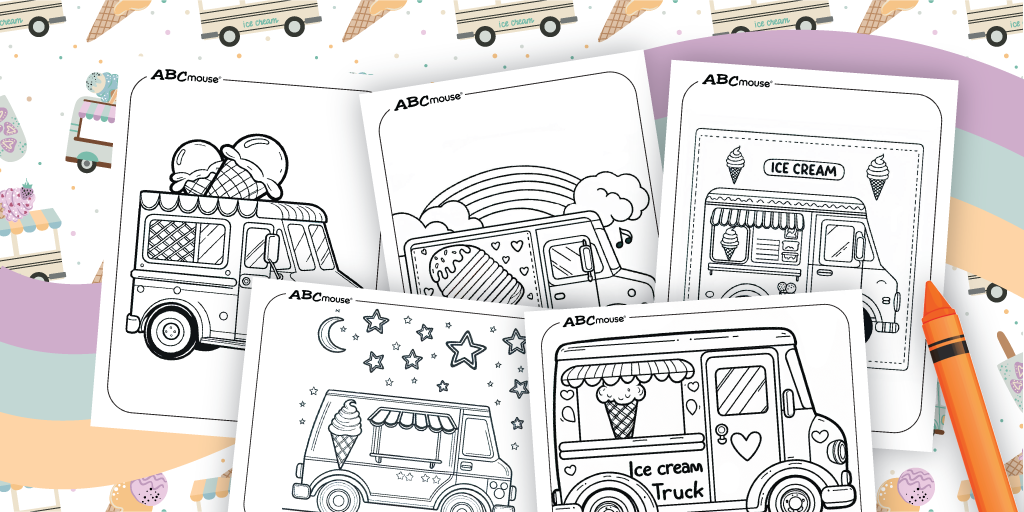
The familiar tune of these iconic trucks brings kids running every summer. Print out the collection to accompany the ice cream coloring pages and it’ll be almost as good as the real thing.
Summer-Themed Games from ABCmouse
From the sight and sounds of summer to summer activities, these free educational games for kids encourage learning while engaging with classic elements of the season (like going to camp and seeing insects!)
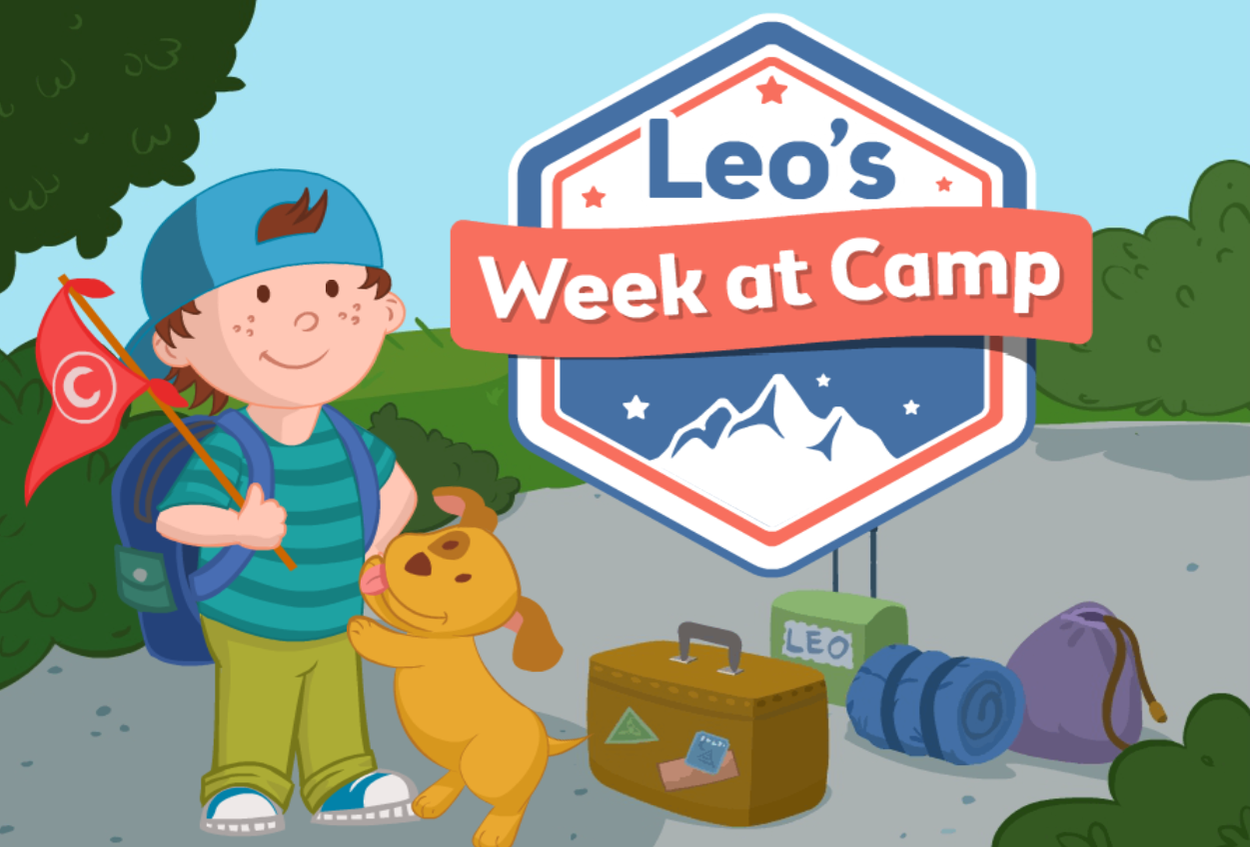
Leo’s Week at Camp
As Leo shares details about his camping trip, kids practice with the days of the week and counting and listening skills as they play.
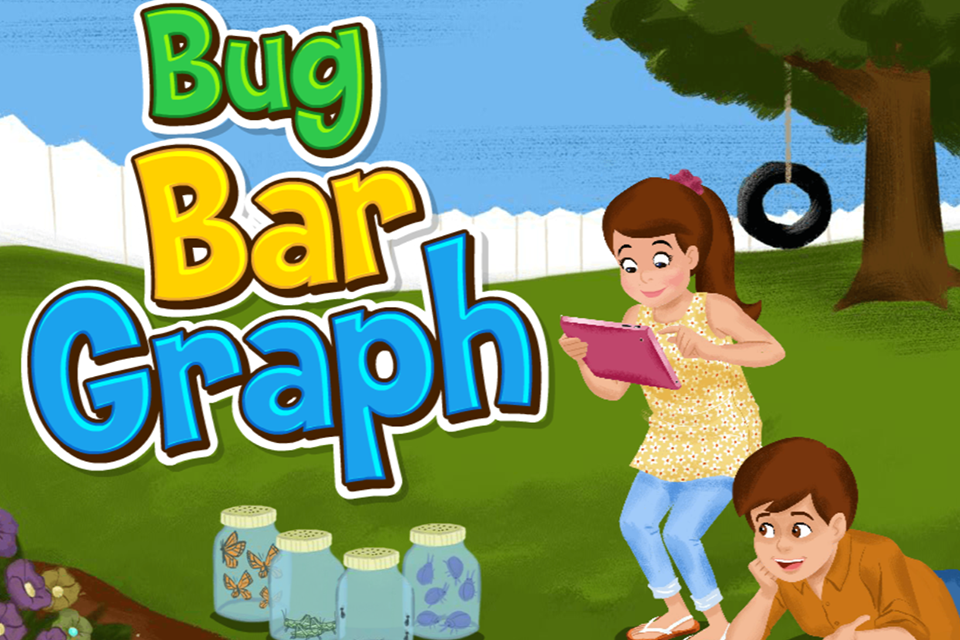
Bug Bar Graph
Rosa and Hector have been busy collecting bugs. Help them figure out how much of each bug they caught by looking at their bar graph.
Summer Flowers Coloring Pages
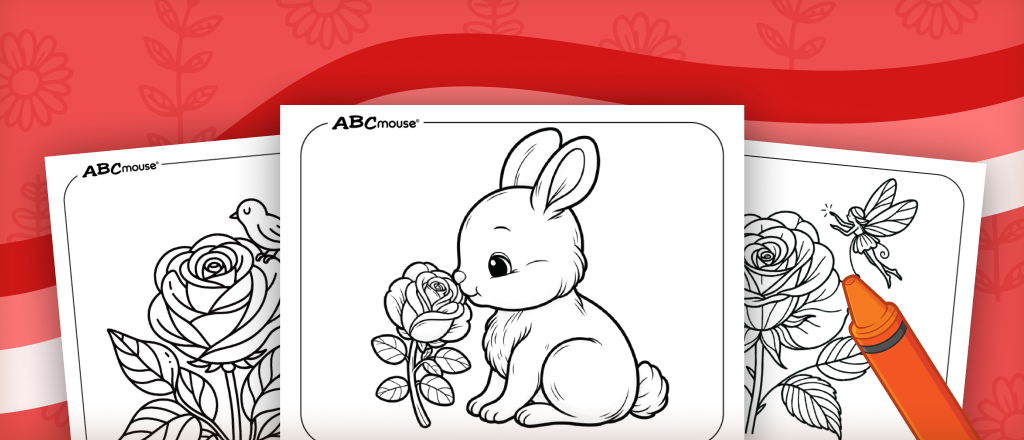
These rose coloring pages include easy designs perfect for younger kids, along with a beautiful selection of more detailed roses that older children—and even adults—will enjoy coloring. If only they made rose-scented markers and crayons!
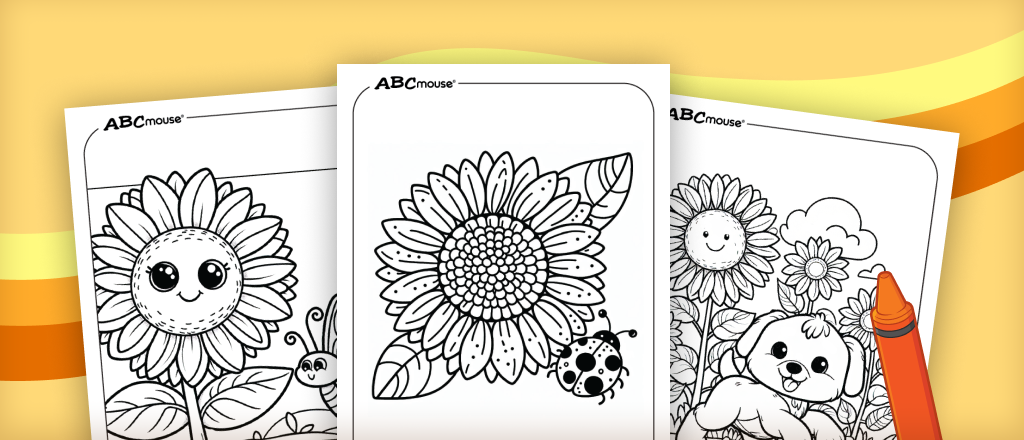
This sunflower coloring page collection has a little bit of everything—sunflowers blooming in wide open fields, sunflowers alongside animals, and even cheerful sunflowers with happy, smiling faces!

Beach & Seashell Coloring Pages
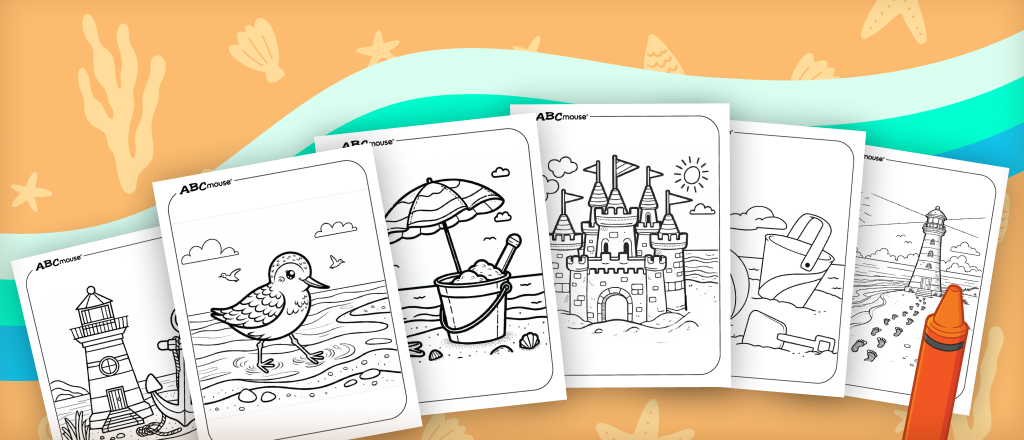
This collection of beach coloring pages offers a fun mix of seaside scenes—from sandy beaches with sand castles to shores featuring lighthouses and more.
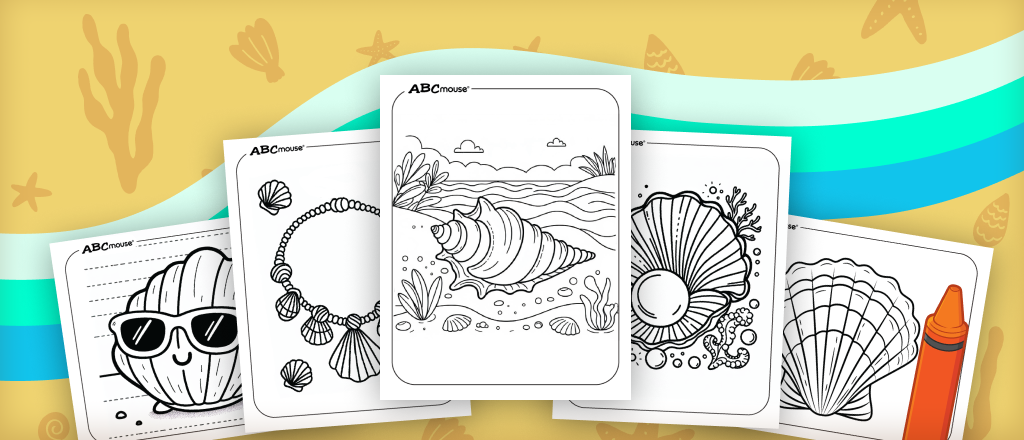
Whether it’s playful seashells wearing sunglasses or beautifully detailed, lifelike designs, our seashell coloring pages are sure to bring joy to seashell fans of every age.

Ocean Animals & Mermaids Coloring Pages

With everything from colorful fish to seahorses, sea turtles, crabs, and beyond, this collection of sea creatures has something to delight kids of all ages.
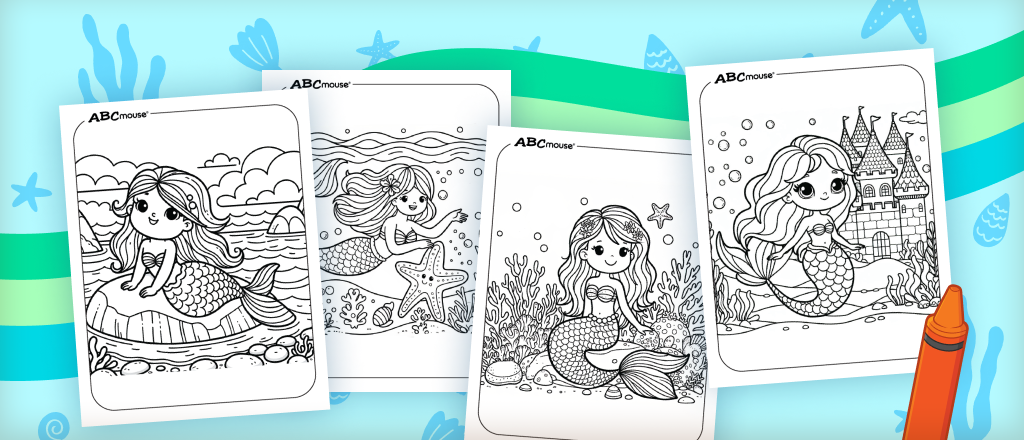
Pick from cute or enchanting mermaids coloring pages and beautiful mermaid coloring pages to easy mermaid coloring pages and mermaid coloring pages for adults.

Birds & Snake Coloring Pages
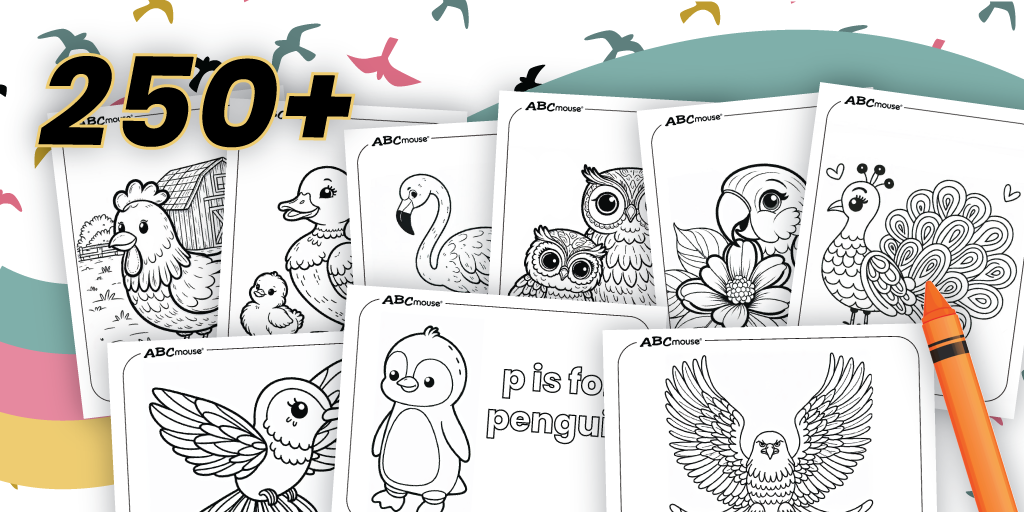
Pick from adorable ducks, majestic eagles, fabulous flamingos, wise owls, impressive parrots, and many other delightful birds. There are over 200 pages in this collection!

From simple, cute snake illustrations for younger kids to more realistic images for older children, there’s a slithering snake here for every age!

Preschool Curriculum for 3-Year-Olds
Find out what a 3-year-old should learn in preschool and the many different ways ABCmouse can help, including games, activities, and lessons.
Age three is a magical time: it’s when a toddler transitions into the preschool years and their education becomes a bit more structured. A strong preschool curriculum for 3-year-olds paves the way for the school years to come, by teaching skills like letters, numbers, and shapes as well as encouraging curiosity about the world around us.
Discover more about what a 3-year-old learns in preschool, and then explore how your child can use ABCmouse to build essential skills through play.
What Should a 3-Year-Old Learn in Preschool?
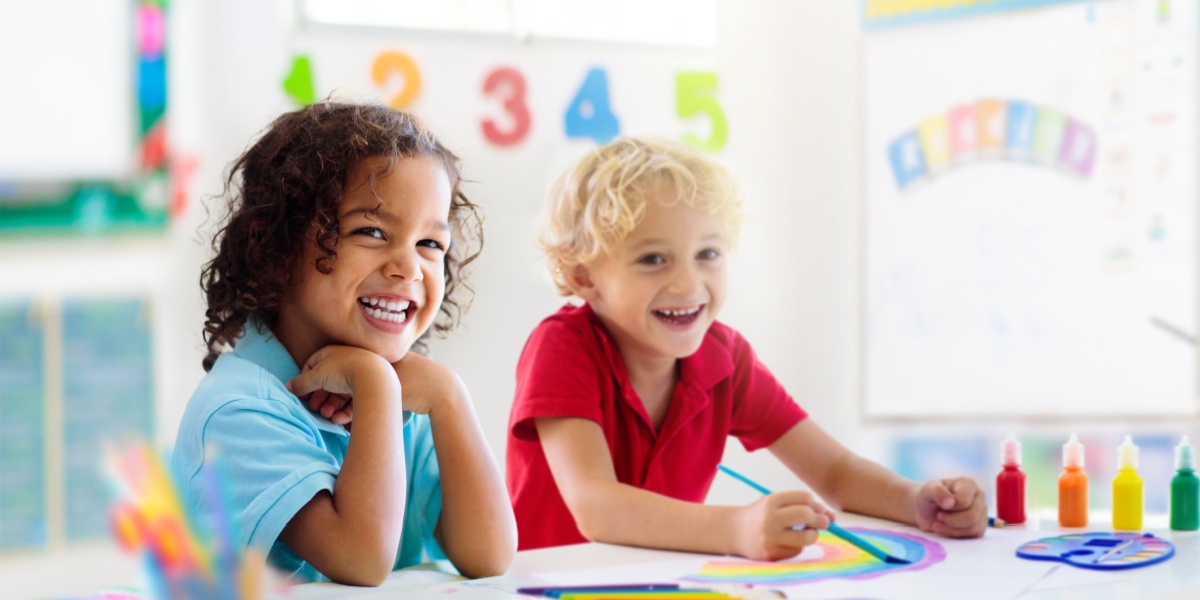
By age 3, most children are ready to start approaching learning in a more structured way. This means setting aside daily time to focus on the important skills and concepts that prepare kids to learn reading, writing, math and more. Here’s what preschool learning for 3-year-olds should include.
Early Literacy and Pre-Reading
Three-year-olds should develop a skill called phonological awareness, which means they understand that words are made up of individual sounds. They also learn to recognize the letters of the alphabet and the sound(s) each one makes. This begins their journey with phonics, which opens the door to reading fluency. Learn more about phonics for preschoolers here.
Early Math Skills
A preschool curriculum for 3-year-olds teaches includes developing early math skills. Number recognition is one of the most important, starting with the numbers 1 to 5 for this age group. In addition to recognizing the numbers themselves, 3-year-olds learn how to count objects, using one-to-one correspondence to figure out how many items are in a group.
Basic shapes (and primary colors) are included in 3-year-old preschool activities too. Kids this age practice sorting items by their characteristics and recognizing simple patterns. They experiment with measurement, comparing items to find which are bigger or smaller. These math concepts for preschoolers prepare them for elementary school arithmetic and geometry in the years to come.
Real World Concepts
At age 3, kids tend to have an insatiable curiosity about the world around them. Now’s the time to teach them about animals, seasons, and the weather. They also learn personal concepts like parts of the body and how to get dressed. Plus, 3-year-olds begin to explore and understand their relationships with people they know, such as parents, grandparents, siblings, teachers, doctors, and other caregivers.
Motor Skills
Your child has been developing motor skills since the day they were born! By preschool, 3-year-olds should be polishing their gross motor skills by practicing throwing and catching or exploring movements like jumping and skipping.
This age group is also developing their fine motor skills, understanding what it means to grip and use crayons or pencils to write and draw. They practice using scissors to cut along lines and mold playdough into shapes with their hands. In today’s world, they often learn how to tap on a screen or press the right keys to use learning apps like ABCmouse too!
Creativity
Incorporating structured learning doesn’t mean abandoning creativity and play—in fact, it’s just the opposite! Preschool activities for 3-year-olds should include plenty of exposure to music and art. Encourage your child to tell stories and act them out, mix paint colors to make new ones, or sing and dance to multiple kinds of music.
Social Emotional Learning
While formal skills like letters and numbers are important, a good preschool curriculum for 3-year-olds also incorporates social and emotional skills. They explore concepts like kindness, self-regulation, turn taking, and caring for the community, preparing them to be good citizens of the world as they grow.


What Does A Preschool Curriculum Look Like?
A preschool curriculum should teach kids the developmental skills they need, including pre-literacy skills like letter recognition and sounds; foundational math concepts including counting, shapes, and patterns; beginning social studies and science topics like nature and communities; and creative exploration of color, music, and art. Ideally, a preschool curriculum uses a variety of activities to encourage learning, such as fun, engaging games and lessons, beginning readers, printable worksheets, and educational stories and videos.
If you live in a community without a preschool, or if your child attends preschool but you’d like to further enhance their learning, ABCmouse aims to provide this effortlessly for families. The ABCmouse preschool curriculum is designed by expert educators to provide all of these key elements, along with a motivating reward system and a wide variety of learning opportunities, which helps keep three-year-olds excited to continue learning.
ABCmouse doubles early learning gains in reading and math.*
*Age of Learning study; PreK kids; min. 2 day/wk & 1 hr/wk usage. See aofl.com/research for more info.
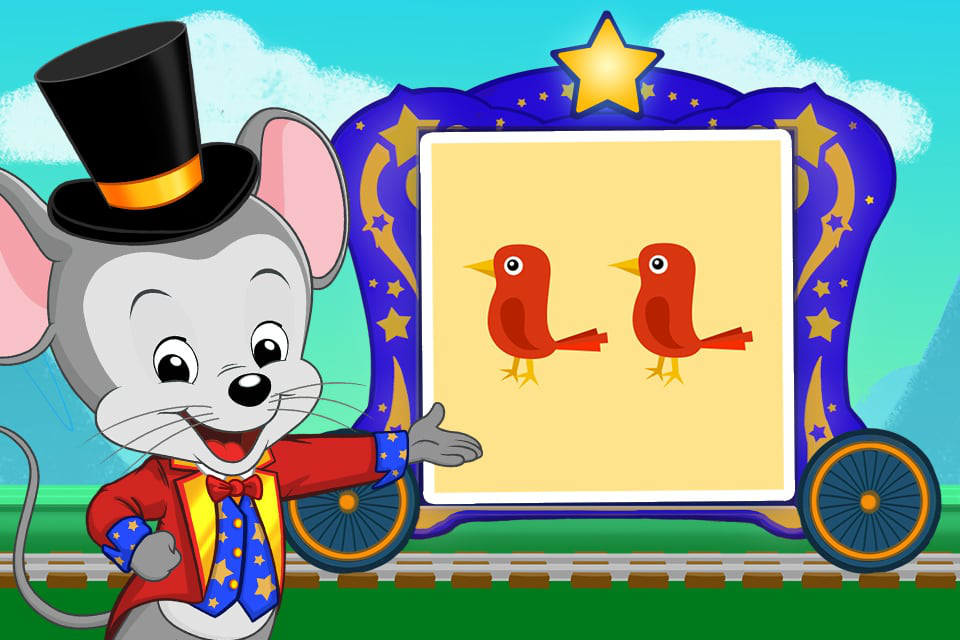
What Do Preschoolers Learn with ABCmouse?
While there are thousands of different ways to learn with ABCmouse, the two main approaches are by following your child’s Learning Path and/or selecting from the many different educational games, songs, books, puzzles, and videos within the app.
The Learning Path allows children to continue growing their skills through a variety of planned activities. If an adult or child would like to create more focused instruction on a topic, like numbers, or a theme, such as farm animals, they can do so by guiding the child to specific games, books, and activities.
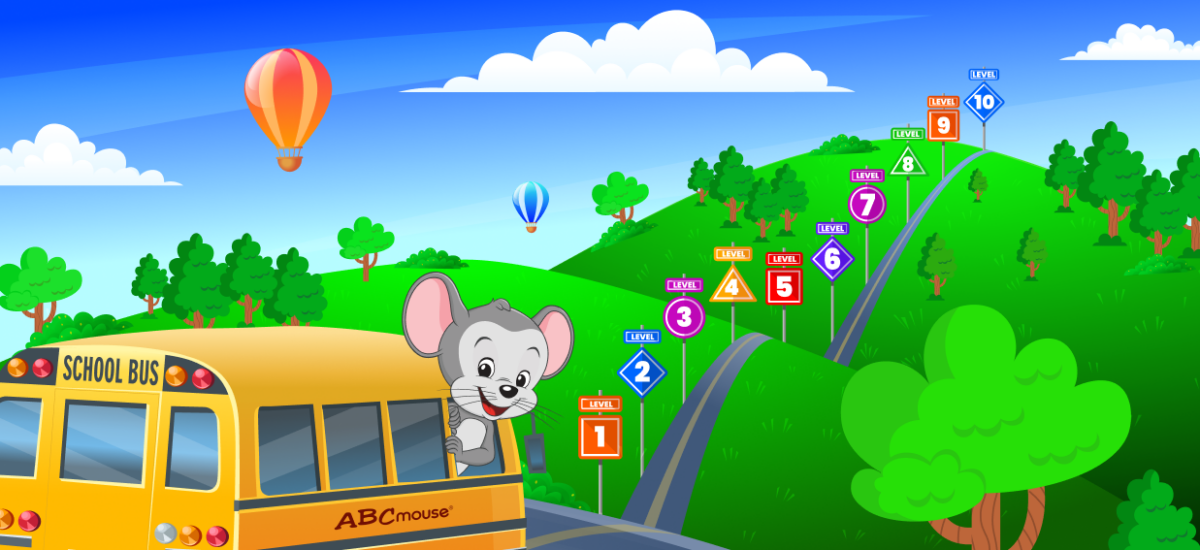
What Does A Day of Learning Look Like for a 3 Year Old?
With ABCmouse, a day of learning for a three-year-old can be structured around their Learning Path or customized by an adult. The app can be used to support classroom learning or to grow foundational skills at home.
The ABCmouse Learning Path is designed to help children grow key skills through a variety of planned activities. Introducing concepts through engaging games, read alouds or read along books, learning activities, and printable worksheets and coloring pages gives children multiple ways to learn and practice, which helps them stay motivated and excited.
Adults can also choose what their child learns each day, planning a list of activities and guiding their child through them. This allows children to focus on specific skills, such as letter learning, or enjoy themed learning activities, such as a day of learning with pirates, farm animals, sea creatures, and more.
One Day with the Level 1 Learning Path:
This example provides an overview of the types of activities and subject matter a three-year-old may engage with during one day on their designated Learning Path within in the ABCmouse app.
Children can explore as many educational activities as they’d like while in app. On the other hand, if a child needs shorter learning session, that’s okay too–a child’s Learning Path does not have to be completed within a certain timeframe. Here are a few examples of learning activities preschooler can enjoy on their Learning path.
Zoo Number Pop and Peek 1-5 Learning Game
Playing this early learning game helps preschoolers work on number recognition skills while popping balloons that match the numbers they hear, uncovering a hidden zoo surprise.
This classic counting song encourages preschoolers to sing along as they practice with numbers and start laying the framework for subtraction.
Look At All The Colors I Can See Song
Learning colors gets even more interesting when it’s combined with an engaging video and catchy song for preschoolers to sing along with.
Alphabet practice turns into game play as preschoolers work on letter recognition while feeding a hungry frog!
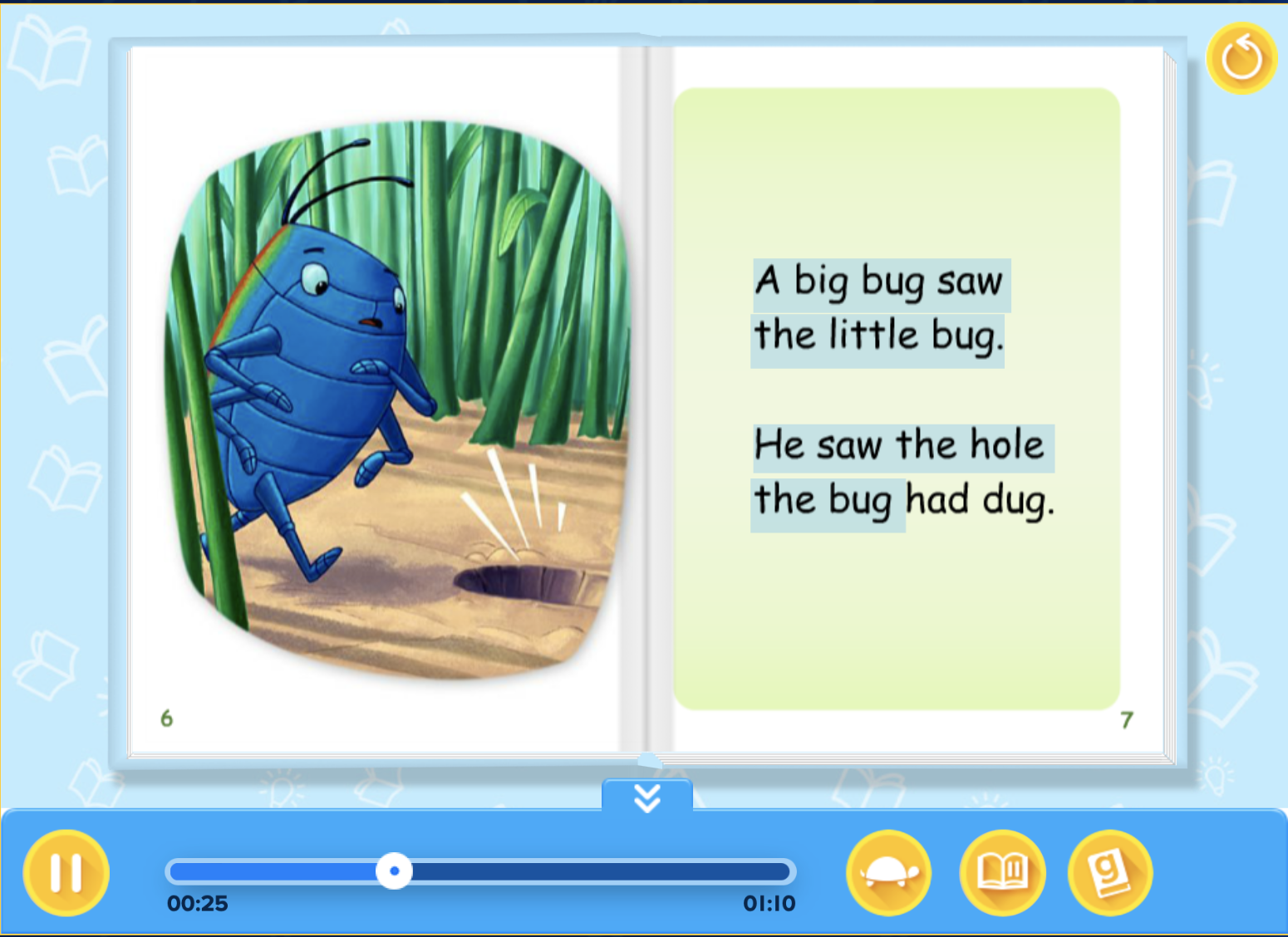
Storytime
Read along with a leveled reader book, such as Big Bug and Little Bug, which is one of over 450 books in the ABCmouse library.
Learn with a Puzzle
Interactive puzzles like Numbers Jigsaw Puzzle : 1 Elephant are a regular part of the Learning Path.
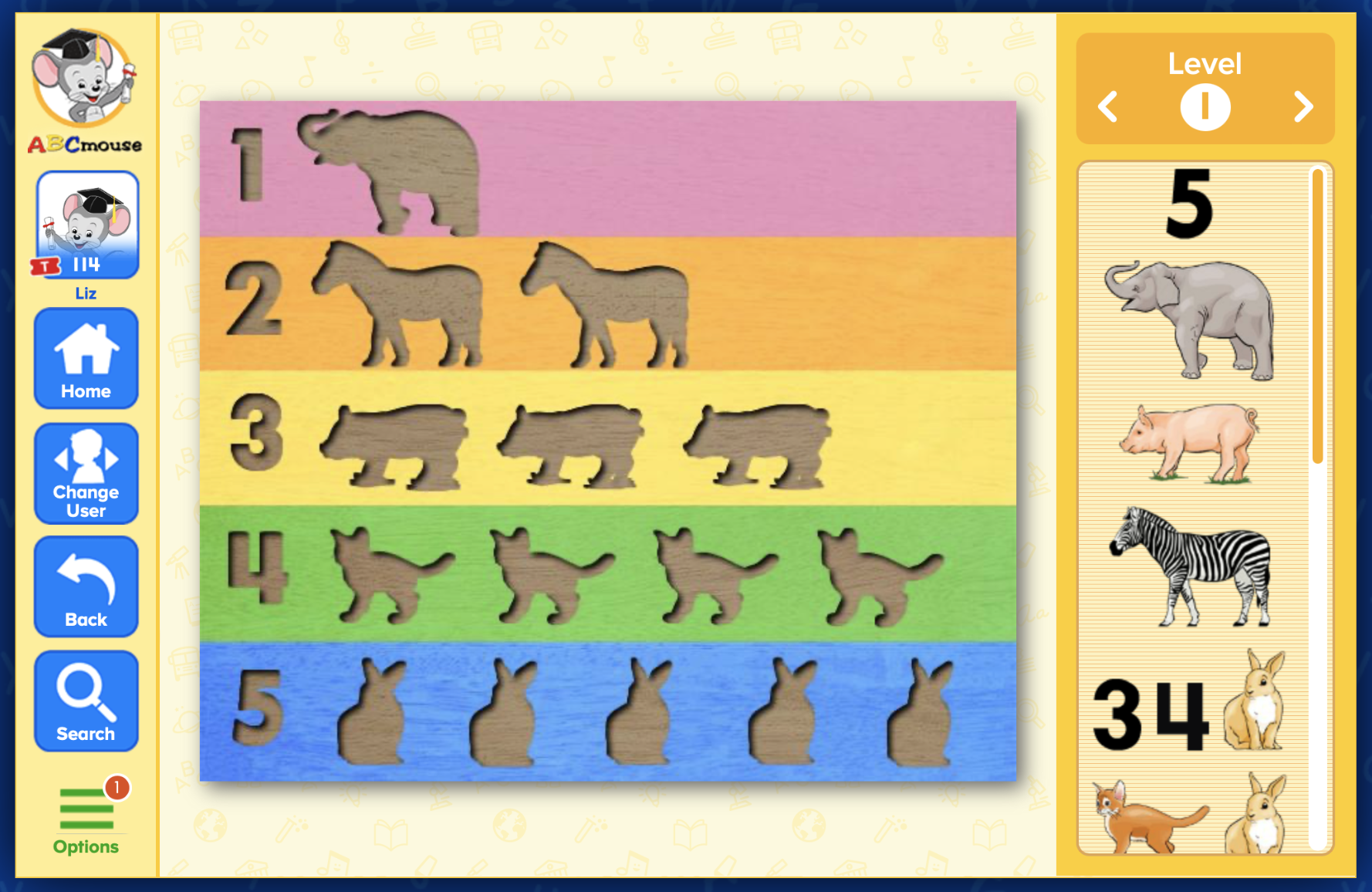
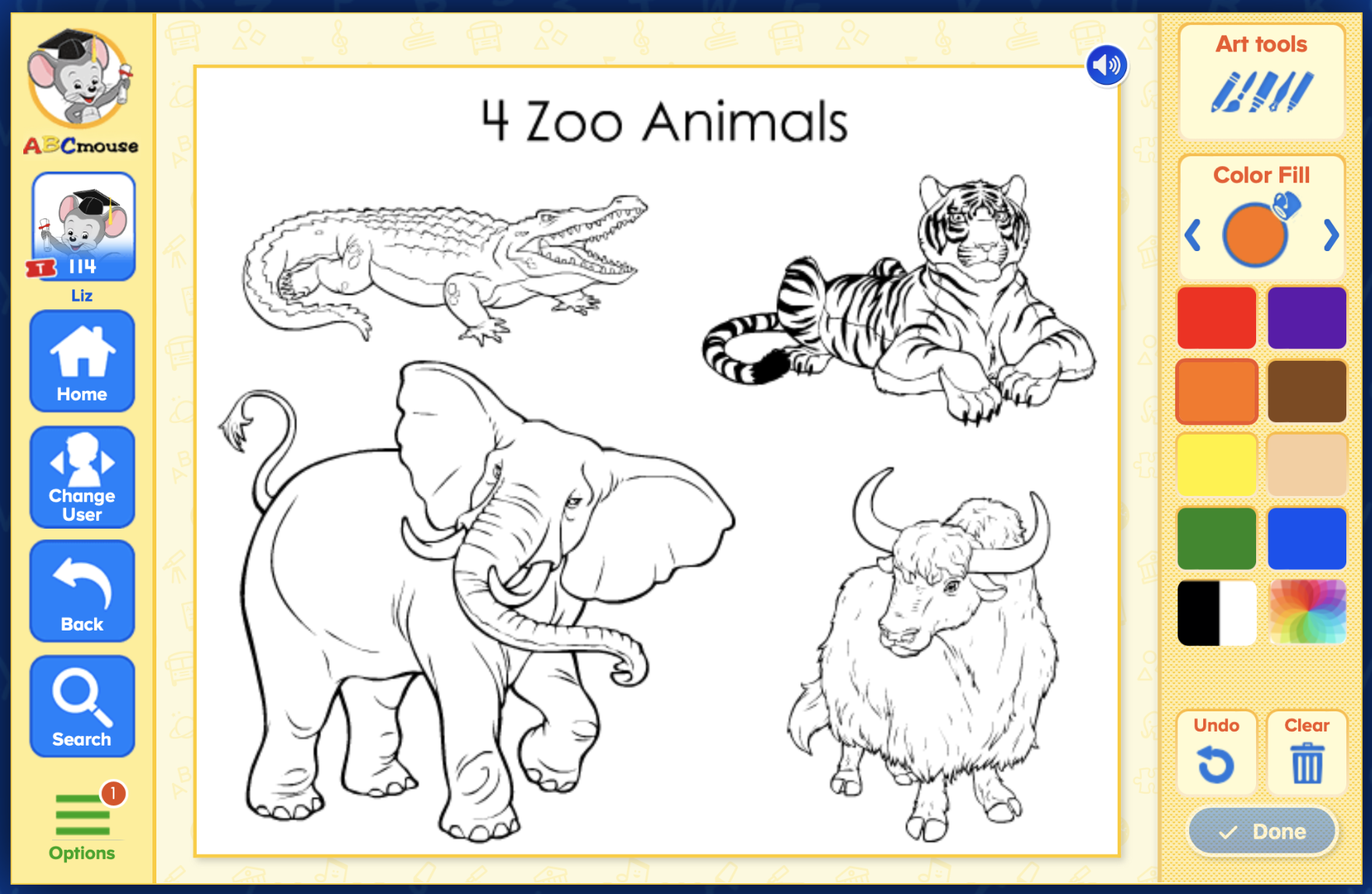
Try Some Virtual Painting
ABCmouse includes worksheet-style activities to complete within the app or to print out and complete offline.
Along the way, children can take a break from the Learning Path to enjoy the following:
- Other games and activities
- Spend their earned tickets at the Shopping Center
- Watch a short song or video in the Movie Theater
- Learn about animals at the Farm or Zoo
- Care for their aquarium or adopted pet

Shopping Center
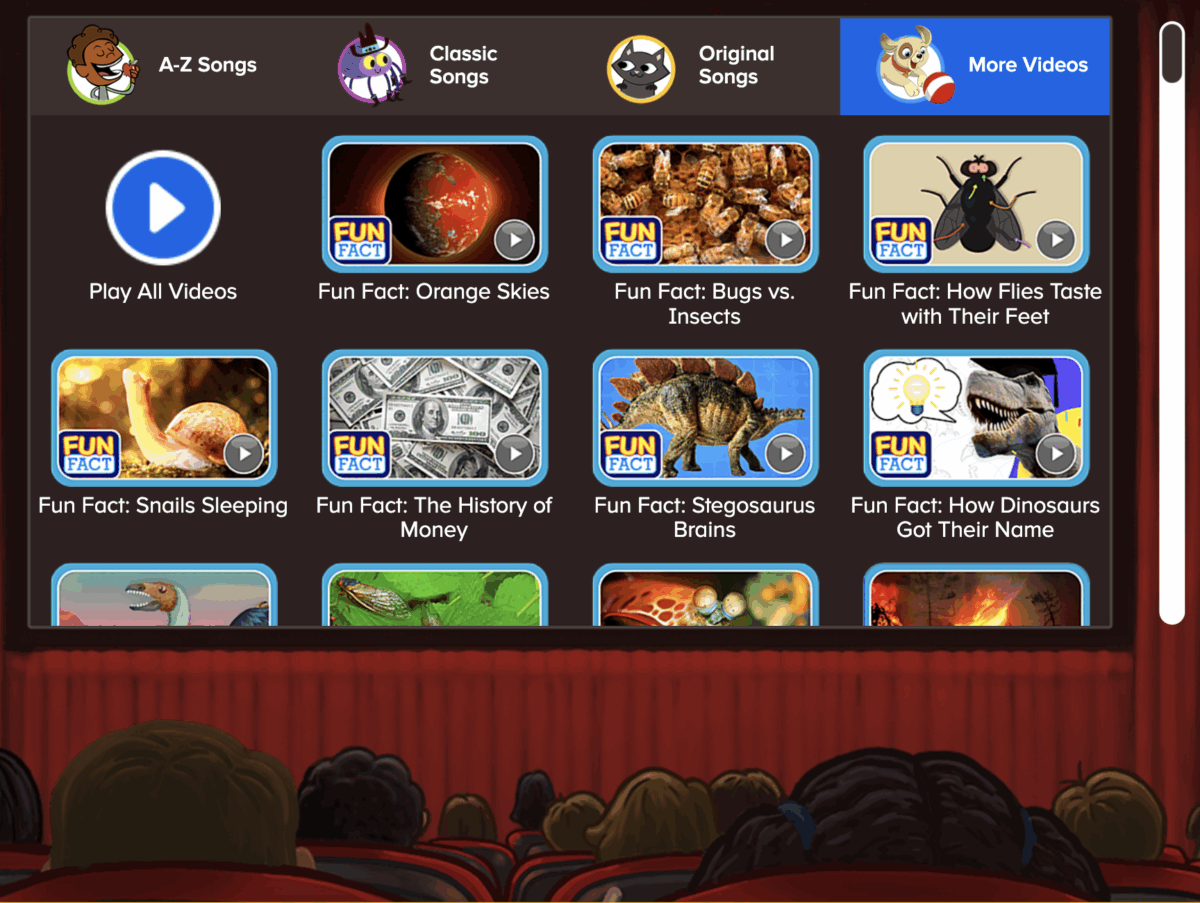
Movie Theater
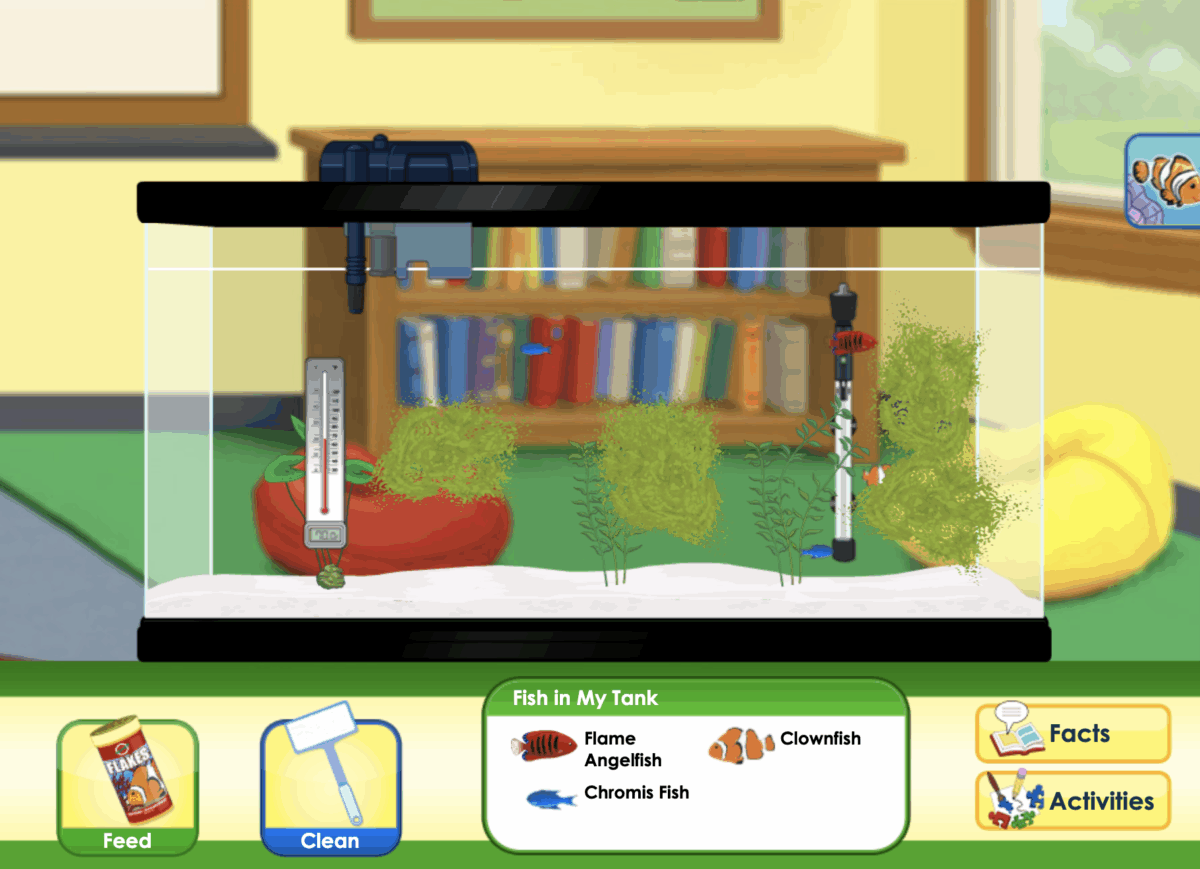
Aquarium
One Day of Customized Learning for a 3-Year-Old
If an adult would like to create more focused instruction on a topic, like numbers, or a theme, such as farm animals, they can do so by guiding the child to specific games, books, and activities. These can be enjoyed in addition to the activities offered on the child’s Learning Path.
For example, if an adult wanted to focus lessons on learning the alphabet, they could pick from the hundreds of games, books, songs, and other activities within the ABCmouse app on this topic. Here are a few examples:
Watch and Sing Along with Alphabet Songs
From the Home Screen, head to the ABCmouse Movie Theater to watch and sing along with all 26 of the catchy A-Z Letter Songs.
Visit the ABCmouse Library
From the Map section of the Home Screen, visit the library and read the books Alphabet in the Park and The Letter A Book.

Pick from Dozens of Alphabet Games
Go to the Classroom and select Reading from the banner at the top. Then select Games and pick from Pirate Alphabet Bubble Popper, ABC Memory Match, or dozens of other ABC-focused games.
Take a Break with a Pet
Take a break from letter learning and have some fun by adopting and caring for a pet at The Pet Park or by checking in on the fish in the classroom aquarium.

Visit the Farm
Next, go to the Farm and take a minute to meet and learn about the chickens, enjoy a chicken-themed art project, and sing along with Old McDonald Had a Farm.
Return to Letter Learning
Get back to letter learning by working on the ABC Picture Puzzle and playing the game Galaxy Dash: Uppercase Letters.
Learning can also be focused on themes, such as Dinosaurs, Pirates, Horses, Pets, and more. Here’s an example of learning activities built around a dinosaur theme:
- Watch the Fun Facts Video: How Dinosaurs Got Their Names
- Color-by-Numbers: Dinosaurs–online or printed out
- Play Mighty Dinosaur Chomp Math Game
- Read the book Dinosaur Playdate
- Print out the Dinosaur Playdate Writing Prompt
- Try the Dd is for Dinosaur Jigsaw Puzzle
- Watch the If I Were a Dinosaur Music Video
- Play the game How Likely Is It? Dinosaurs
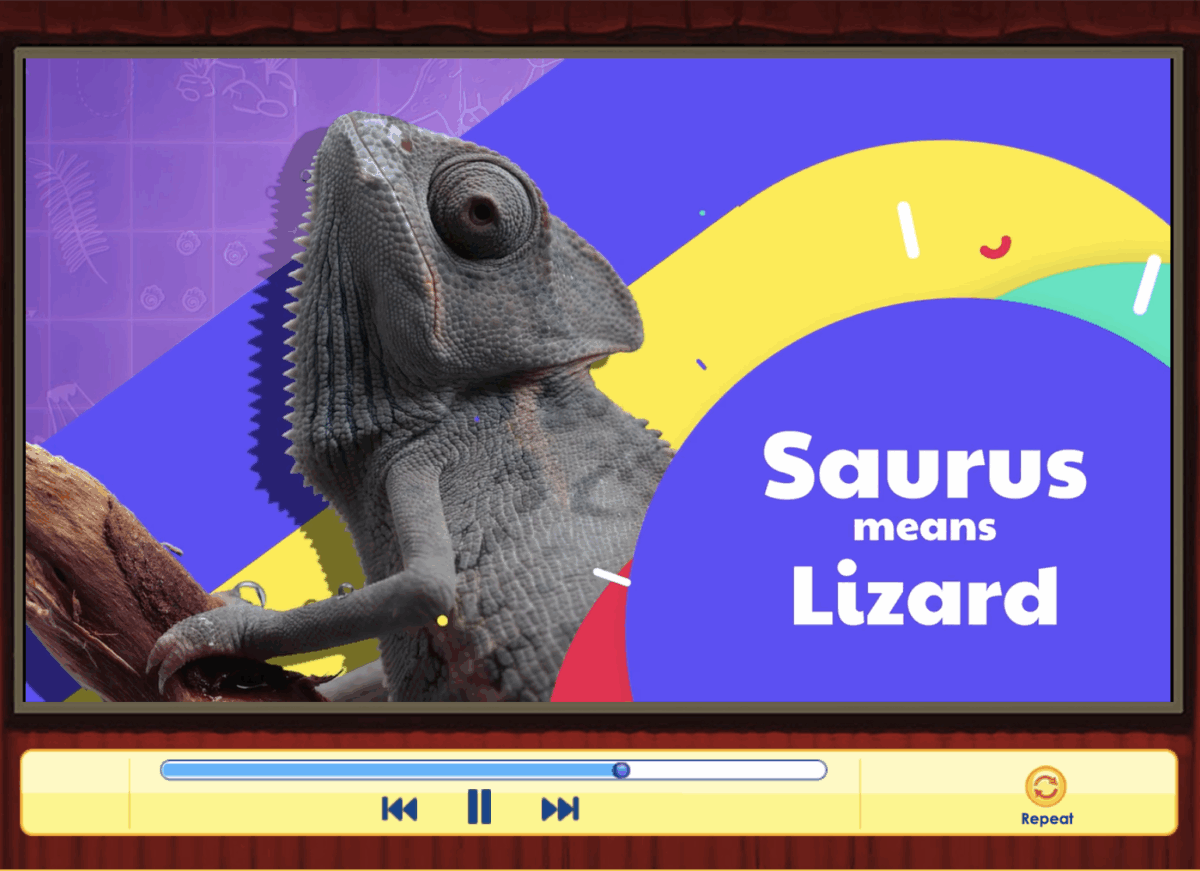
How Dinosaurs Got Their Names
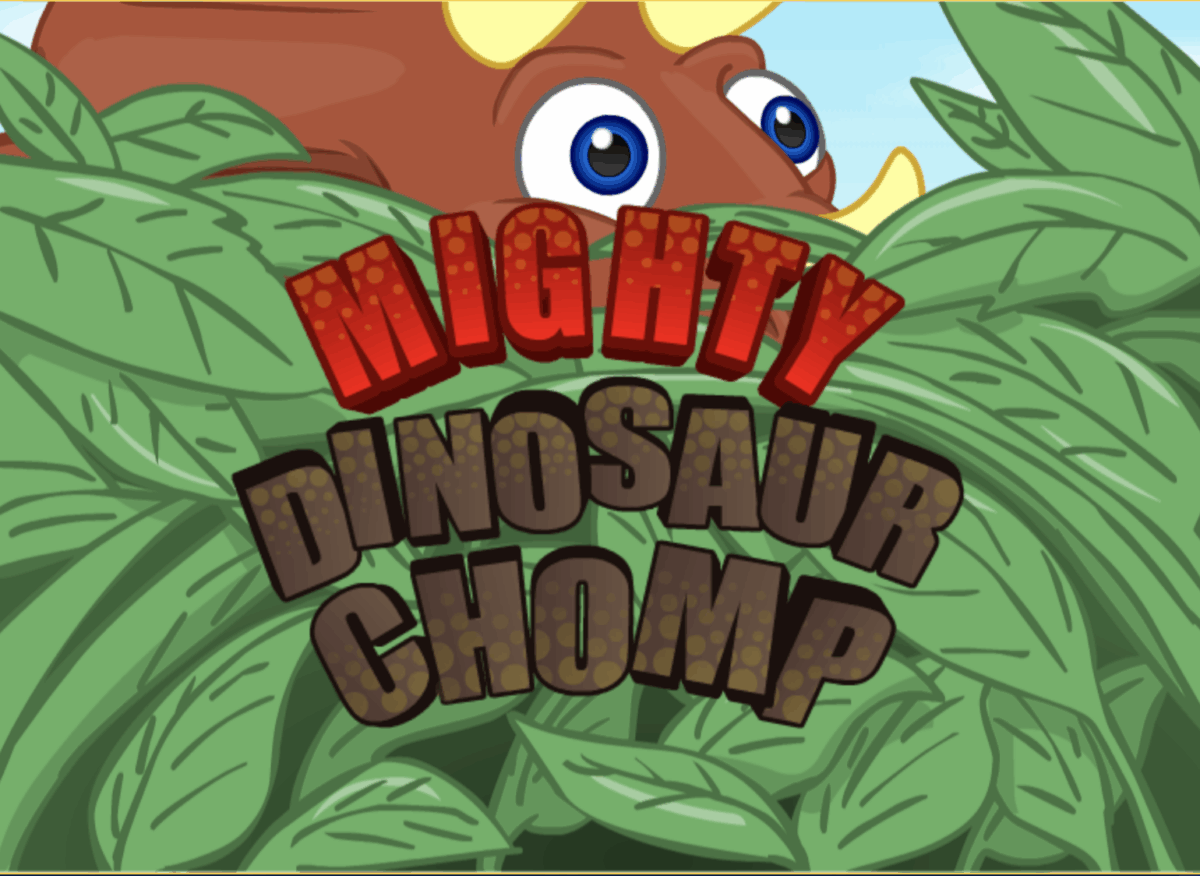
Dinosaur Games

Color-by-Numbers: Dinosaurs
How Much Time Does My Preschooler Need to Spend Learning?
Preschoolers typically engage in learning activities for 15 to 30 minutes at time. Some children have longer or shorter attention spans, so adjust the time spent learning to their needs.
ABCmouse is designed to help your child in as little as 15 minutes a day and can easily be incorporated into your daily routine. Use it for quiet time after lunch or dinner or for a bit of learning in the morning. Children can learn on their own with the app or adults can sit down with their child to explore new concepts, followed by time spent doing hands-on activities that reinforce the learning. At preschools, teachers can set up a learning station for kids to play independently throughout the day. The way you use ABCmouse is up to you!

Letter W Crafts & Activities for Preschoolers
Share
Kids will be wowed by these whimsical letter W crafts, plus they add fun and creativity to letter learning!
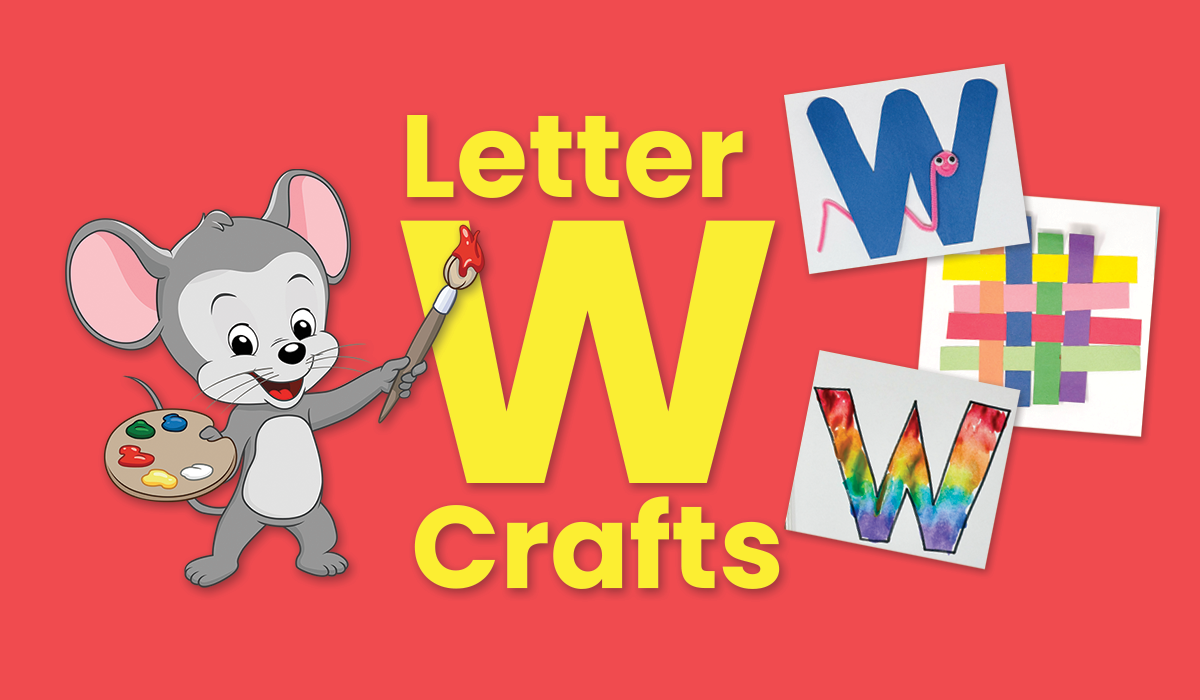
Table of Contents
Explore the letter W through fun, hands-on crafts and simple activities that make learning exciting! Each project uses everyday craft supplies and is quick to complete—perfect for young children with adult help and guidance.
Several of the letter W crafts and activities listed below require the outline of a letter W. You can draw one yourself or find one in our free printable collection of letter W worksheets.
1. W is for Wagon
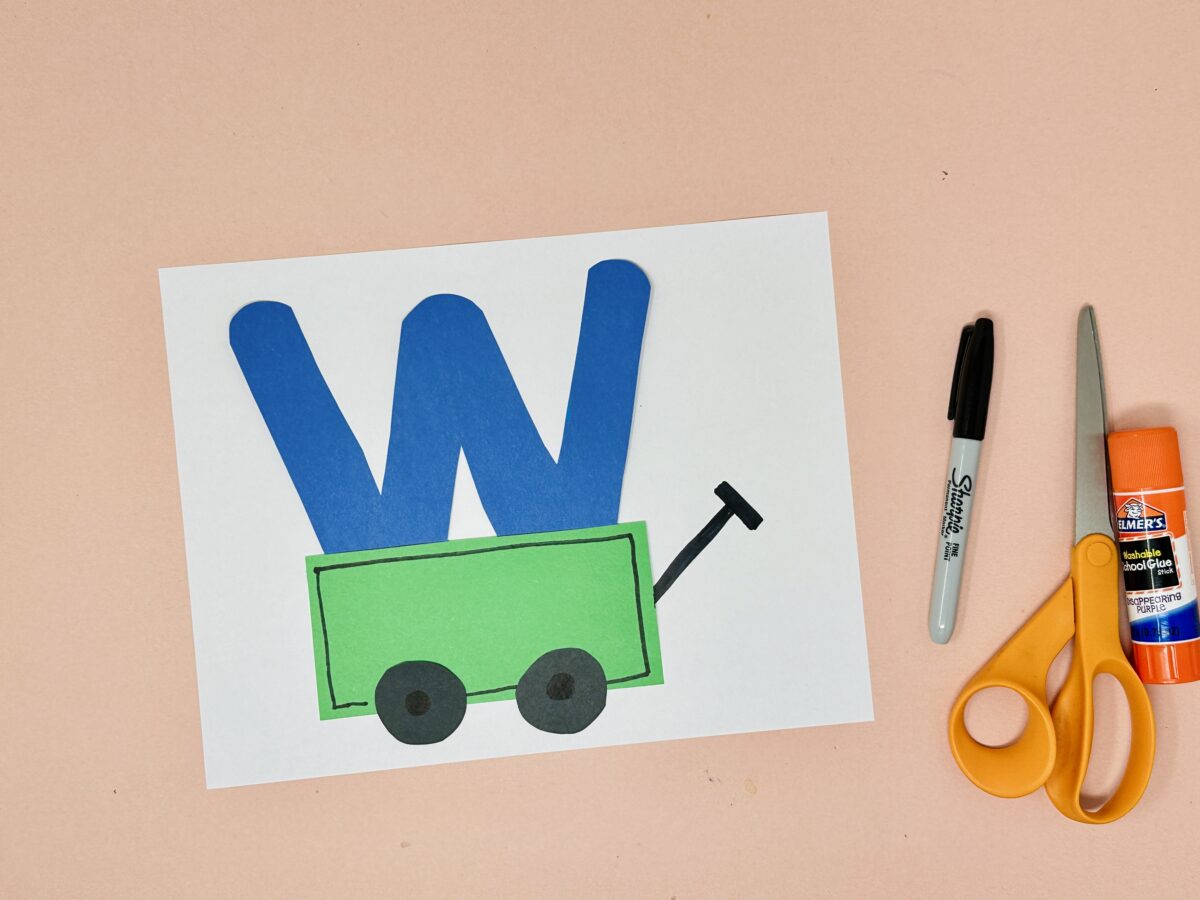
W is for a wagon with two sturdy wheels!
Required Materials
- green, blue, black, and white construction paper
- scissors
- glue
- black marker
How To
Draw or print out the outline of a letter W onto blue paper and have your child cut it out. Next, have your child cut a rectangle from green paper and two circles from black paper to create the wagon’s body and wheels. Be sure to cut a green rectangle that’s longer than the base of your letter W.
Assemble these pieces so it looks like the letter W is sitting inside of the wagon. Glue the pieces down, and then draw in a black handle for the wagon and a black border around the edge of the wagon’s body.

2. W is for Weather
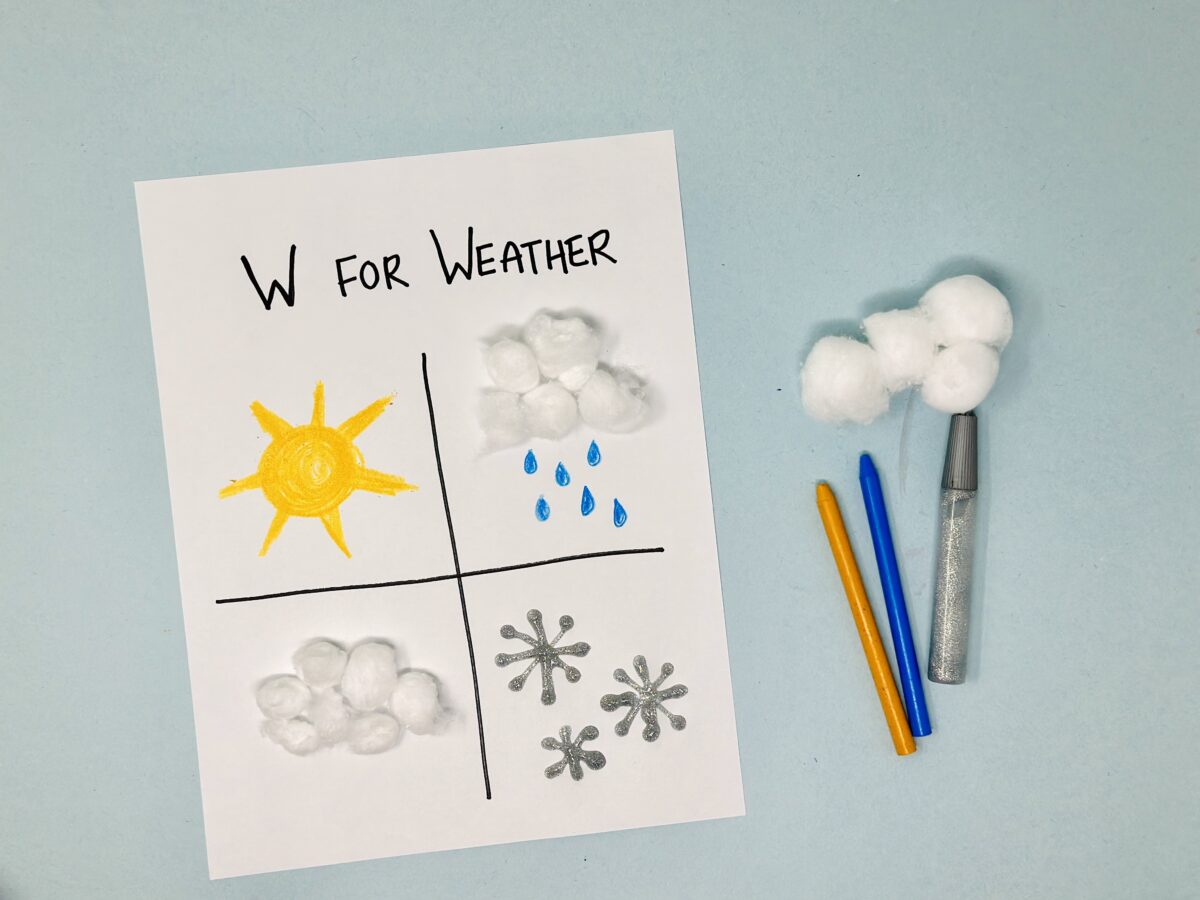
Use the letter W to study the weather!
Required Materials
- paper
- markers
- cotton balls
- glue
How To
Draw two lines onto a sheet of white paper, dividing the paper into four quarters. At the top of the paper, write W is for Weather. Talk with your child about all the different types of weather that can occur, from rainy and wet days to lovely, sunny days.
Illustrate four different types of weather using markers, cotton balls, or any other items you have around the house. Then have your child mark which type of weather is their most and least favorite.
3. W is for Water
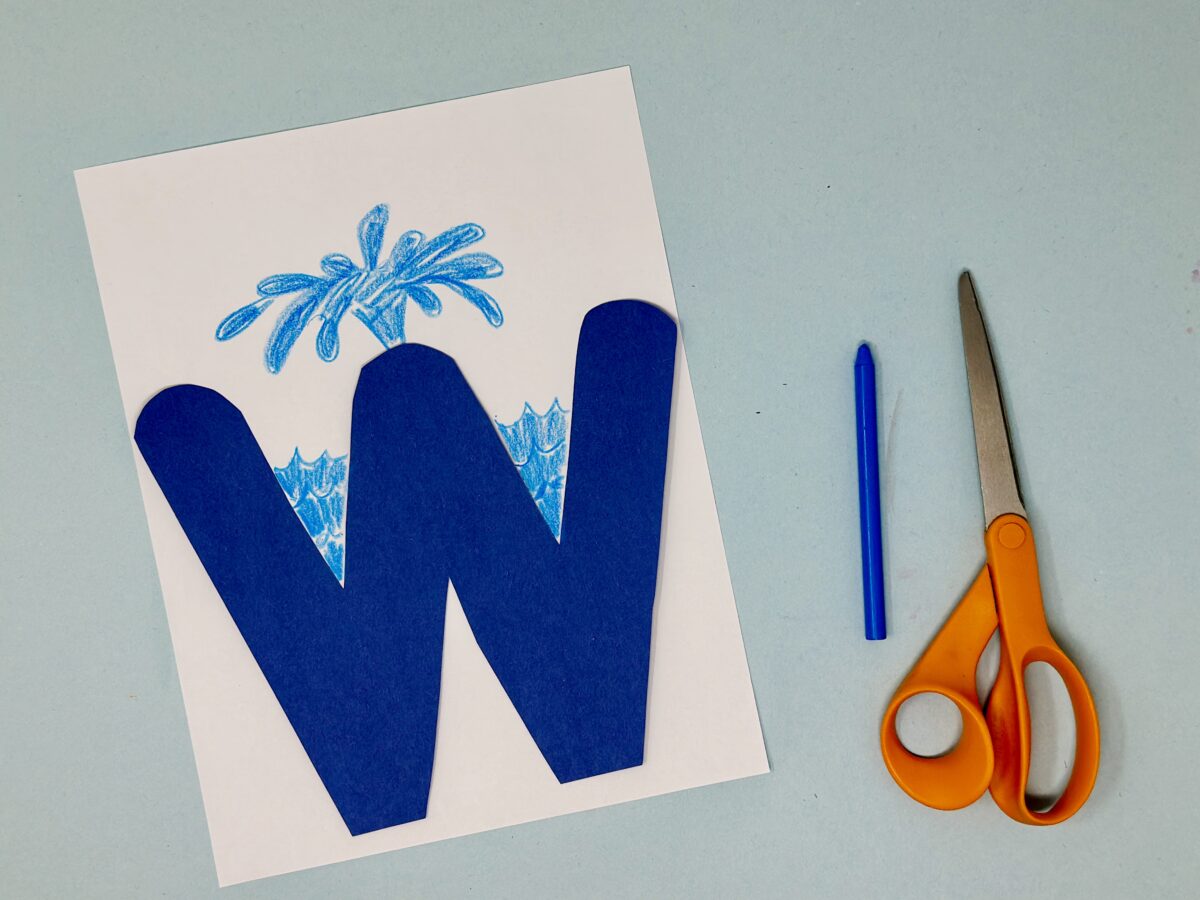
The letter W get “wet” from water in this simple craft!
Required Materials
- blue and white paper
- scissors
- colored pencils, crayons, or markers
- glue
How To
Draw or print out the outline of a letter W onto blue paper and have your child cut it out. Glue the W onto a piece of white paper.
Fill in the space between the lines of the letter W with blue crayons or pencils, making waves along the top to create the appearance of water. Then add a large blue splash of water coming from the middle of the letter W.
4. W is for Weave
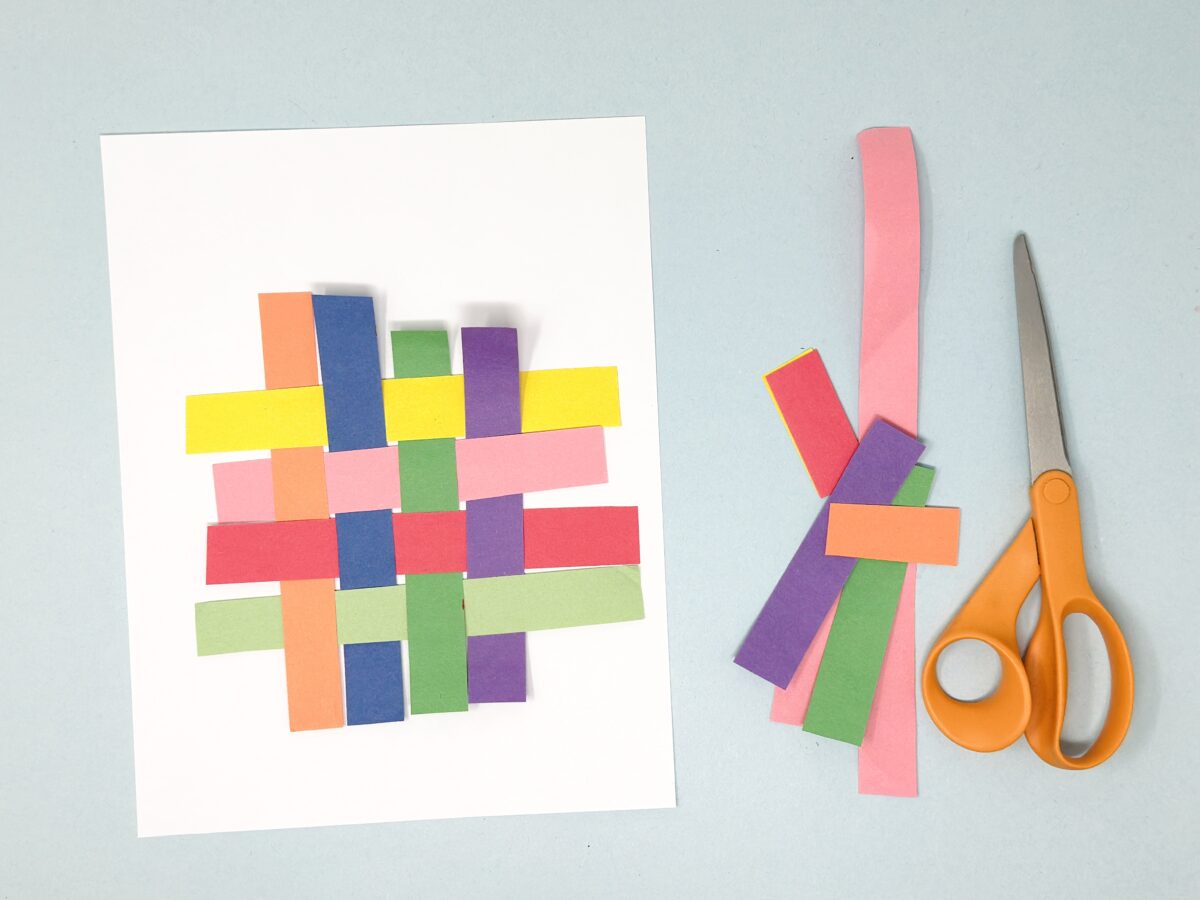
Weave together a variety of colored paper to create this vibrant letter W craft.
Required Materials
- a variety of colored paper
- scissors
- glue
How To
Have your child pick out at least 3 different colors of paper and cut each sheet into one inch strips (this is a great way to use up leftover scraps of colored paper).
Line up four strips of paper vertically and then place another four strips of paper on top of them horizontally. Weave the horizontal strip over and under the vertical strips one by one and glue them into place.
5. W is for Worm
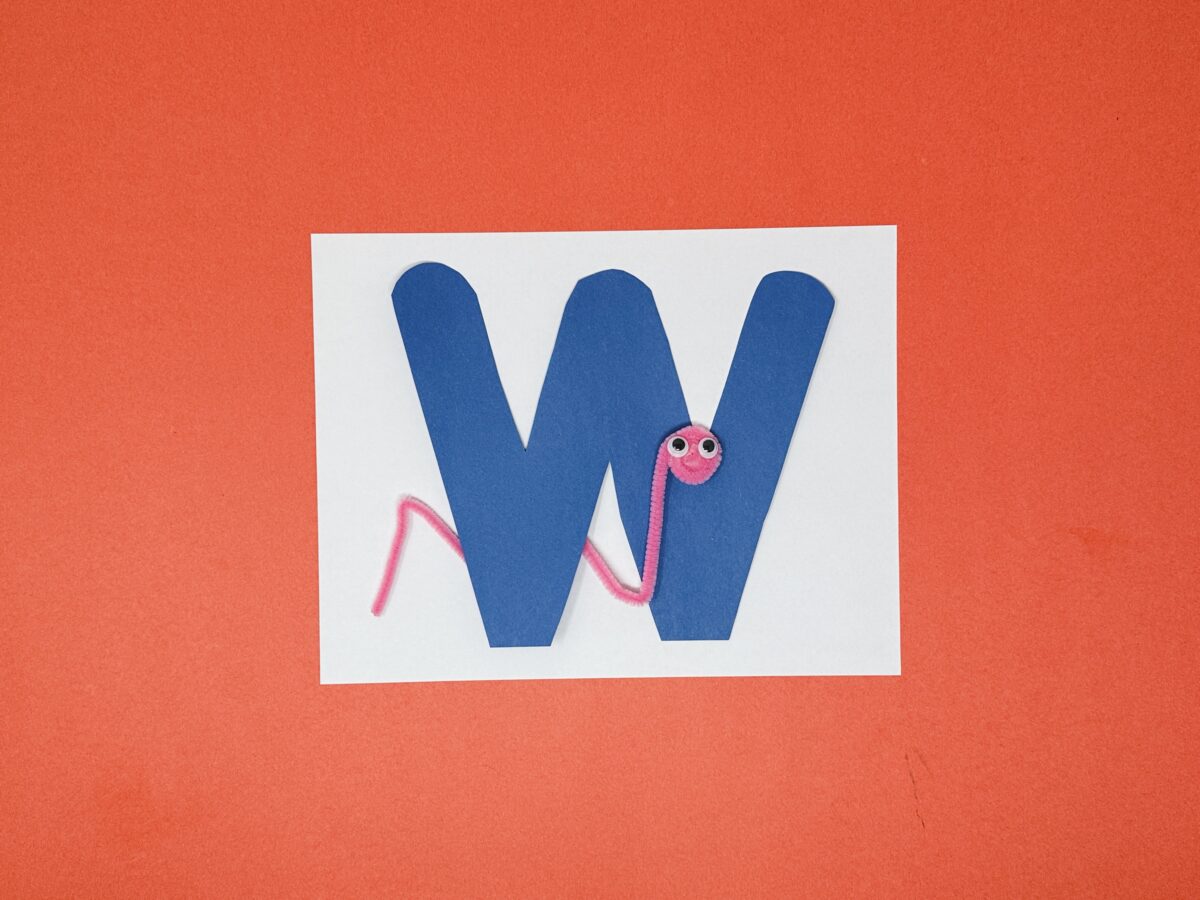
A cute and wiggly worm peeks out from behind a W in this simple activity.
Required Materials
- blue paper
- pink pipe cleaners
- googly eyes
How To
Draw or print out the outline of a letter W onto a piece of colored paper. Have your child cut it out. Next, tightly roll up one end of a pink pipe cleaner, forming the head of your worm. Bend the remaining length of the pipe cleaner to form a wiggly worm body. Tuck the pink worm under the W and glue them into place. Finally, glue on googly eyes to give your cute worm a silly face!
6. W is for Web
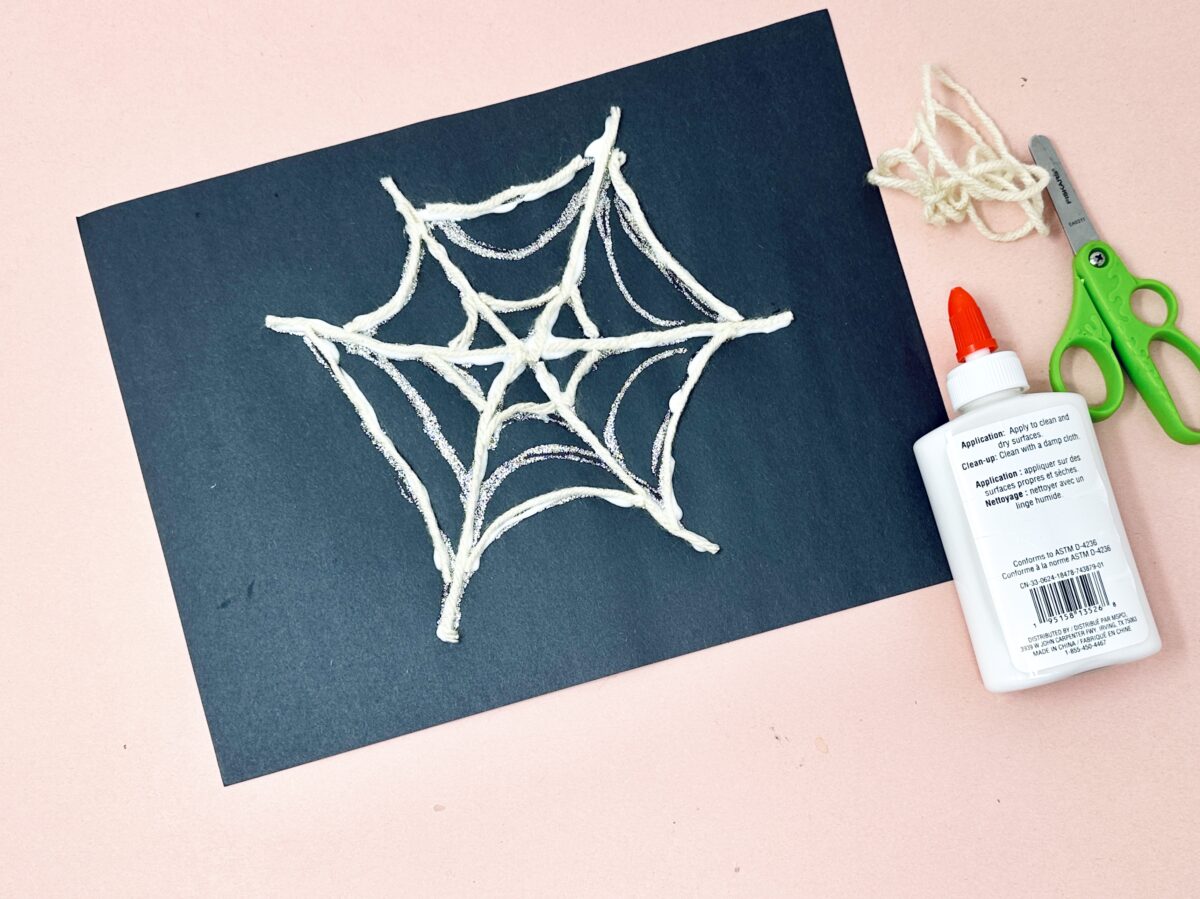
Paper, string, and glue are all you need to create this wonderful web!
Required Materials
- black paper
- yarn or string
- pencil
- liquid glue
- scissors
How To
Begin by cutting string or yarn into various lengths. Then, have your child use a pencil to draw a web onto the black sheet of paper. Once they’re happy with their web, have them trace over it with liquid glue and then set pieces of string on top of the glue. Let the web dry completely before hanging it up!
7. W is for Whale
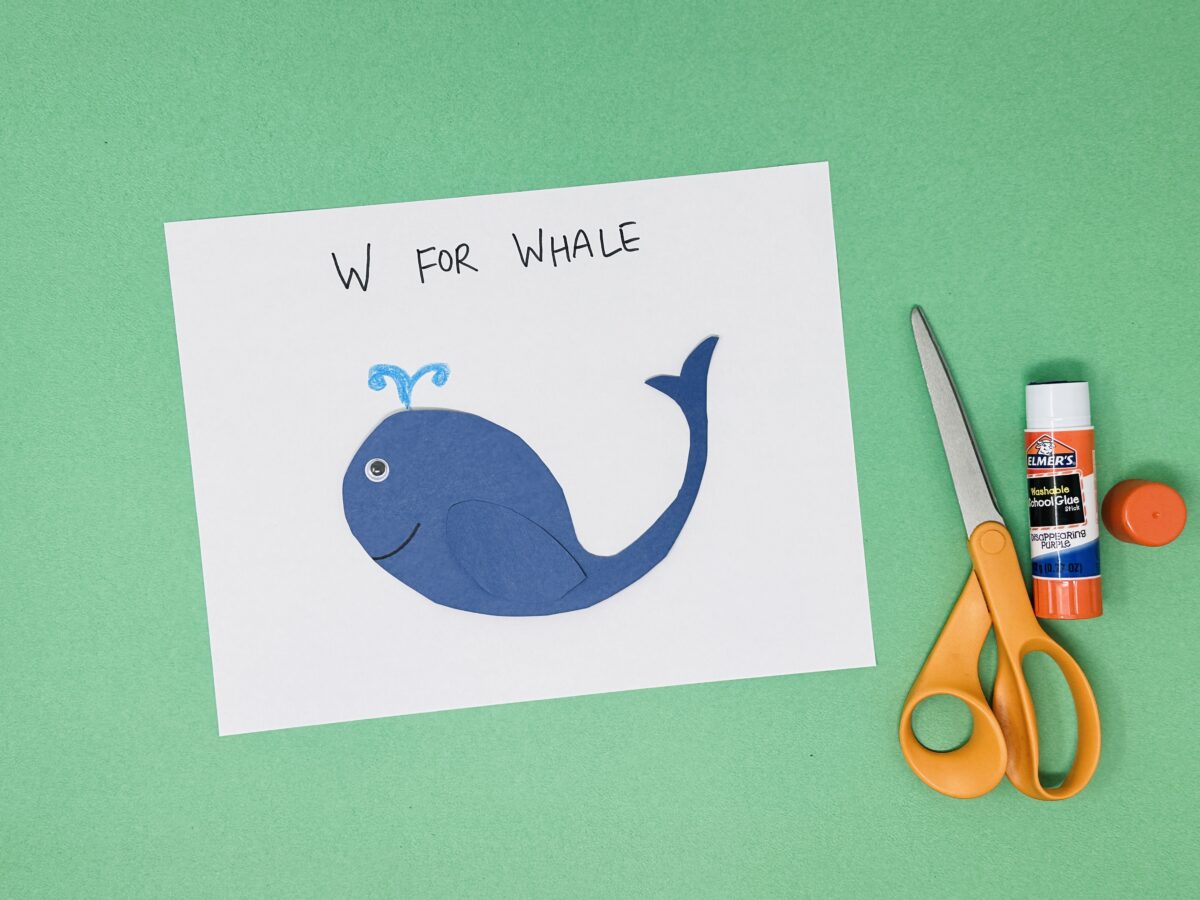
Create a whopper of a whale with just a few snips from a scissors.
Required Materials
- blue paper
- scissors
- glue
- blue and black marker
- googly eye
How To
Use a pencil to draw the shape of a whale’s body onto a piece of blue paper, creating one large oval section that turns into a long thin tail. Then cut out a fin from the same paper. Have your child glue these pieces down and create the whale’s face with markers and a googly eye. Draw in a spout of water coming out of the whale’s blow hole.
8. W is for Watercolors
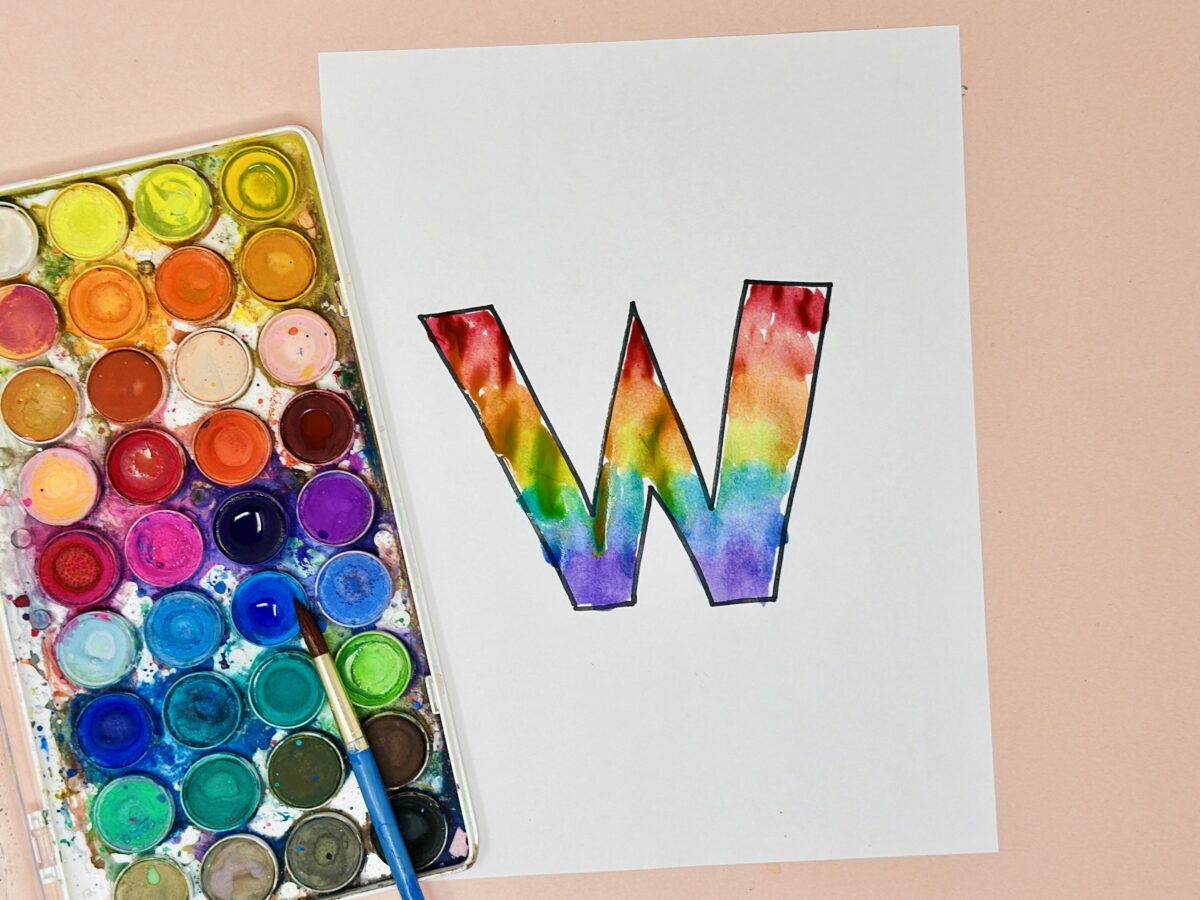
This painting craft fills the letter W with a wide variety of colors!
Required Materials
- watercolor paint
- paint brush
- thicker paper or card stock
- marker
How To
Draw the outline of a letter W onto a thicker piece of paper or card stock. Ask your child to fill in the W with their watercolor paints, noting how the different colors blend together, especially when they’re more wet.
9. W is for Watermelon
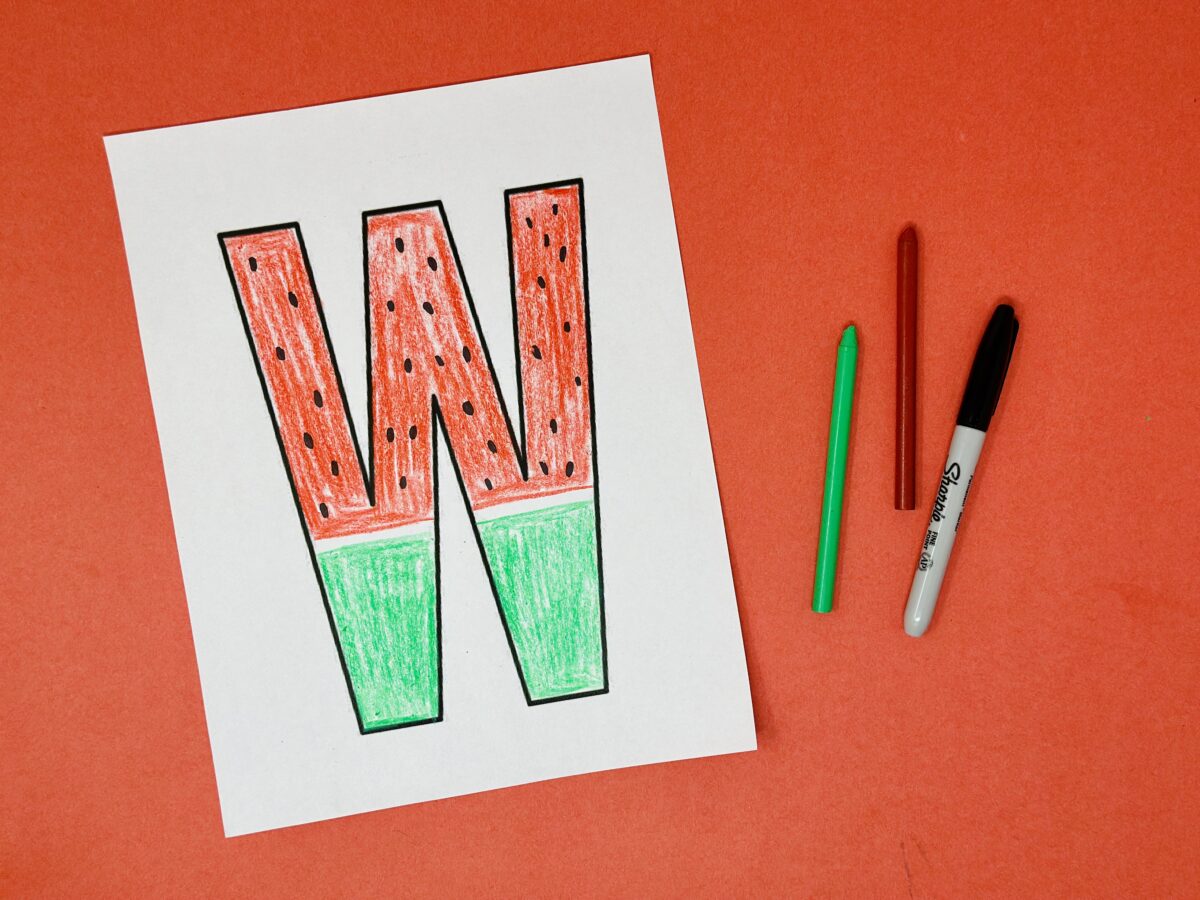
The letter W turns into a whole watermelon slice in no time!
Required Materials
- paper
- red, green, and black markers, crayons, or pencils
How To
Draw or print out the outline of a letter W onto a piece of paper. Have your child fill the bottom third of the W with green, creating the watermelon’s rind. Leave a tiny bit of white space and then fill in the rest of the W with red, creating the yummy part you eat. Add seeds with the black marker, completing the look of your letter W watermelon!
10. W is for White
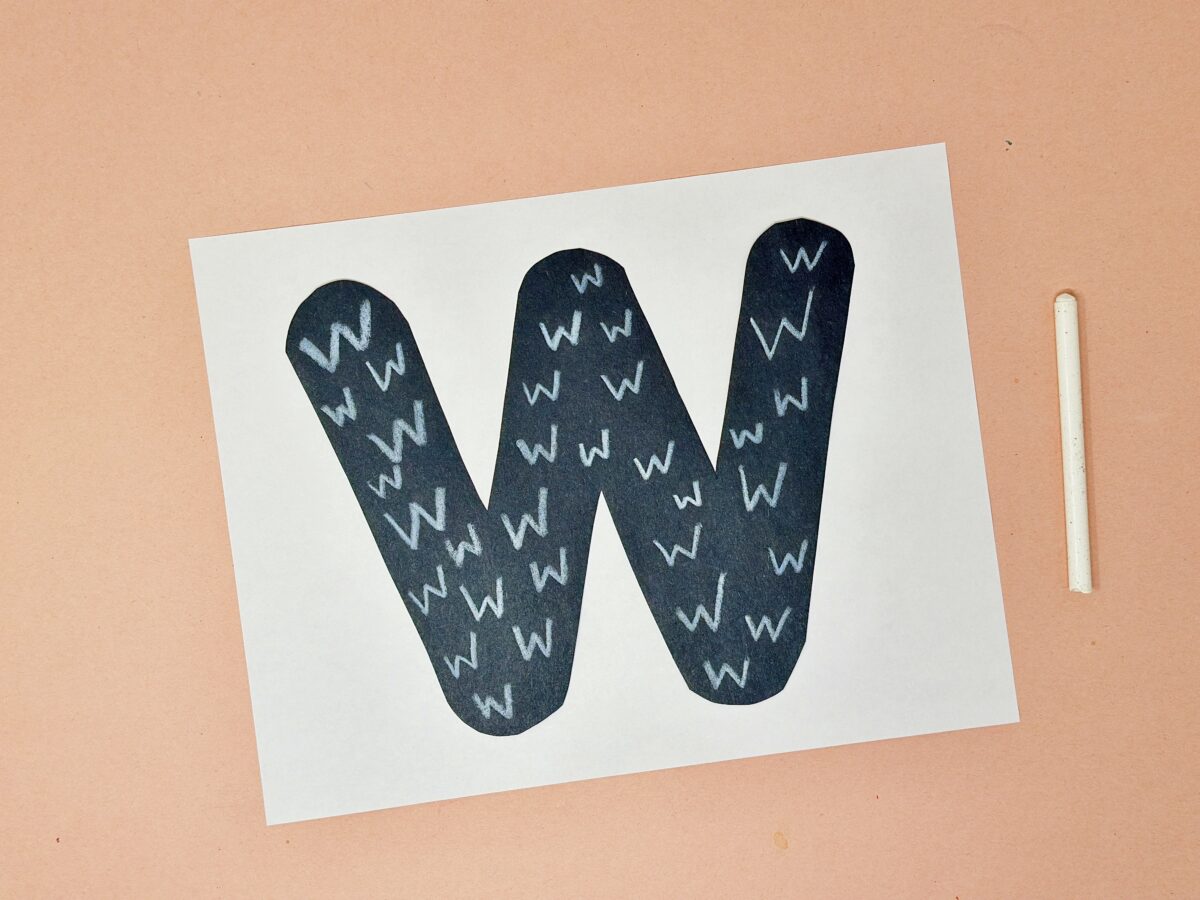
Practice writing the letter W while learning the color white!
Required Materials
- colored paper
- white crayon
How To
Draw or print out the letter W onto a dark piece of paper. Ask your child to use a white crayon to fill the W with as many letter Ws as possible. Discuss the shape and sound of the letter W as your child works.
More Letter W Fun
Delight your child with more fun ways to explore the letter W, including:
The ideas, pictures, and copy for this post were provided by Smitha Katti from smilingcolors.com
-
Letter X Crafts and Activities for Preschoolers
Explore fun, hands-on letter X crafts and activities perfect for preschool learning with simple supplies and free printables.
-
Letter W Crafts & Activities for Preschoolers
Explore 10 whimsical letter W crafts for preschoolers using simple materials—fun, hands-on activities that spark creativity and support letter learning.
-
Letter V Crafts & Activities for Preschoolers
Explore fun, hands-on crafts for the letter V—perfect for preschoolers learning through creative alphabet activities and art projects.
-
Letter U Crafts and Activities
Make learning the letter U fun with engaging crafts and activities for preschoolers! From unicorns to umbrellas, explore creative hands-on projects today.
-
Letter T Crafts and Activities
Make learning the letter T fun with hands-on crafts! From tigers to trains, these easy preschool activities help kids recognize and practice the letter T.
-
Letter S Crafts and Activities
Explore fun and engaging letter S crafts for preschoolers! From snakes to sunflowers, these hands-on activities make letter learning exciting and interactive.

